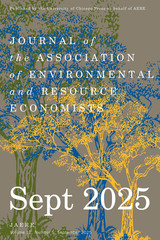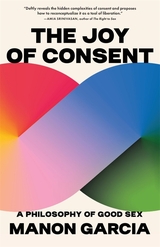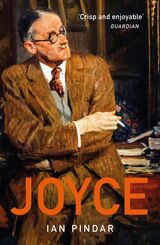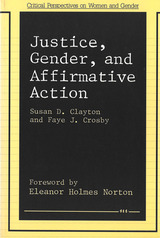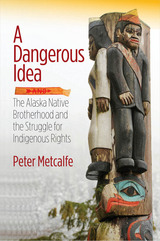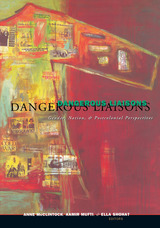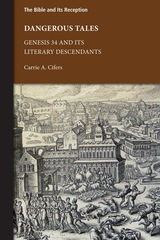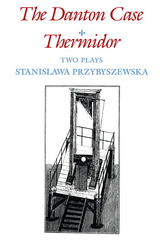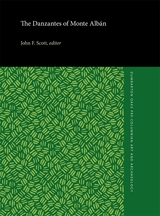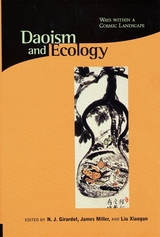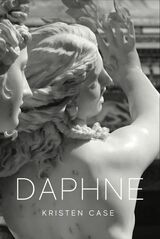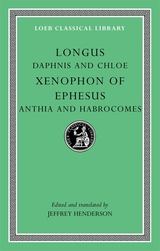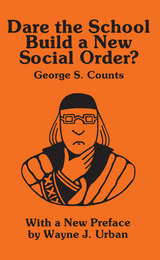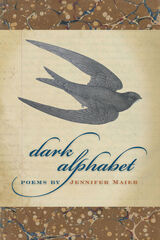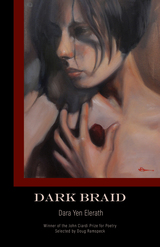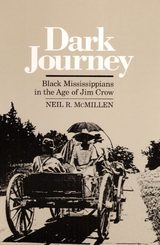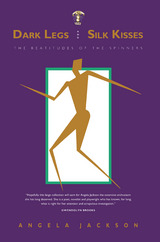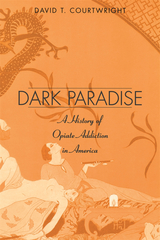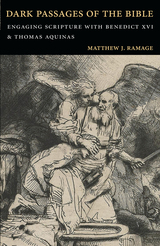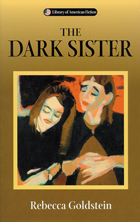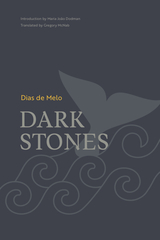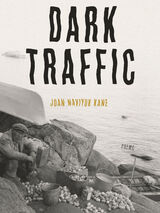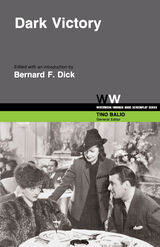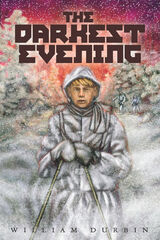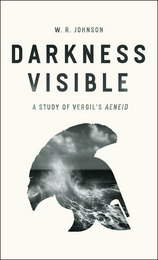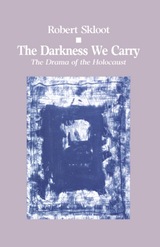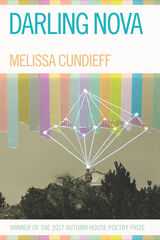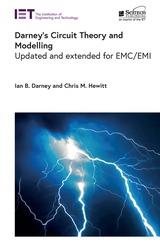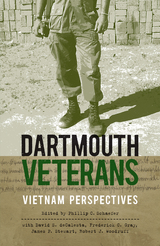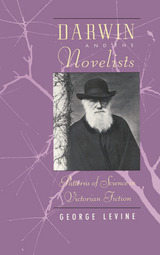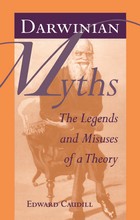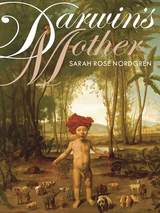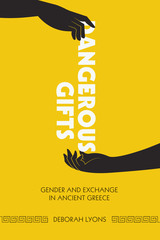 Dangerous Gifts: Gender and Exchange in Ancient Greece
By Deborah Lyons
University of Texas Press, 2012 Deianeira sends her husband Herakles a poisoned robe. Eriphyle trades the life of her husband Amphiaraos for a golden necklace. Atreus’s wife Aerope gives away the token of his sovereignty, a lamb with a golden fleece, to his brother Thyestes, who has seduced her. Gifts and exchanges always involve a certain risk in any culture, but in the ancient Greek imagination, women and gifts appear to be a particularly deadly combination. This book explores the role of gender in exchange as represented in ancient Greek culture, including Homeric epic and tragedy, non-literary texts, and iconographic and historical evidence of various kinds. Using extensive insights from anthropological work on marriage, kinship, and exchange, as well as ethnographic parallels from other traditional societies, Deborah Lyons probes the gendered division of labor among both gods and mortals, the role of marriage (and its failure) in transforming women from objects to agents of exchange, the equivocal nature of women as exchange-partners, and the importance of the sister-brother bond in understanding the economic and social place of women in ancient Greece. Her findings not only enlarge our understanding of social attitudes and practices in Greek antiquity but also demonstrate the applicability of ethnographic techniques and anthropological theory to the study of ancient societies.
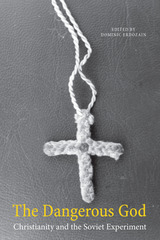 The Dangerous God: Christianity and the Soviet Experiment
Dominic Erdozain
Northern Illinois University Press, 2017 At the heart of the Soviet experiment was a belief in the impermanence of the human spirit: souls could be engineered; conscience could be destroyed. The project was, in many ways, chillingly successful. But the ultimate failure of a totalitarian regime to fulfill its ambitions for social and spiritual mastery had roots deeper than the deficiencies of the Soviet leadership or the chaos of a “command” economy. Beneath the rhetoric of scientific communism was a culture of intellectual and cultural dissidence, which may be regarded as the “prehistory of perestroika.” This volume explores the contribution of Christian thought and belief to this culture of dissent and survival, showing how religious and secular streams of resistance joined in an unexpected and powerful partnership.
The essays in The Dangerous God seek to shed light on the dynamic and subversive capacities of religious faith in a context of brutal oppression, while acknowledging the often-collusive relationship between clerical elites and the Soviet authorities. Against the Marxist notion of the “ideological” function of religion, the authors set the example of people for whom faith was more than an opiate; against an enduring mythology of secularization, they propose the centrality of religious faith in the intellectual, political, and cultural life of the late modern era. This volume will appeal to specialists on religion in Soviet history as well as those interested in the history of religion under totalitarian regimes.
A Dangerous Idea: The Alaska Native Brotherhood and the Struggle for Indigenous Rights
Peter Metcalfe
University of Alaska Press, 2014 Decades before the marches and victories of the 1960s, a group of Alaska Natives were making civil rights history. Throughout the early twentieth century, the Alaska Native Brotherhood fought for citizenship, voting rights, and education for all Alaska Natives, securing unheard-of victories in a contentious time. Their unified work and legal prowess propelled the Alaska Native Claims Settlement Act, one of the biggest claim settlements in United States history.
A Dangerous Idea tells an overlooked but powerful story of Alaska Natives fighting for their rights under American law and details one of the rare successes for Native Americans in their nearly two-hundred-year effort to define and protect their rights.
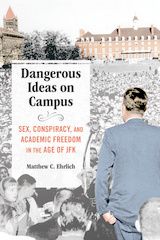 Dangerous Ideas on Campus: Sex, Conspiracy, and Academic Freedom in the Age of JFK
Matthew C. Ehrlich
University of Illinois Press, 2021 In 1960, University of Illinois professor Leo Koch wrote a public letter condoning premarital sex. He was fired. Four years later, a professor named Revilo Oliver made white supremacist remarks and claimed there was a massive communist conspiracy. He kept his job. Matthew Ehrlich revisits the Koch and Oliver cases to look at free speech, the legacy of the 1960s, and debates over sex and politics on campus. The different treatment of the two men marked a fundamental shift in the understanding of academic freedom. Their cases also embodied the stark divide over beliefs and values--a divide that remains today. Ehrlich delves into the issues behind these academic controversies and places the events in the context of a time rarely associated with dissent, but in fact a harbinger of the social and political upheavals to come. An enlightening and entertaining history, Dangerous Ideas on Campus illuminates how the university became a battleground for debating America's hot-button issues.
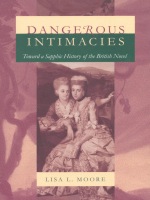 Dangerous Intimacies: Toward a Sapphic History of the British Novel
Lisa L. Moore
Duke University Press, 1997 Refuting commonly held beliefs within women’s and lesbian history, feminist theory, and histories of the novel, Dangerous Intimacies challenges the idea that sex between women was unimaginable in British culture before the late nineteenth century. Lisa L. Moore argues that literary representations of female sexual agency—and in particular "sapphic" relationships between women—were central to eighteenth-century debates over English national identity. Moore shows how the novel’s representation of women’s "romantic friendships"—both platonic and sexual—were encoded within wider social concerns regarding race, nation, and colonialist ventures.
Moore demonstrates that intimacy between women was vividly imagined in the British eighteenth century as not only chaste and virtuous, but also insistently and inevitably sexual. She looks at instances of sapphism in such novels as Millenium Hall, Memoirs of a Woman of Pleasure, Belinda, and Emma and analyzes how the new literary form of the novel made the bourgeois heroine’s successful negotiation of female friendship central to the establishment of her virtue. Moore also examines representations of sapphism through the sweeping economic and political changes of the period and claims that middle-class readers’ identifications with the heroine’s virtue helped the novel’s bourgeois audience justify the violent bases of their new prosperity, including slavery, colonialism, and bloody national rivalry.
In revealing the struggle over sapphism at the heart of these novels of female friendship—and at the heart of England’s national identity—Moore shows how feminine sexual agency emerged as an important cultural force in post-Enlightenment England
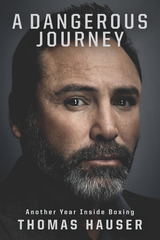 A Dangerous Journey: Inside Another Year in Boxing
Thomas Hauser
University of Arkansas Press, 2019 Each year, readers, writers, and critics alike look forward to Thomas Hauser’s newest collection of articles about the contemporary boxing scene. Reviewing his 2018 collection, Booklist proclaimed, “This is Hauser in a nutshell: compassion, character, and context. As always, an annual delight.”
A Dangerous Journey continues Hauser’s tradition of excellence, turning his award-winning investigative reporting skills on the scandal surrounding the use of illegal performance enhancing drugs and the failures of corrupt and incompetent state athletic commissions. Hauser also takes readers into Canelo Alvarez’s dressing room in the hours before and after his rematch against Gennady Golovkin, the biggest fight of the year, and offers in-depth portraits of boxing’s biggest stars—past and present—as well as reflections on fight-related curiosities ranging from Ronda Rousey to David and Goliath.
Thirty-five years ago, Hauser began writing about boxing with his superb The Black Lights, which has long been regarded as a boxing classic. He only gets better.
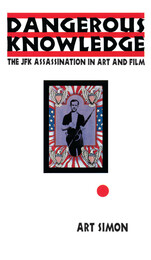 Dangerous Knowledge
Art Simon
Temple University Press, 1996 Association of American University Presses Book Jacket Award, 1996
"Beginning with a description of a poster for a punk band and ending with a critique of the movie JFK, this work marshals an impressive array of cultural information in attempting to provide an overall history of the genre. Simon closely examines images and films, relating them to the continuing struggle over the authoring and interpretation of the story of Kennedy's death."
--Library Journal
The assassination of John F. Kennedy provoked intense public debates and focused the world's attention on the recorded details of the event in still and moving images. Intense scrutiny of the testimony and images became a national obsession. Dangerous Knowledge argues that the very currents that powered the debates also prompted a crisis in interpretation that profoundly affected American culture.
From 1963 to the present day, amateur sleuths have proposed compelling theories of who was responsible for Kennedy's death and why. In the process they entered into an ongoing struggle centered in questions of authority: Who has access to evidence and the power to interpret history? What is the relation of photographs and films to the writing of history? To show how this struggle literally changed history and figured in the avant-garde's artistic production, Art Simon considers a wide range of cultural work shaped by the assassination.
Simon reveals the influence of the assassination theorists on commercial films such as JFK and Parallax View and shows how the images that blanketed the media resurfaced in Andy Warhol's silk screens, work and underground film of Bruce Conner, and other 1960s artists where they become vehicles for challenging the truth value of photographs or the public's endless fascination with celebrities.
"This history of the representation of the JFK assassination makes a terrific contribution to film studies and indeed to cultural studies generally. Moving with wit and erudition across political history, avant-garde film, serigraphy, journalism, and mass-market film, Simon transcends the banalities of the high culture/low culture binary to produce a study of exemplary range and insight."
--David E. James, School of Cinema-Television, University of Southern California
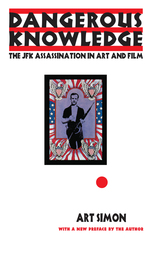 Dangerous Knowledge: The JFK Assassination in Art and Film
Art Simon
Temple University Press, 2013 Fifty years ago, the assassination of John F. Kennedy shocked the world and focused attention to the 8mm footage shot by Abraham Zapruder. The event fueled conspiracy theories and repeated viewings of Zapruder's film as seemingly everyone in the world searched for motive and conclusive proof of a single gunman.
In his new Preface to this edition of Dangerous Knowledge, Art Simon discusses public fascination with celebrity deaths and recent assassination-related media-from documentaries to scholarly books to the scandalous video game JFK Reloaded-to show that the assassination continues to inspire writers, artists, and filmmakers.
Dangerous Knowledge examines the seminal works of art associated with the assassination, including Andy Warhol's silk screens, the underground films of Bruce Conner, and provocative Hollywood films like The Parallax View and JFK. Simon's investigation places assassination art and images within a historical context-one that helps us understand what the assassination has meant to American culture.
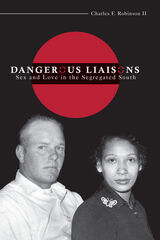 Dangerous Liaisons: Sex and Love in the Segregated South
Charles F. Robinson II
University of Arkansas Press, 2003 In the tumultuous decades after the Civil War, as the southern white elite reclaimed power, “racial mixing” was the central concern of segregationists who strove to maintain “racial purity.” Segregation—and race itself—was based on the idea that interracial sex posed a biological threat to the white race. In this groundbreaking study, Charles Robinson examines how white southerners enforced anti-miscegenation laws. His findings challenge conventional wisdom, documenting a pattern of selective prosecution under which interracial domestic relationships were punished even more harshly than transient sexual encounters. Robinson shows that the real crime was to suggest that black and white individuals might be equals, a notion which undermined the legitimacy of the economic, political, and social structure of white male supremacy. Robinson examines legal cases from across the South, considering both criminal prosecutions brought by states and civil disputes over marital and family assets. He also looks at U.S. Supreme Court decisions, debates in state legislatures, comments in the U.S. Congressional Record, and newspaper editorials. He not only shows the hardening of racial categories but assesses the attitudes of African Americans about anti-miscegenation laws and intermarriage. The epilogue concerns “The Demise of Anti-miscegenation Law” including the case of Richard and Mildred Loving. Dangerous Liaisons vividly documents the regulation of intimacy and its fundamental role in the construction of race.
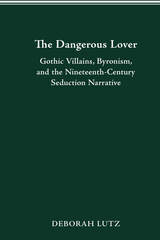 The Dangerous Lover: Gothic Villains, Byronism, and the Nineteenth-Century Seduction Narrative
Deborah Lutz
Ohio State University Press, 2006 The dangerous lover has haunted our culture for over two hundred years; English, American, and European literature is permeated with his erotic presence. The Dangerous Lover takes seriously the ubiquity of the brooding romantic hero—his dark past, his remorseful and rebellious exile from comfortable everyday living. Deborah Lutz traces the recent history of this figure, through the melancholy iconoclasm of the Romantics, the lost soul redeemed by love of the Brontës, and the tormented individualism of twentieth-century love narratives. Arguing for this character’s central influence not only in literature but also in the history of ideas, this book places the dangerous lover firmly within the philosophy of Martin Heidegger, the Modernism of Georg Lukács, and Roland Barthes’s theories on love and longing. Working with canonical authors such as Ann Radcliffe, Charles Maturin, Lord Byron, Charles Dickens, George Eliot, and Oscar Wilde, and also with non-canonical texts such as contemporary romance, The Dangerous Lover combines a lyrical, essayistic style with a depth of inquiry that raises questions about the mysteries of desire, death, and eroticism. The Dangerous Lover is the first book-length study of this pervasive literary hero; it also challenges the tendency of sophisticated philosophical readings of popular narratives and culture to focus on male-coded genres. In its conjunction of high and low literary forms, this volume explores new historical and cultural framings for female-coded popular narratives.
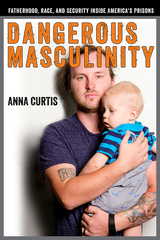 Dangerous Masculinity: Fatherhood, Race, and Security Inside America's Prisons
Anna Curtis
Rutgers University Press, 2019 For incarcerated fathers, prison rather than work mediates access to their families. Prison rules and staff regulate phone privileges, access to writing materials, and visits. Perhaps even more important are the ways in which the penal system shapes men’s gender performances. Incarcerated men must negotiate how they will enact violence and aggression, both in terms of the expectations placed upon inmates by the prison system and in terms of their own responses to these expectations. Additionally, the relationships between incarcerated men and the mothers of their children change, particularly since women now serve as “gatekeepers” who control when and how they contact their children. This book considers how those within the prison system negotiate their expectations about “real” men and “good” fathers, how prisoners negotiate their relationships with those outside of prison, and in what ways this negotiation reflects their understanding of masculinity.
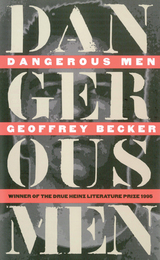 Dangerous Men
Geoffrey Becker
University of Pittsburgh Press, 1995 Geoffrey Becker’s Dangerous Men was selected by Charles Baxter as the winner of the fifteenth annual Drue Heinz Literature Prize. His manuscript was selected from nearly three hundred submitted by published writers.
In these tightly drafted stories, Becker creates a wide variety of distinct voices, peculiar characters, and odd stettings, with tantalizing emphasis on lonliness, loss, and the ever-present struggle to find one’s place in the world. “It was wrong to think that our presence would linger on, though it was to this notion that I realized I’d been grasping all along,” the music-student narrator of “Dangerous Men” says after an evening involving drugs, a fight, and a car accident, “the idea that in some way we were etching ourselves onto the air, leaving shadows that would remain forever.”
Many of the pieces incorporate music into the storyline. Music is a gathering point in his characters’ misfit lives. In “Magister Ludi,” a seventeen-year-old girl meets up with an older local guitarist whom her younger brother has invited over to their house when their parents are gone, and plays him for her own ends: “She makes Riggy drive right through the center of town, hoping that someone will see them - one of her friends, or one of her parents’ friends even, it doesn’t matter. She just likes the idea of being spotted in this beat-up car alongside someone so disreputable.”
In “Erin and Malcom,” a bass player with an injured hand who still lives with his estranged wife, a singer, and her pet ferret, finds out how out of tune his life really is: “Something has gone wrong - he could see it in the way she looked at him over her morning bowl of cereal, and the way she didn’t as she peeled herself out of her Lycra pants and leopard shirts at night.”
Yet , even when the music seems quiet, there are tales of choice and happenstance. “El Diablo de La Cienega,” set in New Mexico, is about a boy who accepts the challenge of a mysterious figure to a game of basketball, for very high stakes indeed. Charles Baxter - one of America’s great story writers - calls the story “a small masterpiece. It has formal perfection, like a folktale. I thought it was wonderful.”
With leaps from the funny to the sad and the revelatory, these amazing stories explore dreams and longing with remarkable insight and imagination. These are stories you will not forget.
 Dangerous Offenders: The Elusive Target of Justice
Mark H. Moore, Susan Estrich, Daniel McGillis, and William Spelman
Harvard University Press, 1984 Americans rank crime among the most urgent of social concerns. Overflowing prisons and public outcry have led many to propose that the criminal justice system could control crime more effectively by focusing on dangerous offenders.
Recent social studies have suggested that serious criminality is highly concentrated and that high-rate offenders can be distinguished from others on the basis of prior criminal conduct, drug abuse, and employment record. Such studies urge judges to shift from rehabilitative sentencing to selective incapacitation, with longer prison sentences for convicted criminals who are deemed unusually dangerous. In response to these recommendations, some prosecutors' offices have established career criminal units designed to assure that repeat offenders will be prosecuted to the full measure of the law. Some police departments are experimenting with "perpetrator-oriented patrols" targeted on suspected high-rate offenders.
The authors of this major book in criminal jurisprudence describe and analyze the intellectual and social challenge posed to public officials by this new thrust in criminal justice policy. They develop a framework for evaluating policies that focus on dangerous offenders. They first examine the general issues that arise as society considers the benefits and risks of concentrating on a particular category of criminals. They then outline how that approach might work at each stage of the criminal justice system--sentencing, pretrial detention, prosecution, and investigation.
This cogently argued book provides much needed guidance on the crucial questions of whether sharpened attention to dangerous offenders is just, whether such a policy can be effective in managing the problem of crime, which applications seem particularly valuable, what the long-term risks to social institutions are, and what uncertainties must be monitored and resolved as the policy evolves.
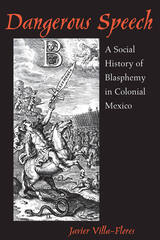 Dangerous Speech: A Social History of Blasphemy in Colonial Mexico
Javier Villa-Flores
University of Arizona Press, 2006 Dangerous Speech is the first systematic treatment of blasphemous speech in colonial Mexico. This engaging social history examines the representation of blasphemy as a sin and a crime, and its repression by the Spanish Inquisition. The Spanish colonists viewed blasphemy not only as an insult against God but also as a dangerous misrepresentation of the deity, which could call down his wrath in a ruinous assault on the imperial enterprise.
Why then, asks Villa-Flores, did Spaniards dare to blaspheme? Having mined the period’s moral literature—philosophical works as well as royal decrees and Inquisition treatises and trial records in Spanish, Mexican, and U.S. archives and research libraries—Villa-Flores deftly interweaves images of daily life in colonial Mexico with vivid descriptions of human interactions to illustrate the complexity of a culture profoundly influenced by the Catholic Church. In entertaining and sometimes horrifying vignettes, the reader comes face to face with individuals who used language to assert or manipulate their identities within that repressive society.
Villa-Flores offers an innovative interpretation of the social uses of blasphemous speech by focusing on specific groups—conquistadors, Spanish settlers, Spanish women, and slaves of both genders—as a lens to examine race, class, and gender relations in colonial Mexico. He finds that multiple motivations led people to resort to blasphemy through a gamut of practices ranging from catharsis and gender self-fashioning to religious rejection and active resistance.
Dangerous Speech is a valuable resource for students and scholars of colonialism, the social history of language, Mexican history, and the changing relations of gender, class, and ethnicity in colonial Latin America.
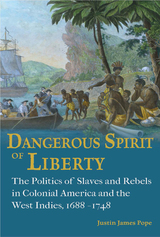 Dangerous Spirit of Liberty: The Politics of Slaves and Rebels in Early America and the West Indies, 1688-1748
Justin James Pope
University of Missouri Press, 2024 Justin Pope’s ground-breaking work tells the story of an era of slave unrest that swept through the Atlantic World in the first half of the eighteenth century. Provinces along the eastern coast of North America and around the Caribbean Sea experienced more insurrections and conspiracy trials in the 1730s and 1740s than in any period before the Age of Revolution. The governor of Jamaica warned his king that slaves were spreading a “dangerous Spirit of Liberty” throughout the West Indies, concerns echoed by European colonists on the northern mainland. African-born slaves rose in rebellion and captured the Danish island of Saint John, and Maroons waged a successful war in Jamaica, events that became news in the wider Atlantic World. By the early 1740s, word of emancipation and widespread rebellion had taken hold in slave communities from the coast of South America to the harbors of New York City. Colonial authorities responded to rumors of slave plotting with brutal conspiracy trials, exhorting false confessions and executing hundreds of men and women in travesties of justice in need of retelling. Scholars have long noted this period of intensified slave unrest, not unlike the era of the Haitian Revolution, but no one has conducted a full-length study of this early tumult across empires. This book explains the causes behind this rash of insurrections, both real and imagined, and explores the consequences for the peoples of the eighteenth-century Atlantic World.
Dangerous Spirit of Liberty's distinguishing feature is its focus on the role of communication in the development of a rebellious early eighteenth-century Atlantic. Most historians of slavery have presupposed that slave unrest was confined to small locales in the first half of the eighteenth century. In fact, slaves found ways to share news across provinces to great effect. Benefiting from research in the archives of Great Britain, Spain, Barbados, Bermuda, Jamaica, Antigua, the U.S. Virgin Islands, and the mainland United States, the book reveals new evidence of slave communication networks and shows how people of African ancestry shared rumors of emancipation and rebellion in this period. Slaves laboring in colonial commerce and working aboard ships helped foster an increasingly restive Black community. Banished slaves, convicted conspirators accused of plotting insurrection, carried their experiences with them in exile to neighboring colonies. By reconstructing the path of news, the book reveals rumors and reports that particularly resonated among slaves in the early eighteenth century.
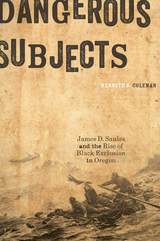 Dangerous Subjects: James D. Saules and the Rise of Black Exclusion in Oregon
Kenneth R. Coleman
Oregon State University Press, 2017 Dangerous Subjects describes the life and times of James D. Saules, a black sailor who was shipwrecked off the coast of Oregon and settled there in 1841. Before landing in Oregon, Saules traveled the world as a whaleman in the South Pacific and later as a crew member of the United States Exploring Expedition. Saules resided in the Pacific Northwest for just two years before a major wave of Anglo-American immigrants arrived in covered wagons.
In Oregon, Saules encountered a multiethnic population already transformed by colonialism—in particular, the fur industry and Protestant missionaries. Once the Oregon Trail emigrants began arriving in large numbers, in 1843, Saules had to adapt to a new reality in which Anglo-American settlers persistently sought to marginalize and exclude black residents from the region. Unlike Saules, who adapted and thrived in Oregon’s multiethnic milieu, the settler colonists sought to remake Oregon as a white man’s country. They used race as shorthand to determine which previous inhabitants would be included and which would be excluded. Saules inspired and later had to contend with a web of black exclusion laws designed to deny black people citizenship, mobility, and land.
In Dangerous Subjects, Kenneth Coleman sheds light on a neglected chapter in Oregon’s history. His book will be welcomed by scholars in the fields of western history and ethnic studies, as well as general readers interested in early Oregon and its history of racial exclusion.
 Dangerous Supplements: Resistance and Renewal in Jurisprudence
Peter Fitzpatrick, ed.
Duke University Press, 1991 In Dangerous Supplements expert legal scholars employing a variety of theoretical perspectives—feminism, poststructuralism, semiotics, and Marxism—challenge predominating views in jurisprudence. Prevailing notions of the nature of the law, they argue, have failed to recognize the law’s dependence on social constructs and the indeterminance of language. The contributors further claim that proponents of traditional notions have borrowed knowledge from other fields, only to reject that knowledge as ultimately subversive and dangerous in its ramifications.
Taking as a point of departure H. L. A. Hart’s The Concept of the Law, Peter Fitzgerald shows how Hart adopted Wittgenstein’s linguistic theory to overthrow J. L. Austin’s “simple” conception of rules and habits in law, only to jettison this theory in order to locate the essence of law in its evolution from a “primal scene.” Other chapters examine the way in which the setting of English law above social relations has masked an imperial mission; how the philosophies of Hayek and Marx, as well as the discourses of liberalism, feminism, semiotics, and poststructuralism, have been assiduously marginalized and rendered inessential to jurisprudence.
Dangerous Tales: Genesis 34 and Its Literary Descendants
Carrie A. Cifers
SBL Press, 2025 The biblical narrative of Israel’s only daughter Dinah is steeped in deception and violence, vengeance and destruction, and a silence that has posed interpretive problems for readers for more than two millennia. Carrie A. Cifers takes up the retellings of Genesis 34 in Josephus’s Jewish Antiquities, the book of Jubilees, and Joseph and Aseneth to explore how later authors tried to clarify the assumedly implicit ethical message of Dinah’s story. Through narrative ethics and socionarratology, Cifers demonstrates that biblical stories are a space of encounter where texts make claims on readers and where readers have an ethical responsibility as witnesses to the text. Dangerous Tales is a call for contemporary readers to engage biblical narratives in ways that mitigate interpretive violence and maximize each text’s ethical potential.
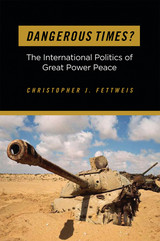 Dangerous Times?: The International Politics of Great Power Peace
Christopher J. Fettweis
Georgetown University Press, 2011 What horrors will the twenty-first century bring? For many people, a clash of civilizations and a perilous return to great power rivalries are the dominant visions of things to come. Fueled by daily headlines, overwhelming majorities of people from all walks of life consider the world to be a far more chaotic, frightening, and ultimately more dangerous place than ever before. Christopher J. Fettweis argues that these impressions, however widespread, are wrong. Dangerous Times? is an examination of international politics that reveals both theoretical logic and empirical data that support the vision of a future where wars between great powers are unlikely and transnational threats can be contained. Despite popular perception, today a far greater percentage of the world’s population lives in peace than at any time in history, and the number and intensity of all types of warfare have dropped steadily since the early 1990s. Terrorism, though reprehensible, can be combated and can actually increase international cooperation among states fighting a common threat. World wars like those of the twentieth century—the true clash of civilizations—are unlikely to be repeated in the close-knit world of the twenty-first century. In this sharp and insightful book, Fettweis discusses this revolution in human history and its ramifications for international relations theory. He suggests a new vision for a more restrained U.S. grand strategy and foreign policy and reveals how, despite pessimistic perceptions to the contrary, the world is more likely entering a golden age of peace and security.
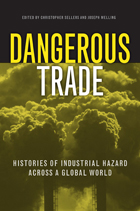 Dangerous Trade: Histories of Industrial Hazard across a Globalizing World
Christopher Sellers
Temple University Press, 2011 From anthrax to asbestos to pesticides, industrial toxins and pollutants have troubled the world for the past century and longer. Environmental hazards from industry remain one of the world's foremost killers.Dangerous Trade establishes historical groundwork for a better understanding of how and why these hazards continue to threaten our shrinking world. In this timely collection, an international group of scholars casts a rigorous eye towards efforts to combat these ailments. Dangerous Trade contains a wide range of case studies that illuminate transnational movements of risk—from the colonial plantations of Indonesia to compensation laws in late 19th century Britain, and from the occupational medicine clinics of 1960s New York City to the burning of electronic waste in early twenty-first century Uruguay. The essays in Dangerous Trade provide an unprecedented broad perspective of the dangers stirred up by industrial activity across the globe, as well as the voices rasied to remedy them.
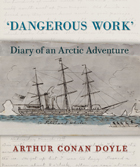 Dangerous Work: Diary of an Arctic Adventure
Arthur Conan Doyle
University of Chicago Press, 2012 In 1880 a young medical student named Arthur Conan Doyle embarked upon the “first real outstanding adventure” of his life, taking a berth as ship’s surgeon on an Arctic whaler, the Hope. The voyage took him to unknown regions, showered him with dramatic and unexpected experiences, and plunged him into dangerous work on the ice floes of the Arctic seas. He tested himself, overcame the hardships, and, as he wrote later, “came of age at 80 degrees north latitude.” Conan Doyle’s time in the Arctic provided powerful fuel for his growing ambitions as a writer. With a ghost story set in the Arctic wastes that he wrote shortly after his return, he established himself as a promising young writer. A subsequent magazine article laying out possible routes to the North Pole won him the respect of Arctic explorers. And he would call upon his shipboard experiences many times in the adventures of Sherlock Holmes, who was introduced in 1887’s A Study in Scarlet. Out of sight for more than a century was a diary that Conan Doyle kept while aboard the whaler. Dangerous Work: Diary of an Arctic Adventure makes this account available for the first time in a beautiful facsimile edition that reproduces Conan Doyle’s notebook pages in his own elegant hand, accompanied by his copious illustrations. With humor and grace, Conan Doyle provides a vivid account of a long-vanished way of life at sea. His careful detailing of the experience of arctic whaling is equal parts fascinating and alarming, revealing the dark workings of the later days of the British whaling industry. In addition to the facsimile and annotated transcript of the diary, the volume contains photographs of the Hope, its captain, and a young Conan Doyle on deck with its officers; two nonfiction pieces by Doyle about his experiences; and two of his tales inspired by the journey. To the end of his life, Conan Doyle would look back on this experience with awe: “You stand on the very brink of the unknown,” he declared, “and every duck that you shoot bears pebbles in its gizzard which come from a land which the maps know not. It was a strange and fascinating chapter of my life.” Only now can the legion of Conan Doyle fans read and enjoy that chapter. A special limited, numbered edition of the clothbound book is also available. In addition, a text-only e-book edition is published as Dangerous Work: Diary of an Arctic Adventure, Text-only Edition.
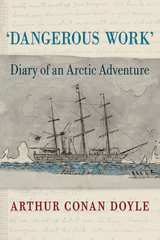 Dangerous Work: Diary of an Arctic Adventure, Text-only Edition
Arthur Conan Doyle
University of Chicago Press, 2012 This e-book features the complete text found in the print edition of Dangerous Work, without the illustrations or the facsimile reproductions of Conan Doyle's notebook pages. In 1880 a young medical student named Arthur Conan Doyle embarked upon the “first real outstanding adventure” of his life, taking a berth as ship’s surgeon on an Arctic whaler, the Hope. The voyage took him to unknown regions, showered him with dramatic and unexpected experiences, and plunged him into dangerous work on the ice floes of the Arctic seas. He tested himself, overcame the hardships, and, as he wrote later, “came of age at 80 degrees north latitude.” Conan Doyle’s time in the Arctic provided powerful fuel for his growing ambitions as a writer. With a ghost story set in the Arctic wastes that he wrote shortly after his return, he established himself as a promising young writer. A subsequent magazine article laying out possible routes to the North Pole won him the respect of Arctic explorers. And he would call upon his shipboard experiences many times in the adventures of Sherlock Holmes, who was introduced in 1887’s A Study in Scarlet. Out of sight for more than a century was a diary that Conan Doyle kept while aboard the whaler. Dangerous Work: Diary of an Arctic Adventure makes this account available for the first time. With humor and grace, Conan Doyle provides a vivid account of a long-vanished way of life at sea. His careful detailing of the experience of arctic whaling is equal parts fascinating and alarming, revealing the dark workings of the later days of the British whaling industry. In addition to the transcript of the diary, the e-book contains two nonfiction pieces by Doyle about his experiences; and two of his tales inspired by the journey. To the end of his life, Conan Doyle would look back on this experience with awe: “You stand on the very brink of the unknown,” he declared, “and every duck that you shoot bears pebbles in its gizzard which come from a land which the maps know not. It was a strange and fascinating chapter of my life.” Only now can the legion of Conan Doyle fans read and enjoy that chapter.
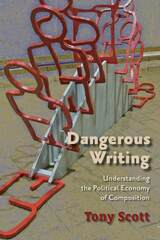 Dangerous Writing: Understanding the Political Economy of Composition
Tony Scott
Utah State University Press, 2009 Building on recent work in rhetoric and composition that takes an historical materialist approach, Dangerous Writing outlines a political economic theory of composition. The book connects pedagogical practices in writing classes to their broader political economic contexts, and argues that the analytical power of students’ writing is prevented from reaching its potential by pressures within the academy and without, that tend to wed higher education with the aims and logics of “fast-capitalism.”
Since the 1980s and the “social turn” in composition studies and other disciplines, scholars in this field have conceived writing in college as explicitly embedded in socio-rhetorical situations beyond the classroom. From this conviction develops a commitment to teach writing with an emphasis on analyzing the social and political dimensions of rhetoric.
Ironically, though a leftist himself, Tony Scott’s analysis finds the academic left complicit with the forces in American culture that tend, in his view, to compromise education. By focusing on the structures of labor and of institutions that enforce those structures, Scott finds teachers and administrators are too easily swept along with the inertia of a hyper-commodified society in which students---especially working class students---are often positioned as commodities, themselves. Dangerous Writing, then, is a critique of the field as much as it is a critique of capitalism. Ultimately, Scott’s eye is on the institution and its structures, and it is these that he finds most in need of transformation.
 Daniel DeLeon: The Odyssey of an American Marxist
L. Glen Seretan
Harvard University Press, 1979 This is the first authoritative biography of Daniel DeLeon, an enigmatic and compelling figure in the history of American Marxism. He was the leader of the Socialist Labor Party (for years the only active socialist party in America) and he was active in the Knights of Labor and the Industrial Workers of the World. He fought the “pure and simple” trade unionism of Samuel Gompers and founded the Socialist Trade and Labor Alliance as an alternative. He was, L. Glenn Seretan writes, “probably the most gifted and original Marxist intellectual to focus his attention on the problems attending revolution in the advanced capitalist civilization of the United States.”
Seretan sees Deleon's career centered in several contradictions. He was an avid foe of the Catholic Church, but he pretended to be a Venezuelan Catholic aristocrat descended from Ponce de Leon. He found a theme for his life, Seretan argues, in the legend of the Wandering Jew, and resolved the problem of his social identity by throwing himself into the work of socialism.
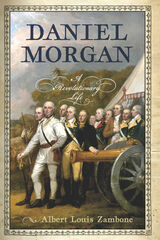 Daniel Morgan: A Revolutionary Life
Albert Louis Zambone
Westholme Publishing, 2018 A Major New Biography of a Man of Humble Origins Who Became One of the Great Military Leaders of the American Revolution
On January 17, 1781, at Cowpens, South Carolina, the notorious British cavalry officer Banastre Tarleton and his legion had been destroyed along with the cream of Lord Cornwallis’s troops. The man who planned and executed this stunning American victory was Daniel Morgan. Once a barely literate backcountry laborer, Morgan now stood at the pinnacle of American martial success. Born in New Jersey in 1736, he left home at seventeen and found himself in Virginia’s Shenandoah Valley. There he worked in mills and as a teamster, and was recruited for Braddock’s disastrous expedition to take Fort Duquesne from the French in 1755. When George Washington called for troops to join him at the siege of Boston in 1775, Morgan organized a select group of riflemen and headed north. From that moment on, Morgan’s presence made an immediate impact on the battlefield and on his superiors. Washington soon recognized Morgan’s leadership and tactical abilities. When Morgan’s troops blocked the British retreat at Saratoga in 1777, ensuring an American victory, he received accolades from across the colonies.
In Daniel Morgan: A Revolutionary Life, the first biography of this iconic figure in forty years, historian Albert Louis Zambone presents Morgan as the quintessential American everyman, who rose through his own dogged determination from poverty and obscurity to become one of the great battlefield commanders in American history. Using social history and other advances in the discipline that had not been available to earlier biographers, the author provides an engrossing portrait of this storied personality of America’s founding era—a common man in uncommon times.
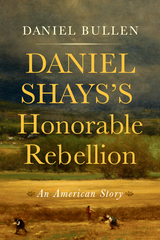 Daniel Shays's Honorable Rebellion: An American Story
Daniel Bullen
Westholme Publishing, 2024 On January 25, 1787, in Springfield, Massachusetts, militia Major General William Shepard ordered his cannon to fire grapeshot at a peaceful demonstration of 1,200 farmers approaching the federal arsenal. The shots killed four and wounded twenty, marking the climax of five months of civil disobedience in Massachusetts, where farmers challenged the state’s authority to seize their farms for flagrantly unjust taxes. Government leaders and influential merchants painted these protests as a violent attempt to overthrow the state, in hopes of garnering support for strengthening the federal government in a Constitutional Convention. As a result, the protests have been hidden for more than two hundred years under the misleading title, “Shays’s Rebellion, the armed uprising that led to the Constitution.” But this widely accepted narrative is just a legend: the “rebellion” was almost entirely nonviolent, and retired Revolutionary War hero Daniel Shays was only one of many leaders.
Daniel Shays’s Honorable Rebellion: An American Story by Daniel Bullen tells the history of the crisis from the protesters’ perspective. Through five months of nonviolent protests, the farmers kept courts throughout Massachusetts from hearing foreclosures, facing down threats from the government, which escalated to the point that Governor James Bowdoin ultimately sent an army to arrest them. Even so, the people won reforms in an electoral landslide.
Thomas Jefferson called these protests an honorable rebellion, and hoped that Americans would never let twenty years pass without such a campaign, to rein in powerful interests. This riveting and meticulously researched narrative shows that Shays and his fellow protesters were hardly a dangerous rabble, but rather a proud people who banded together peaceably, risking their lives for justice in a quintessentially American story.
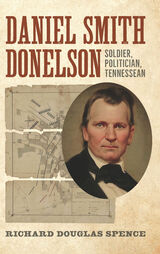 Daniel Smith Donelson: Soldier, Politician, Tennessean
Doug Spence
University of Tennessee Press, 2023 Daniel Smith Donelson was the grandson of two of early Middle Tennessee’s most famous founders—John Donelson and Daniel Smith—and nephew of Tennessee’s perhaps most famous soldier statesman, Andrew Jackson. And while Civil War historians are familiar with Donelson because he led a Confederate brigade, his namesake fort in Middle Tennessee, and his importance to the war effort as he transitioned into Confederate war administration, Donelson the significant son of Tennessee has eluded a full study, and no book-length biography has been published, until now.
Unfortunately, Daniel Smith Donelson left no body of papers, which leaves any biographers, as Richard Douglas Spence contends, to approach their subject through a “historical back door” via Donelson’s legendary uncle and his brother, Andrew Jackson Donelson, who enjoyed a significant political career in his own right. Spence’s biography begins with Donelson’s upbringing at the Hermitage after Donelson’s father died when he was three. From there Spence follows Donelson’s career as a planter, militiaman, state congressman, Civil War general, and finally an administrator overseeing the Confederate Department of East Tennessee. Fort Donelson was named in his honor, and his brigades fought at Cheat Mountain, Perryville, and Murfreesboro (Stones River). He was posthumously promoted to major general after dying of disease on April 17, 1863, at the age of sixty-one.
Spence’s approach reveals aspects of Donelson’s life and career that in many ways rival his Civil War record for importance, providing fresh perspectives on Jackson’s tumultuous presidency and the contentious nature of antebellum politics in Tennessee.
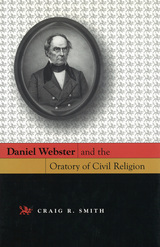 Daniel Webster and the Oratory of Civil Religion
Craig R. Smith
University of Missouri Press, 2005
Daniel Webster (1782–1852) embodied the golden age of oratory in America by mastering each of the major genres of public speaking of the time. Even today, many of his victories before the Supreme Court remain as precedents. Webster served in the House, the Senate, and twice as secretary of state. He was so famous as a political orator that his reply “Liberty and Union, now and forever, one and inseparable!” to Senator Robert Hayne in a debate in 1830 was memorized by schoolboys and was on the lips of Northern soldiers as they charged forward in the Civil War. There would have been no 1850 Compromise without Webster, and without the Compromise, the Civil War might well have come earlier to an unprepared North.
Webster was also the consummate ceremonial speaker. He advanced Whig virtues and solidified support for the Union through civil religion, creating a transcendent symbol for the nation that became a metaphor for the working constitutional framework.
While several biographies have been written about Webster, none has focused on his oratorical talent. This study examines Webster’s incredible career from the perspective of his great speeches and how they created a civil religion that moved citizens beyond loyalty and civic virtue to true romantic patriotism. Craig R. Smith places Webster’s speeches in their historical context and then uses the tools of rhetorical criticism to analyze them. He demonstrates that Webster understood not only how rhetorical genres function to meet the expectations of the moment but also how they could be braided to produce long-lasting and literate discourse.
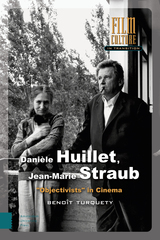 Danièle Huillet, Jean-Marie Straub: "Objectivists" in Cinema
Benoît Turquety
Amsterdam University Press, 2020 Danièle Huillet and Jean-Marie Straub collaborated on films together from the mid-1960s through the mid-2000s, making formally radical adaptations in several languages of major works of European literature by authors including Franz Kafka, Bertolt Brecht, Friedrich Hölderlin, Pierre Corneille, Arnold Schoenberg, Cesare Pavese, and Elio Vittorini. The impact of their work comes in part from a search for radical objectivity, a theme present in certain underground currents of modernist art and theory in the writings of Benjamin and Adorno as well as in the "Objectivist" movement, a crucial group within American modernist poetry whose members included Louis Zukofsky, George Oppen, and Charles Reznikoff, with connections to William Carlos Williams and Ezra Pound. Through a detailed analysis of the films of Straub and Huillet, the works they adapted, and Objectivist poems and essays, Benoît Turquety locates common practices and explores a singular aesthetic approach where a work of art is conceived as an object, the artist an anonymous artisan, and where the force of politics and formal research attempt to reconcile with one another.
Daniil Kharms: Writing and the Event
By Branislav Jakovljevic
Northwestern University Press, 2009 The "texts" of Russian artist and thinker Daniil Kharms (1905-1942) were so many and varied and often unique (narrative, dramatic, philosophical, poetic, mathematical, pictographic, diagrammatic, musical, biographical) that they defied categorization—and, thus, thorough study or appreciation—through much of the twentieth century. This book, the first in English to view Kharms’s oeuvre in its entirety, is also the first to offer a complete, inclusive, and coherent understanding of the overall project of this artist and writer now considered a major figure in the modernist canon of Europe.
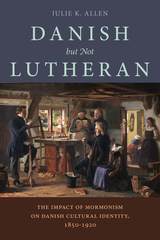 Danish, But Not Lutheran: The Impact of Mormonism on Danish Cultural Identity, 1850–1920
Julie K. Allen
University of Utah Press, 2017 The Danish-Mormon migration to Utah in the nineteenth century was, relative to population size, one of the largest European religious out-migrations in history. Hundreds of thousands of Americans can trace their ancestry to Danish Mormons, but few know about the social and cultural ramifications of their ancestors’ conversion to Mormonism. This book tells that exciting and complex story for the first time.
In 1849, after nearly a thousand years of state- controlled religion, Denmark’s first democratic constitution granted religious freedom. One year later, the arrival of three Mormon missionaries in Denmark and their rapid success at winning converts to their faith caused a crisis in Danish society over the existential question: "How could someone be Danish but not Lutheran?" Over the next half-century nearly thirty thousand Danes joined the LDS Church, more than eighteen thousand of whom emigrated to join their fellow Mormons in Utah. This volume explores the range of Danish public reactions to Mormonism over a seventy-year period—from theological concerns articulated by Søren and Peter Christian Kierkegaard in the 1850s to fear-mongering about polygamy and white slavery in silent films of the 1910s and 1920s—and looks at the personal histories of converts.
Honorable Mention for Best International Book from the Mormon History Association.
 The Danish Directors 3: Dialogues on the New Danish Documentary Cinema
Edited by Mette Hjort, Ib Bondebjerg, and Eva Novrup Redvall
Intellect Books, 2014 Following the two previous volumes in this series of practitioner interviews with Danish directors, Danish Directors 3 focuses on Danish documentary cinema. Although many of the directors interviewed here have ventured successfully into the terrain of fiction, their main contributions to the thriving post-80s milieu lie in the interconnected areas of documentary film and television. Emphasizing the new documentary cinema, this book features filmmakers who belong to the generation born in the 1970s. Many of the interviewees were trained at the National Film School of Denmark’s now legendary Department of Documentary and Television. The term “new” also captures tendencies that cut across the work of the filmmakers. For example, for the generation in question, internationalization and the development of a new digital media culture are inevitable aspects of everyday life, and, indeed, of the professional environments in which they operate. A comprehensive overview of documentary directors currently working in Denmark, this is the only book of its kind about this growing area of Danish cinema.
Danish Directors: Dialogues on a Contemporary National Cinema
Edited by Mette Hjort and Ib Bondebjerg
Intellect Books, 1995 Profiling the canonized figures alongside recently-established filmmakers, this collection features interviews with Lars von Trier, Søren Kragh-Jacobsen, Thomas Vinterberg and Henning Carlsen among many others. It poses questions that engage with ongoing and controversial issues within film studies, which will stimulate debate in academic and filmgoing circles alike.
Each interview is preceded by a photograph of the director, biographical information, and a filmography. Frame enlargements are used throughout to help clarify particular points of discussion and the book as a whole is contextualised by an informative general introduction. A valuable addition to the growing library of books on Scandinavian film, national cinema and minority cinema.
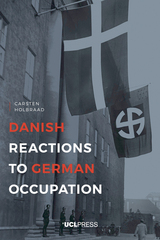 Danish Reactions to German Occupation: History and Historiography
Carsten Holbraad
University College London, 2017 For five years during World War II, Denmark was occupied by Germany. While the Danish reaction to this period of its history has been extensively discussed in Danish-language publications, it has not until now received a thorough treatment in English. Set in the context of modern Danish foreign relations, and tracing the country’s responses to successive crises and wars in the region, Danish Reactions to German Occupation brings a full overview of the occupation to an English-speaking audience. Holbraad carefully dissects the motivations and ideologies driving conduct during the occupation, and his authoritative coverage of the preceding century provides a crucial link to understanding the forces behind Danish foreign policy divisions. Analysing the conduct of a traumatised and strategically exposed small state bordering on an aggressive great power, the book traces a development from reluctant cooperation to active resistance. In doing so, Holbraad surveys and examines the subsequent, and not yet quite finished, debate among Danish historians about this contested period, which takes place between those siding with the resistance and those more inclined to justify limited cooperation with the occupiers – and who sometimes even condone various acts of collaboration.
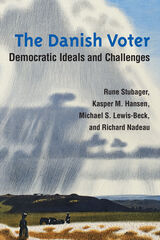 The Danish Voter: Democratic Ideals and Challenges
Rune Stubager, Kasper M. Hansen, Michael S. Lewis-Beck, and Richard Nadeau
University of Michigan Press, 2021 For many international experts, politicians, and commentators, Denmark stands out as an ideal society with a well-functioning welfare state, low levels of corruption, and a high degree of social and political stability. Like other countries, however, Denmark faces challenges brought on by overall societal changes—particularly the challenges of maintaining a prosperous economy and from the growing number of immigrants with different ethnic and religious backgrounds that have left their mark on Danish society over the past 50 years. But how have Danish voters reacted to these challenges?
The authors of The Danish Voter investigate a series of interesting questions concerning voters’ reactions to these macrosocial challenges and how their reactions affect the foundations for the ideal. Indeed, due to an electoral system open to new influences, the Danish case is an important test case for theories about political development of contemporary Western societies.
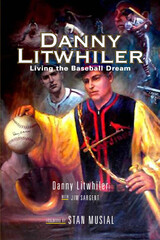 Danny Litwhiler: Living the Baseball Dream
Daniel Litwhiler
Temple University Press, 2006 Danny Litwhiler is one of the lucky players in baseball to "live the dream" of playing in not one, but two World Series during his eleven and a half year career in the majors. In 1942, he set a record for 151 consecutive errorless games as an outfielder—rather ironic since he led the league in errors (15) the year before! Litwhiler's engaging memoir chronicles playing, teaching, and coaching baseball during eight decades, starting with his childhood in Ringtown, PA to playing for his favorite team, the Philadelphia Phillies. After his career in the majors, Litwhiler coached college baseball, and over 100 of his students, including Steve Garvey, Dick Howser, and Kirk Gibson, later signed professional contracts. Litwhiler spent his life loving what he does, and passing his knowledge and enthusiasm for baseball on to others. Danny Litwhiler: Living the Baseball Dream conveys Litwhiler's passion for the game as he fondly recalls playing with legends like Jackie Robinson and Enos Slaughter. But Danny Litwhiler was more than just a player and coach. He invented many devices used in the game today, such as the Jugs radar gun, which measures the velocity of pitches. And he was a goodwill ambassador for baseball—promoting it internationally, from Central and South America to Europe and Japan. He has lived a baseball life.
 Dante and the Blessed Virgin
Ralph McInerny
University of Notre Dame Press, 2010
Dante and the Blessed Virgin is distinguished philosopher Ralph McInerny's eloquent reading of one of western literature's most famous works by a Catholic writer. The book provides Catholic readers new to Dante's The Divine Comedy (or Commedia) with a concise companion volume. McInerny argues that the Blessed Virgin Mary is the key to Dante. She is behind the scenes at the very beginning of the Commedia, and she is found at the end in the magnificent closing cantos of the Paradiso. McInerny also discusses Dante's Vita Nuova, where Mary is present as the object of the young Beatrice's devotion.
McInerny draws from a diverse group of writers throughout this book, including Plato, Aristotle, St. Bernard, St. Bonaventure, St. Thomas Aquinas, and George Santayana, among others. It is St. Thomas, however, to whom McInerny most often turns, and this book also provides an accessible introduction to Thomistic moral philosophy focusing on the appetites, the ordering of goods, the distinction between the natural and the supernatural orders, the classification of capital vices and virtues, and the nature of the theological virtues. This engagingly written book will serve as a source of inspiration and devotion for anyone approaching Dante's work for the first time as well as those who value the work of Ralph McInerny.
"Dante was a literary genius with a profound understanding of St. Thomas Aquinas and the philosophia perennis that structured and permeated the Divina Commedia. Who better to help us get beyond the (brilliant) surface to the depths of Dante than the most literarily genial of Thomas' twentieth (and twenty-first) century disciples, the indefatigable Ralph McInerny? Dante needed guides, from Vergil to Beatrice, to reach the summit of Paradiso. Fortunately, we have Ralph McInerny to accompany us on the same journey." --Fr. Joseph Fessio, S.J., Founder and Editor, Ignatius Press
"Weaving together poetry, philosophy and theology, Ralph McInerny shows that 'the Blessed Virgin Mary is the key to Dante.' Starting with the Vita Nuova and the beginning of the Divine Comedy, this becomes ever more explicit throughout the great poem, till the magnificent closing cantos of the Paradiso. The book is beautifully written, making sense of every step, however complex at times, of the great journey to the gate of heaven described by Dante in the Commedia, drawing on Scripture, on Aquinas, on philosophers like Aristotle, on a medley of modern and contemporary writers, with immense learning, always worn lightly and made easily accessible. Dominant are themes that concern everyone, such as love or happiness, are treated with freshness and clarity so the reader is made to feel he or she is discovering them anew. The total effect is joy induced by the incredible wealth of content of this little book and by the light it sheds on so many vital issues." --Thomas De Koninck, Laval University
 Dante and the Grammar of the Nursing Body
Gary Cestaro
University of Notre Dame Press, 2003 Dante and the Grammar of the Nursing Body takes a serious look at Dante's relation to Latin grammar and the new "mother tongue"-Italian vernacular-by exploring the cultural significance of the nursing mother in medieval discussions of language and selfhood. Inspired by Julia Kristeva's meditations on the maternal semiotic, Cestaro's book uncovers ancient and medieval discourses that assert the nursing body's essential role in the development of a mature linguistic self.
At the same time, these texts ultimately dictate the rejection-the metaphorical death and burial-of the nurse as a prerequisite to full-blown subjectivity and symbolic language. The nurse and her fluid body bespeak horror to Latin culture and its rational structures. Cestaro explores Dante's reception of this idea through several traditions: discourses on first-language acquisition and grammar; colorful allegorizations of lactating Lady Grammar with her whip; moralized readings of Virgil as a tale of individual human growth; and Neoplatonic descriptions of the chora, universal wetnurse in the story of creation.
The opening chapters locate traces of the nursing motif in Dante's minor works and particularly in his Latin treatise on the mother tongue, De vulgari eloquentia. Cestaro argues that a primal scene of suckling motivates the poet's musings on language and brings the work to its premature end. Subsequent chapters explore the evolution of the nursing body in the Comedy: from the parodic anti-nurse of Inferno (archetypically Circe with her poison milk), to the Christian deconstruction and reconstruction of selfhood in intimate association with female nursing on the mountain of Purgatorio.
The book ends in Paradiso with a dramatic metaphorical celebration of the nursing body as a site of eternal truth and emblem of the resurrected body promised by medieval Christianity. Dante thus undoes traditional notions of selfhood as opposition to the fluid body in a uniquely Christian and vernacular poetic key, a feat worthy of his cultural role as pioneer poet in the mother tongue. Scholars interested in probing psychoanalytic questions in medieval and early modern texts will find Cestaro's study useful for the productive relationship it forges between historical specificity and contemporary theory.
GARY P. CESTARO is associate professor of modern languages at DePaul University.
 Dante and the Greeks
Jan M. Ziolkowski
Harvard University Press Although Dante never traveled to Greek-speaking lands in the eastern Mediterranean and his exposure to the Greek language was limited, he displays a keen interest in the cultures of Greece, both ancient and medieval, pagan and Christian. Bringing together cartography, history, philosophy, philology, reception studies, religious studies, and other disciplines, these essays tap into knowledge and skills from specialists in the medieval West, Byzantium, and Dante. The twelve contributors discuss the presence of ancient Greek poetry, philosophy, and science (astrology, cosmography, geography) in Dante’s writings, as well as the Greek characters who populate his works. Some of these individuals were drawn indirectly from ancient mythography, Homeric epic, and other such sources, while others were historically attested personages, down to Dante’s own era. Greek was not only a language and civilization of the past, but also a present (and often rival) religious and political entity. To each layer—ancient pagan, early Christian, and contemporary Byzantine—Latins related differently. Doctrinal, political, linguistic, cultural, and educational matters all played important roles in shaping the attitudes that form the focal point for this volume, which sets the stage for further engagement with Dante’s corpus in its cultural settings.
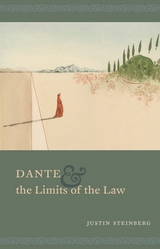 Dante and the Limits of the Law
Justin Steinberg
University of Chicago Press, 2013 In Dante and the Limits of the Law, Justin Steinberg offers the first comprehensive study of the legal structure essential to Dante’s Divine Comedy. Steinberg reveals how Dante imagines an afterlife dominated by sophisticated laws, hierarchical jurisdictions, and rationalized punishments and rewards. He makes the compelling case that Dante deliberately exploits this highly structured legal system to explore the phenomenon of exceptions to it, crucially introducing Dante to current debates about literature’s relation to law, exceptionality, and sovereignty.
Examining how Dante probes the limits of the law in this juridical otherworld, Steinberg argues that exceptions were vital to the medieval legal order and that Dante’s otherworld represents an ideal “system of exception.” In the real world, Dante saw this system as increasingly threatened by the dual crises of church and empire: the abuses and overreaching of the popes and the absence of an effective Holy Roman Emperor. Steinberg shows that Dante’s imagination of the afterlife seeks to address this gap between the universal validity of Roman law and the lack of a sovereign power to enforce it. Exploring the institutional role of disgrace, the entwined phenomena of judicial discretion and artistic freedom, medieval ideas about privilege and immunity, and the place of judgment in the poem, this cogently argued book brings to life Dante’s sense of justice.
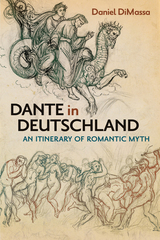 Dante in Deutschland: An Itinerary of Romantic Myth
Daniel DiMassa
Bucknell University Press, 2022 Around the turn of the nineteenth century, no task seemed more urgent to German Romantics than the creation of a new mythology. It would unite modern poets and grant them common ground, and bring philosophers and the Volk closer together. But what would a new mythology look like? Only one model sufficed, according to Friedrich Schlegel: Dante’s Divine Comedy. Through reading and juxtaposing canonical and obscure texts, Dante in Deutschland shows how Dante’s work shaped the development of German Romanticism; it argues, all the while, that the weight of Dante’s influence induced a Romantic preoccupation with authority: Who was authorized to create a mythology? This question—traced across texts by Schelling, Novalis, and Goethe—begets a Neo-Romantic fixation with Dantean authority in the mythic ventures of Gerhart Hauptmann, Rudolf Borchardt, and Stefan George. Only in Thomas Mann’s novels, DiMassa asserts, is the Romantics’ Dantean project ultimately demythologized.
Dante Now: Current Trends In Dante Studiesýdevers Series In Dante Studies V1
Theodore J. Cachey Jr
University of Notre Dame Press, 1995 Written by ten distinguished Dante scholars, the essays in Dante Now represent the most significant areas of contemporary Dante studies. This collection, originating from a 1993 University of Notre Dame conference, includes some of the particular on three intensely cultivated areas of Dante studies: poetics, "minor works," and reception.
 Dante: The Poetics of Conversion
John Freccero
Harvard University Press, 1986 John Freccero enables us to see the Divine Comedy for the bold, poetic experiment that it is. Too many critics have domesticated Dante by separating his theology from his poetics. Freccero argues that to fail to see the convergence of the letter and the spirit, the pilgrim and the poet, is to fail to understand Dante’s poetics of conversion. For Dante, body and soul go together and there is no salvation that’s purely intellectual, no poetry that is simply literary.
The essays that form this book were originally published between 1959 and 1984. They are arranged to follow the order of the Comedy, and they form the perfect companion for a reader of the poem. With these essays assembled for the first time, we can now see Freccero’s stature: he is the best contemporary critic of Dante. Freccero is that rare article, a critic of eclectic and not dogmatic persuasion. Throughout Freccero operates on the fundamental premise that there is always an intricate and crucial dialectic at work between Dante the poet and Dante the pilgrim, and that it is this dialectic that makes the work so profoundly dramatic, one of the great novels of the self.
Thanks to Freccero we readers have the Comedy whole again. Freccero calls upon medieval philosophy, cosmology, science, theology, and poetics to enable us to traverse Dante’s moral landscape without losing our way in the confusions of minute exegeses. In a secular age Freccero enables us to see this poem as what it is, something wholly other than what we might believe or write. In doing so he shows us the most that language can achieve in any age, secular or not.
 Dante: The Story of His Life
Marco Santagata
Harvard University Press, 2016 A Times Literary Supplement Book of the Year
A Marginal Revolution Best Non-Fiction Book of the Year
A Seminary Co-op Notable Book of the Year
A Times Higher Education Book of the Week
A Choice Outstanding Academic Title of the Year
Marco Santagata’s Dante: The Story of His Life illuminates one of the world’s supreme poets from many angles—writer, philosopher, father, courtier, political partisan. Santagata brings together a vast body of Italian scholarship on Dante’s medieval world, untangles a complex web of family and political relationships for English readers, and shows how the composition of the Commedia was influenced by local and regional politics.
“Reading Marco Santagata’s fascinating new biography, the reader is soon forced to acknowledge that one of the cornerstones of Western literature [The Divine Comedy], a poem considered sublime and universal, is the product of vicious factionalism and packed with local scandal.”
—Tim Parks, London Review of Books
“This is a wonderful book. Even if you have not read Dante you will be gripped by its account of one of the most extraordinary figures in the history of literature, and one of the most dramatic periods of European history. If you are a Dantean, it will be your invaluable companion forever.”
—A. N. Wilson, The Spectator
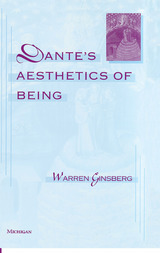 Dante's Aesthetics of Being
Warren Ginsberg
University of Michigan Press, 1999 "I am one who, when love inspires me, takes note . . ." --Dante
Despite the absence of tracts about beauty and art, aesthetic issues did command the attention of people in the Middle Ages. Whenever poets or philosophers turned their thoughts to the order of the heavens, whenever they delighted in music or art, they contemplated how the pleasure they took in the artistry of the universe was related to the God who created it. For Dante, aesthetics was the discourse of being and could not be narrowly defined. The aesthetic became the domain in which he considered not only form and proportion, but questions of love, identity, and perfection of the self.
Warren Ginsberg expertly guides us through Dante's work. He distinguishes between early texts such as the Vita Nuova, in which the aesthetic offers only a form of knowledge between sensation and reason, and the Comedy, in which the aesthetic is transformed into a language of existence. Among other subjects, Dante's Aesthetics of Being treats poeticism, literary history, language theory, the relation of philosophy to poetry, and of course, aesthetics. Its readers will include not only experts in Dante and medievalists in general, but literary critics of all periods. Indeed, anyone interested in poetic theory, the philosophy of beauty, or interdisciplinary studies will profit from reading Ginsberg's thoughtful offering.
Warren Ginsberg is Professor of English, University at Albany, State University of New York. He is author of The Cast of Character: The Representation of Personality in Ancient and Medieval Literature and editor of two Middle English poems, Wynnere and Wastoure and The Parlement of the Thre Ages.
 Dante’s Bones: How a Poet Invented Italy
Guy P. Raffa
Harvard University Press, 2020 A richly detailed graveyard history of the Florentine poet whose dead body shaped Italy from the Middle Ages and the Renaissance to the Risorgimento, World War I, and Mussolini’s fascist dictatorship.
Dante, whose Divine Comedy gave the world its most vividly imagined story of the afterlife, endured an extraordinary afterlife of his own. Exiled in death as in life, the Florentine poet has hardly rested in peace over the centuries. Like a saint’s relics, his bones have been stolen, recovered, reburied, exhumed, examined, and, above all, worshiped. Actors in this graveyard history range from Lorenzo de’ Medici, Michelangelo, and Pope Leo X to the Franciscan friar who hid the bones, the stone mason who accidentally discovered them, and the opportunistic sculptor who accomplished what princes, popes, and politicians could not: delivering to Florence a precious relic of the native son it had banished.
In Dante’s Bones, Guy Raffa narrates for the first time the complete course of the poet’s hereafter, from his death and burial in Ravenna in 1321 to a computer-generated reconstruction of his face in 2006. Dante’s posthumous adventures are inextricably tied to major historical events in Italy and its relationship to the wider world. Dante grew in stature as the contested portion of his body diminished in size from skeleton to bones, fragments, and finally dust: During the Renaissance, a political and literary hero in Florence; in the nineteenth century, the ancestral father and prophet of Italy; a nationalist symbol under fascism and amid two world wars; and finally the global icon we know today.
 Dante's Commedia: Theology as Poetry
Vittorio Montemaggi
University of Notre Dame Press, 2010
In Dante's Commedia: Theology as Poetry, an international group of theologians and Dante scholars provide a uniquely rich set of perspectives focused on the relationship between theology and poetry in the Commedia. Examining Dante's treatment of questions of language, personhood, and the body; his engagement with the theological tradition he inherited; and the implications of his work for contemporary theology, the contributors argue for the close intersection of theology and poetry in the text as well as the importance of theology for Dante studies. Through discussion of issues ranging from Dante's use of imagery of the Church to the significance of the smile for his poetic project, the essayists offer convincing evidence that his theology is not what underlies his narrative poem, nor what is contained within it: it is instead fully integrated with its poetic and narrative texture.
As the essays demonstrate, the Commedia is firmly rooted in the medieval tradition of reflection on the nature of theological language, while simultaneously presenting its readers with unprecedented, sustained poetic experimentation. Understood in this way, Dante emerges as one of the most original theological voices of the Middle Ages.
"Long taken for granted in Dante studies, the nexus between theology and poetry in Dante's work, especially in the Commedia, has only really been subjected to searching critical analysis in the last few decades. The scholars represented in this interdisciplinary collection explore the poem's claims to function as a text embodying theological truth and, more particularly, as a poetic representation of the experience of the mystical. Their efforts comprise a landmark in modern Dante studies." --Steven Botterill, University of California, Berkeley
"Moved by both intellectual curiosity and a palpable love of their subject, a group of both young and established scholars, both theologians and Dante specialists, from both sides of the Atlantic, collaborate in this book to search through the poet's volume and pose fresh questions about the relation of poetry and theology in Dante's work." --Ronald L. Martinez, Brown University
 Dante’s Craft: Studies in Language and Style
Glauco Cambon
University of Minnesota Press, 1969 Dante's Craft was first published in 1969. Minnesota Archive Editions uses digital technology to make long-unavailable books once again accessible, and are published unaltered from the original University of Minnesota Press editions. In a series of nine essays, Professor Cambon discusses Dante's language and style and the influence of his poetry on later writers. The first section, a group of six essays, is devoted to the critical studies of Dante's own work. A second section consists of chapters devoted to Dante's influence on the eighteenth-century Italian philosopher Giambattista Vico, on certain American writers, chiefly Herman Melville, Nathaniel Hawthorne, Ezra Pound, and T.S. Eliot, and on the contemporary Italian poet Eugenio Montale. The pertinence of Dante today is emphasized by Professor Cambon in his introduction to the volume. He writes: "Dante's viability for modern literature springs from the depth and latitude of his own probing into the tangled darkness and light of human existence; and, as some of the essays here collected attempt to show, I have come to believe that Dante can give invaluable clues to the reader of contemporary poetry, whether in its expression of derangement in a new Dark Wood or in its rare glimpses of felicity and wholeness."
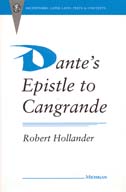 Dante's Epistle to Cangrande
Robert Hollander
University of Michigan Press, 1994 Dante's epistle to Can Grande de la Scala seemingly provides keys to the Divine Comedy; hence it has posed awkward problems for many students of the poet. On one hand, those who discount "authorial intention" are confronted with Dante's own reading of his poem, an apparently explicit statement of his intentions. On the other, the epistle offers information on how to interpret the poem's allegorical elements, which are at odds with modern sensibilities.
In Dante's Epistle to Cangrande Robert Hollander commandingly marshals new evidence to demonstrate that the epistle should be considered authentically Dantean. He further provides enlightening discussion of the nature of tragedy and comedy in the Divine Comedy. The author draws authoritatively on the extensive array of medieval and modern commentaries stored in electronic form by the Dartmouth Dante Project, of which he is the director.
Dante's Epistle to Cangrande makes a signal contribution to Dante studies. Naturally of interest to students of Dante's work, it will also be important reading for those concerned with literary critical questions such as authorial intent, programmatic statements, and allegorical interpretations of literature.
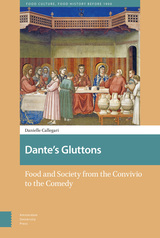 Dante's Gluttons: Food and Society from the Convivio to the Comedy
Danielle Callegari
Amsterdam University Press, 2022 Dante’s Gluttons: Food and Society from the Convivio to the Comedy explores how the medieval Italian poet Dante Alighieri (1265-1321) uses food to express and condition the social, political, and cultural values of his time. Combining medieval history, food studies, and literary criticism, Dante’s Gluttons historicizes food and eating in Dante, beginning in his earliest collected poetry and arriving at the end of his major work. For Dante, the consumption of food is not a frivolity, but a crux of life, and gluttony is the abdication of civic and spiritual responsibility and a danger to both the individual body and soul, as well as the greater collective. This book establishes how one of the world’s preeminent authors uses the intimacy and universality of food as a touchstone, forging a community bound by a gastronomic language rooted in the deeply human relationship with material sustenance.
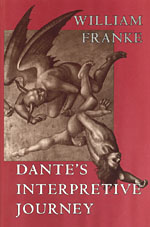 Dante's Interpretive Journey
William Franke
University of Chicago Press, 1996 Critically engaging the thought of Heidegger, Gadamer, and others, William Franke contributes both to the criticism of Dante's Divine Comedy and to the theory of interpretation.
Reading the poem through the lens of hermeneutical theory, Franke focuses particularly on Dante's address to the reader as the site of a disclosure of truth. The event of the poem for its reader becomes potentially an experience of truth both human and divine. While contemporary criticism has concentrated on the historical character of Dante's poem, often insisting on it as undermining the poem's claims to transcendence, Franke argues that precisely the poem's historicity forms the ground for its mediation of a religious revelation. Dante's dramatization, on an epic scale, of the act of interpretation itself participates in the self-manifestation of the Word in poetic form.
Dante's Interpretive Journey is an indispensable addition to the field of Dante studies and offers rich insights for philosophy and theology as well.
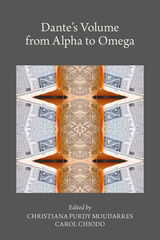 Dante’s Volume from Alpha to Omega
Edited by Christiana Purdy Moudarres and Carol Chiodo
Arizona Center for Medieval and Renaissance Studies, 2020 Dante’s Volume from Alpha to Omega brings together essays written by internationally recognized scholars to explore the poet’s encyclopedic impulse in light of our own frenzied information age. This comprehensive collection of essays, coedited by Carol Chiodo and Christiana Purdy Moudarres, examines how Dante’s spiritual quest is powered by an encyclopedic one, which has for more than seven centuries drawn a readership as diverse as the knowledge his work contains. The essays investigate both the intellectual and spiritual pleasures that Dante’s Commedia affords, underscoring how, through the sheer breadth of its knowledge, the poem demands collective and collaborative inquiry. Rather than isolating the poetic or theological strands of the Commedia, the book acts as a bridge across disciplines, braiding together the well-worn strands of poetry and theology with those of philosophy, the sciences, and the arts. The wide range of entries within Dante’s poetic summa yield multiple opportunities to reflect on their points of intersection, and the urgency of the convergence of the poem’s aesthetic, intellectual, and affective aims.
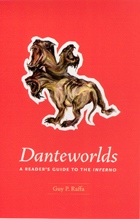 Danteworlds: A Reader's Guide to the Inferno
Guy P. Raffa
University of Chicago Press, 2007 One of the greatest works of world literature, Dante Alighieri’s The Divine Comedy has, despite its enormous popularity and importance, often stymied readers with its multitudinous characters, references, and themes. But until now, students of the Inferno have lacked a suitable resource to guide their reading.
Welcome to Danteworlds, the first substantial guide to the Inferno in English. Guy P. Raffa takes readers on a geographic journey through Dante’s underworld circle by circle—from the Dark Wood down to the ninth circle of Hell—in much the same way Dante and Virgil proceed in their infernal descent. Each chapter—or “region”—of the book begins with a summary of the action, followed by detailed entries, significant verses, and useful study questions. The entries, based on a close examination of the poet’s biblical, classical, and medieval sources, help locate the characters and creatures Dante encounters and assist in decoding the poem’s vast array of references to religion, philosophy, history, politics, and other works of literature.
Written by an established Dante scholar and tested in the fire of extensive classroom experience, Danteworlds will be heralded by readers at all levels of expertise, from students and general readers to teachers and scholars.
The Danton Case and Thermidor: Two Plays
Stanislawa Przybyszewska
Northwestern University Press, 1989 Stanislawa Przybyszewski is recognized as a major twentieth-century playwright on the basis of her trilogy about the French Revolution, of which The Danton Case and Thermidor are the principal parts. The Danton Case depicts the battle for power between two exceptional individuals: the corrupt sentimental idealist, Danton, and the incorruptible genius of the Revolution, Robespierre. Thermidor shows the final playing out of this drama, as Robespierre, left alone with the heroic absolutist Saint-Just, foresees the ruin of himself and his cause, and in his despair predicts that hatred, war, and capitalism will steal the Revolution and corrupt nineteenth-century man.
The Danzantes of Monte Albán
John F. Scott
Harvard University Press John Scott looks at the characteristics, stylistic evolution, ceramic relationships, and dating of the Danzantes of Monte Albán. The volume includes an illustrated catalogue of the reliefs and an appendix on their petrography and pigmentation.
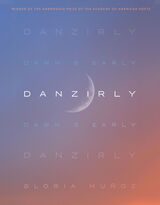 Danzirly
Gloria Muñoz
University of Arizona Press, 2021 Danzirly is a striking bilingual poetry collection that fiercely examines the nuances of the American Dream for Latinx people in the United States. With a backdrop of stringent immigration policies, the #MeToo movement, and the increasingly tangible threat of climate change, this collection considers multigenerational Latinx identities in a rapidly changing country and world. Through the author’s Colombian American lens, the poems explore the intersections of culture, gender, history, and intergenerational grief.
Danzirly does not shy away from confronting traditional gender roles, religion, and anxieties surrounding climate change and the digital age. Gloria Muñoz addresses Latinx stereotypes and powerfully dismantles them in poetic form, juxtaposing the promised wonders of a life in America with the harsh realities that immigrants face as they build their lives and raise their families here. Winner of the Academy of American Poets’ Ambroggio Prize, this collection of poems is an unforgettable reckoning of the grief and beauty that pulses through twenty-first-century America.
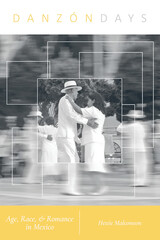 Danzón Days: Age, Race, and Romance in Mexico
Hettie Malcomson
University of Illinois Press, 2023 Winner of the 2024 BFE Book Prize (British Forum for Ethnomusicology) Older people negotiating dance routines, intimacy, and racialized differences provide a focal point for an ethnography of danzón in Veracruz, the Mexican city closely associated with the music-dance genre. Hettie Malcomson draws upon on-site research with semi-professional musicians and amateur dancers to reveal how danzón connects, and does not connect, to blackness, joyousness, nostalgia, ageing, and romance. Challenging pervasive utopian views of danzón, Malcomson uses the idea of ambivalence to explore the frictions and opportunities created by seemingly contrary sentiments, ideas, sensations, and impulses. Interspersed with experimental ethnographic vignettes, her account takes readers into black and mestizo elements of local identity in Veracruz, nostalgic and newer styles of music and dance, and the friendships, romances, and rivalries at the heart of regular danzón performance and its complex social world. Fine-grained and evocative, Danzón Days journeys to one of the genre’s essential cities to provide new perspectives on aging and romance and new explorations of nostalgia and ambivalence.
 The Dao of Muhammad: A Cultural History of Muslims in Late Imperial China
Zvi Ben-Dor Benite
Harvard University Press, 2005 This book documents an Islamic–Confucian school of scholarship that flourished, mostly in the Yangzi Delta, in the seventeenth and eighteenth centuries. Drawing on previously unstudied materials, it reconstructs the network of Muslim scholars responsible for the creation and circulation of a large corpus of Chinese Islamic written material—the so-called Han Kitab. Against the backdrop of the rise of the Manchu Qing dynasty, The Dao of Muhammad shows how the creation of this corpus, and of the scholarly network that supported it, arose in a context of intense dialogue between Muslim scholars, their Confucian social context, and China’s imperial rulers.
Overturning the idea that participation in Confucian culture necessitated the obliteration of all other identities, this book offers insight into the world of a group of scholars who felt that their study of the Islamic classics constituted a rightful “school” within the Confucian intellectual landscape. These men were not the first Muslims to master the Chinese Classics. But they were the first to express themselves specifically as Chinese Muslims and to generate foundation myths that made sense of their place both within Islam and within Chinese culture.
Daoism and Ecology: Ways within a Cosmic Landscape
N. J. Girardot
Harvard University Press, 2001 Until now, no single work has been devoted to both a scholarly understanding of the complexities of the Daoist tradition and a critical exploration of its contribution to recent environmental concerns. The authors in this volume consider the intersection of Daoism and ecology, looking at the theoretical and historical implications associated with a Daoist approach to the environment. They also analyze perspectives found in Daoist religious texts and within the larger Chinese cultural context in order to delineate key issues found in the classical texts. Through these analyses, they assess the applicability of modern-day Daoist thought and practice in China and the West, with respect to the contemporary ecological situation.
 Daoist Modern: Innovation, Lay Practice, and the Community of Inner Alchemy in Republican Shanghai
Xun Liu
Harvard University Press, 2009 This book explores the Daoist encounter with modernity through the activities of Chen Yingning (1880–1969), a famous lay Daoist master, and his group in early twentieth-century Shanghai. In contrast to the usual narrative of Daoist decay, with its focus on monastic decline, clerical corruption, and popular superstitions, this study tells a story of Daoist resilience, reinvigoration, and revival.
Between the 1920s and 1940s, Chen led a group of urban lay followers in pursuing Daoist self-cultivation techniques as a way of ensuring health, promoting spirituality, forging cultural self-identity, building community, and strengthening the nation. In their efforts to renew and reform Daoism, Chen and his followers became deeply engaged with nationalism, science, the religious reform movements, the new urban print culture, and other forces of modernity.
Since Chen and his fellow practitioners conceived of the Daoist self-cultivation tradition as a public resource, they also transformed it from an “esoteric” pursuit into a public practice, offering a modernizing society a means of managing the body and the mind and of forging a new cultural, spiritual, and religious identity.
Daphne
Kristen Case
Tupelo Press, 2025 A meditation on the centrality of predation to the Western lyric tradition.
In dialogue with Wittgenstein's “On Certainty,” Ovid's Metamorphoses, Shakespeare's Hamlet, and Thomas Wyatt’s “Whoso List to Hunt,” among other works, Kristen Case's poems and lyric essays unearth the ways violence both disrupts and enables our ways of knowing—or approximating knowledge of—one another.
Daphnis and Chloe. Anthia and Habrocomes
Edited and translated by Jeffrey Henderson
Harvard University Press, 2009 Two racy Greek romances.
In Longus’ ravishing Daphnis and Chloe (second or early third century AD), one of the great works of world literature, an innocent boy and girl gradually discover their sexuality in an idealized pastoral environment. In Xenophon’s Anthia and Habrocomes (first century AD), perhaps the earliest extant novel and a new addition to the Loeb Classical Library, a newlywed couple, separated by mischance, survive hair-raising adventures and desperate escapes as they traverse the Mediterranean and the Near East en route to a joyful reunion. The pairing of these two novels well illustrates both the basic conventions of the genre and its creative range.
This new edition offers fresh translations and texts by Jeffrey Henderson, based on the recent critical editions of Longus by M. D. Reeve and Xenophon by J. N. O’Sullivan.
 Daphnis and Chloe. Love Romances and Poetical Fragments. Fragments of the Ninus Romance
Longus and Parthenius
Harvard University Press Longus seems to have been a pagan sophist who lived about 200 CE; he is known to us only by his novel Daphnis and Chloe. This is the bucolic story of two foundlings, brought up by goatkeepers and shepherds on the island of Lesbos, who gradually fall in love. Notable among ancient romances for its perceptive characterizations, Daphnis and Chloe traces the development of the protagonists' love for each other from childlike innocence to full sexual maturity, the successive stages marked by adventures. The novel's picture of nature and rural life offers its own enchantments.
Parthenius of Nicaea in Bithynia, a Greek poet, was brought to Rome in 73 BCE as a prisoner of war. After his release he settled in Italy and worked as poet and teacher. Virgil was one of his students. Parthenius's poetry, mainly elegiac, is lost, and his only extant work is Erotica Pathemata, an anthology of prose summaries of love stories from Greek literature, collected apparently for the use of Roman poets.
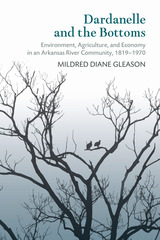 Dardanelle and the Bottoms: Environment, Agriculture, and Economy in an Arkansas River Community, 1819-1970
Mildred D. Gleason
University of Arkansas Press, 2017 Between 1819 and 1970, the town of Dardanelle, Arkansas, located on the south side of the Arkansas River in Yell County, Arkansas, experienced sustained prosperity and growth made possible by the nearby farming community known as the Dardanelle Bottoms.
A reciprocal relationship between the town and the Bottoms formed the economic backbone on which the area’s well-being was balanced. The country people came to town on Saturdays to buy their groceries and supplies, to shop and take in a movie or visit the pool halls or barbershops. Merchants relied heavily on this country trade and had a long history of extending credit, keeping prices reasonable, and offering respect and appreciation to their customers.
This interdependence, stable for decades, began to unravel in the late 1940s with changes in farming, particularly the cotton industry. In Dardanelle and the Bottoms, Mildred Diane Gleason explores this complex rural/town dichotomy, revealing and analyzing key components of each area, including aspects of race, education, the cotton economy and its demise, the devastation of floods and droughts, leisure, crime, and the impact of the Great Depression.
Dare the School Build a New Social Order?
George S. Counts. Preface by Wayne J. Urban
Southern Illinois University Press, 1978 George S. Counts was amajor figure in American education for almost fifty years. Republication of this early (1932) work draws special attention to Counts’s role as a social and political activist. Three particular themes make the book noteworthy because of their importance in Counts’s plan for change as well as for their continuing contemporary importance: (1)Counts’s criticism of child-centered progressives; (2) the role Counts assigns to teachers in achieving educational and social reform; and (3) Counts’s idea for the reform of the American economy.
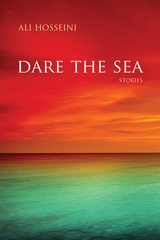 Dare the Sea: Stories
Ali Hosseini
Northwestern University Press, 2023 Debut short-story collection in English from acclaimed fiction writer Ali Hosseini, named a Favorite Short Story Collection of 2023 by the Chicago Review of Books
The stories in Dare the Sea explore Iran’s landscape, culture, and the undercurrent of change affecting its people—both in Iran and the United States. The stories in the first half of the collection are set in Iran in the time before and just after the Iranian Revolution of 1979. Each tale discloses the obstacles rural Iranians lived with on a daily basis and the exigencies of survival: petty theft, corruption, drug trafficking, religion, and love. Stories in the second half take place in exile, where characters are seemingly dropped into American locales like the Midwest or Hawaii, taking in their situation with only the survival skills they’ve learned in their own land and enduring the hardships of being strangers in a new country.
Loosely interconnected by reappearing characters, the stories in Dare the Sea are strongly linked by the country of Iran, its landscape, its history, and its hold on its people.
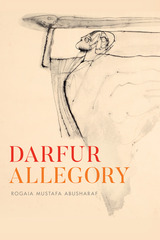 Darfur Allegory
Rogaia Mustafa Abusharaf
University of Chicago Press, 2021 The Darfur conflict exploded in early 2003 when two rebel groups, the Sudan Liberation Movement and the Justice and Equality Movement, struck national military installations in Darfur to send a hard-hitting message of resentment over the region’s political and economic marginalization. The conflict devastated the region’s economy, shredded its fragile social fabric, and drove millions of people from their homes. Darfur Allegory is a dispatch from the humanitarian crisis that explains the historical and ethnographic background to competing narratives that have informed international responses. At the heart of the book is Sudanese anthropologist Rogaia Abusharaf’s critique of the pseudoscientific notions of race and ethnicity that posit divisions between “Arab” northerners and “African” Darfuris.
Elaborated in colonial times and enshrined in policy afterwards, such binary categories have been adopted by the media to explain the civil war in Darfur. The narratives that circulate internationally are thus highly fraught and cover over—to counterproductive effect—forms of Darfurian activism that have emerged in the conflict’s wake. Darfur Allegory marries the analytical precision of a committed anthropologist with an insider’s view of Sudanese politics at home and in the diaspora, laying bare the power of words to heal or perpetuate civil conflict.
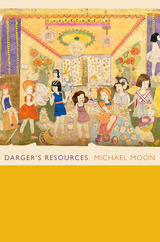 Darger's Resources
Michael Moon
Duke University Press, 2012 Henry Darger (1892–1973) was a hospital janitor and an immensely productive artist and writer. In the first decades of adulthood, he wrote a 15,145-page fictional epic, In the Realms of the Unreal. He spent much of the rest of his long life illustrating it in astonishing drawings and watercolors. In Darger's unfolding saga, pastoral utopias are repeatedly savaged by extreme violence directed at children, particularly girls. Given his disturbing subject matter and the extreme solitude he maintained throughout his life, critics have characterized Darger as eccentric, deranged, and even dangerous, as an outsider artist compelled to create a fantasy universe. Contesting such pathologizing interpretations, Michael Moon looks to Darger's resources, to the narratives and materials that inspired him and often found their way into his writing, drawings, and paintings. Moon finds an artist who reveled in the burgeoning popular culture of the early twentieth century, in its newspaper comic strips, pulp fiction, illustrated children's books, and mass-produced religious art. Moon contends that Darger's work deserves and rewards comparison with that of contemporaries of his, such as the "pulp historians" H. P. Lovecraft and Robert Howard, the Oz chronicler L. Frank Baum, and the newspaper cartoonist Bud Fisher.
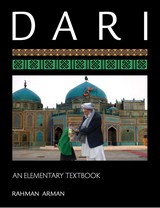 Dari: An Elementary Textbook
Rahman Arman
Georgetown University Press Dari is the most used language in Afghanistan; all official documents are written in it. This textbook, designed to cover one year of instruction, offers beginning learners a communicative approach to the Dari language that develops the four language skills—speaking, listening, reading, and writing—through culturally relevant activities. The book is accompanied by extensive authentic materials, including audio and videos recorded in Afghanistan (available on the Press website), to help learners perform tasks and functions in both colloquial and standard forms. Grammar and vocabulary in each thematic lesson are chosen carefully to help learners perform these tasks and functions at an elementary level and beyond. Dari: An Elementary Textbook prepares learners to perform at level 1+ or 2 on the ILR scale and at the novice high/intermediate low level on the ACTFL scale. Special notes are included for people with experience in Persian to help them learn Dari more efficiently. It is the fifth elementary level textbook published in partnership with the Center for Languages of the Central Asian Region (CeLCAR), following Pashto, Tajiki, Uzbek, and Uyghur.
 Dari: An Intermediate Textbook
Rahman Arman
Georgetown University Press, 2017 Dari: An Intermediate Textbook, designed to cover one year of instruction, offers beginning learners a communicative approach to learning Dari in a cultural context Suitable for students and professionals alike, Dari: An Intermediate Textbook offers a thematically-organized approach to learning the Dari language with task-oriented, communicative activities that develop the four primary language skills—speaking, listening, reading, and writing. Incorporating the latest innovations in foreign language teaching and pedagogy, this textbook enhances learners’ ability to communicate successfully with Dari speakers and more fully engage with a rich and vibrant culture. Dari: An Intermediate Textbook prepares learners to perform at level 2 or 2+ on the ILR scale and at the Intermediate High to Advanced Low levels on the ACTFL scale. Features include:
-Videos filmed in the different regions of Afghanistan and audio by native speakers (available to stream for free on the Press website)
-Abundant cultural notes on Afghan society, customs, and nonverbal aspects of communication, such as body language and gestures
-A functional approach to grammar with explanations presented in both written and spoken contexts to facilitate practice in both modalities
-Additional notes for people with experience in Persian to help them learn Dari more efficiently
-Chapter themes that facilitate understanding of Afghan daily life and culture
 The Darién Gap: A Reporter's Journey through the Deadly Crossroads of the Americas
Belén Fernández
Rutgers University Press, 2025 The narrow Darién Gap, the only land bridge connecting South and Central America, encompasses a spectacularly hostile jungle, covered in steep mountains, dense rainforests, and flood-prone marshes. Known in Spanish as el infierno verde, or “the green hell,” it is one of the most inhospitable places in the world. Its terrain is too treacherous for roads, yet hundreds of thousands of refuge seekers contend with its horrors every year in the hopes of reaching the United States, still some three thousand miles away. And of the countless who set out for the border, an untold number never arrive.
In this book, journalist Belén Fernández travels through the Darién Gap to report on the dehumanizing and deadly stretch of land that has become a mass graveyard for migrants. Fernández’s journey brings her into contact with refuge seekers, people smugglers, law enforcement officials, and many more whose stories bring life to a place overwhelmingly associated with death. Combining history, on-the-ground reporting, travelogue, memoir, and searing politico-economic analysis, she shines light on a largely made-in-the-USA crisis that has come to define our modern era.
Engrossing and heartrending, The Darién Gap is a poignant and compassionate indictment of structural inequality and institutionalized inhumanity in a world where the have-nots must risk death for a chance at a better life—or any life at all.
 Daring: The Life and Art of Elisabeth Vigée Le Brun
Jordana Pomeroy
J. Paul Getty Trust, The, 2025 The dramatic life story of Elisabeth Vigée Le Brun, one of the greatest portrait painters of all time.
Supremely talented and strategically charming, Elisabeth Vigée Le Brun (1755–1842) overcame tragedy and broke gender barriers to reach the height of success as a portrait painter, first in Paris, and then across Europe. After losing her father at age twelve and facing financial insecurity, she fought to gain access to artistic training and opportunity. She was pressured to marry at age twenty, to an art dealer who both helped and harmed her career. Vigée Le Brun deployed her intelligence and beauty to attract powerful clients, who relied on her to style the personal identities they projected to the world.
Vigée Le Brun’s salons were the talk of Paris, and she became court painter to Marie Antoinette. Then came the French Revolution, when marginalized groups demanded change to centuries-old systems of oppression. Vigée Le Brun was forced to reexamine her alliances and run for her life, taking her young daughter but leaving her husband behind. Making her way through the countrysides and capitals of Europe and Russia—including a stay at the imperial court of Catherine the Great—the artist conquered fear and adversity to refashion her life and art.
Ages thirteen and up.
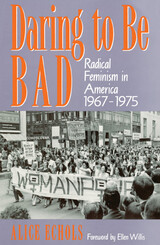 Daring To Be Bad: Radical Feminism in America 1967-1975
Alice Echols
University of Minnesota Press, 1989 Combines intellectual and social history with collective biography to present the first historical study of the radical feminist movement in America.
"A fine introduction to the bold, contentious, complicated women who categorically refused to be good little girls, and thereby changed the way our culture defines male-female relations." --Voice Literary Supplement
"Daring to Be Bad offers the kind of critical attention that contemporary feminism has lacked." --The Nation
"Far beyond mere nostalgic value, the enduring worth of Echols' book is as a resource, not only for the future women's studies courses, but for all who want to understand contemporary feminism. The book supplies essential background that explains the splits which persist in the feminist movement today. Cheers to Daring to Be Bad." --New Directions for Women
"Daring to Be Bad is a welcome addition to feminist bookshelves. It breaks new ground, making creative use of extensive interviews and early feminist publications to recreate the environment that elicited and shaped radical feminism." --Sojourner
"Daring to Be Bad is like a long consciousness-raising session: It prods, validates, and witnesses. Echols offers an oral history that is also an homage. We're given the benefit of a clear and honest eye cast over two decades' span of women working on that most influential social struggle toward liberation." --Village Voice
"Daring to Be Bad is a valuable book that grapples with the diversity inherent within the women's movement while maintaining a critical stance throughout." --American Journal of Sociology
"This fine and sympathetic interpretation of the origin and evolution of radical feminism will give students of women's history a glimpse of the passion of those hours and help explain why a new order did not emerge from them." American Historical Review
"As the first major scholarly work on the history of the U.S. feminist movement, Daring to Be Bad makes an important contribution to the history of the politics of contemporary American feminism, providing a richly detailed history of that wing of the women's movement . . . ." --The Annals of the American Academy
"Echols gives a rich, detailed history of radical feminism's heyday from 1967 to 1971 and offers the type of critical interpretation of the women's liberation movement that contemporary feminism has lacked." --Socialist Review
"Daring to Be Bad is path-breakingbased on abundant and painstaking interviewing, as well as the tracking down and assembling of the ephemera of short-lived committees, cells, and association. Echols's writing is lucid, detailed, and extremely responsible." --American Quarterly
Named an Outstanding Book on Intolerance in the U. S. by the Gustavus Myers Center
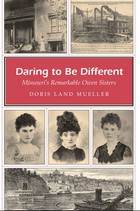 Daring to Be Different: Missouri's Remarkable Owen Sisters
Doris Land Mueller
University of Missouri Press, 2010 In the 1800s, American women were largely restricted to the private sphere. Most had no choice but to spend their lives in the home, marrying in their teens and living only as wives, mothers, and pillars of domesticity. Even as the women’s movement came along midcentury, it focused more on gaining legal and political rights for women than on expanding their career opportunities. So in that time period, in which the options and expectations for women’s professional lives were so limited, it is remarkable that three sisters born in the 1850s, the Owen daughters of Missouri, all achieved success and appreciation in their careers. Doris Land Mueller’s Daring to Be Different tells the story of these exceptional sisters, whose contributions to their chosen fields are still noteworthy today. Mary, the oldest, followed a childhood interest in storytelling to become an internationally recognized folklorist, writing about the customs of Missouri’s Native Americans, the traditions of its African American communities, and the history of St. Joseph’s earliest settlers. The middle daughter, Luella, became a geologist, breaking into the “old boys club” of the nineteenth-century scientific community; her book, Cave Regions of the Ozarks and the Black Hills, was for over fifty years the only reference to include Missouri caves and is still a valuable resource on the subject. And the youngest Owen girl, Juliette, was a talented artist who painted images of birds and studied and wrote about ornithology. An ardent conservationist, Juliette was an animal advocate during the early days of the humane movement. Through a compelling narrative driven by thorough research, Mueller showcases the different personalities of the three sisters who all eschewed marriage to pursue their callings, putting their accomplishments in context with the place and times in which they lived. With family stories, illustrations of early St. Joseph, and images of the Owen family to enrich the story, this book pays tribute to the Owen sisters’ contributions to the Show-Me State. The latest addition to the Missouri Heritage Reader Series, Daring to Be Different will appeal to anyone interested in Missouri history and the early years of the women’s movement.
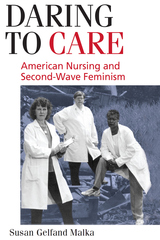 Daring to Care: American Nursing and Second-Wave Feminism
Susan Gelfand Malka
University of Illinois Press, 2007 Beginning in the 1960s, second-wave feminism inspired and influenced dramatic changes in the nursing profession. Susan Gelfand Malka argues that feminism helped end nursing's subordination to medicine and provided nurses with greater autonomy and professional status. She discusses two distinct eras in nursing history. The first extended from the mid-1960s to the mid-1980s, when feminism seemed to belittle the occupation in its analysis of gender subordination but also fueled nursing leaders' drive for greater authority and independence. The second era began in the mid-1980s, when feminism grounded in the ethics of care appealed to a much broader group of caregivers and was incorporated into nursing education. While nurses accepted aspects of feminism, they did not necessarily identify as feminists. Nonetheless, they used, passed on, and developed feminist ideas that brought about nursing school curricula changes and the increase in self-directed and specialized roles available to caregivers in the twenty-first century.
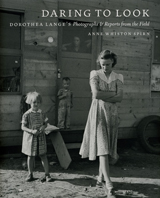 Daring to Look: Dorothea Lange's Photographs and Reports from the Field
Anne Whiston Spirn
University of Chicago Press, 2009 Daring to Look presents never-before-published photos and captions from Dorothea Lange’s fieldwork in California, the Pacific Northwest, and North Carolina during 1939. Lange’s images of squatter camps, benighted farmers, and stark landscapes are stunning, and her captions—which range from simple explanations of settings to historical notes and biographical sketches—add unexpected depth, bringing her subjects and their struggles unforgettably to life, often in their own words. When Lange was dismissed from the Farm Security Administration at the end of 1939, these photos and field notes were consigned to archives, where they languished, rarely seen. With Daring to Look, Anne Whiston Spirn not only returns them to the public eye, but sets them in the context of Lange’s pioneering life, work, and struggle for critical recognition—firmly placing Lange in her rightful position at the forefront of American photography. “A thoughtful and meticulously researched account of Lange’s career. . . . Spirn, a photographer herself, traces Lange’s path, visiting her locations and subjects in a fascinating series of ‘then and now’ shots.”—Publishers Weekly “Dorothea Lange has long been regarded as one of the most brilliant photographic witnesses we have ever had to the peoples and landscapes of America, but until now no one has fully appreciated the richness with which she wove images together with words to convey her insights about this nation. We are lucky indeed that Anne Whiston Spirn, herself a gifted photographer and writer, has now recovered Lange’s field notes and woven them into a rich tapestry of texts and images to help us reflect anew on Lange’s extraordinary body of work.”—William Cronon, author of Nature’s Metropolis
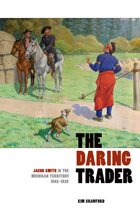 The Daring Trader: Jacob Smith in the Michigan Territory, 1802-1825
Kim Crawford
Michigan State University Press, 2012 A fur trader in the Michigan Territory and confidant of both the U.S. government and local Indian tribes, Jacob Smith could have stepped out of a James Fenimore Cooper novel. Controversial, mysterious, and bold during his lifetime, in death Smith has not, until now, received the attention he deserves as a pivotal figure in Michigan’s American period and the War of 1812. This is the exciting and unlikely story of a man at the frontier’s edge, whose missions during both war and peace laid the groundwork for Michigan to accommodate settlers and farmers moving west. The book investigates Smith’s many pursuits, including his role as an advisor to the Indians, from whom the federal government would gradually gain millions of acres of land, due in large part to Smith’s work as an agent of influence. Crawford paints a colorful portrait of a complicated man during a dynamic period of change in Michigan’s history.
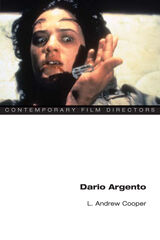 Dario Argento
L. Andrew Cooper
University of Illinois Press, 2012 Commanding a cult following among horror fans, Italian film director Dario Argento is best known for his work in two closely related genres, the crime thriller and supernatural horror, as well as his influence on modern horror and slasher movies. In his four decades of filmmaking, Argento has displayed a commitment to innovation, from his directorial debut with 1970's suspense thriller The Bird with the Crystal Plumage to 2009's Giallo. His films, like the lurid yellow-covered murder-mystery novels they are inspired by, follow the suspense tradition of hard-boiled American detective fiction while incorporating baroque scenes of violence and excess. While considerations of Argento's films often describe them as irrational nightmares, L. Andrew Cooper uses controversies and theories about the films' reflections on sadism, gender, sexuality, psychoanalysis, aestheticism, and genre to declare the anti-rational logic of Argento's oeuvre. Approaching the films as rhetorical statements made through extremes of sound and vision, Cooper places Argento in a tradition of aestheticized horror that includes De Sade, De Quincey, Poe, and Hitchcock. Analyzing individual images and sequences as well as larger narrative structures, he reveals how the director's stylistic excesses, often condemned for glorifying misogyny and other forms of violence, offer productive resistance to the cinema's visual, narrative, and political norms.
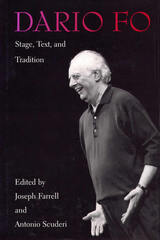 Dario Fo: Stage, Text, and Tradition
Edited by Joseph Farrell and Antonio Scuderi
Southern Illinois University Press, 2000 Joseph Farrell and Antonio Scuderi present an international collection of essays reevaluating the multifaceted performance art of Nobel laureate Dario Fo. The contributors, all of whom either have previously published on Fo or have worked with him, are the major Dario Fo scholars of three continents. Going beyond the Marxist criticism of the 1970s and 1980s, the editors and contributors try to establish an appropriate language in which to debate Fo’s theater. They seek to identify the core of Fo’s work, the material that will be of lasting value. This involves locating Fo in history, examining the nature of his development through successive phases, incorporating his politics into a wider framework of radical dissent, and setting his theatrical achievements in a context and a tradition. The essays cover every aspect of Dario Fo: as actor, playwright, performer, and songwriter. They also provide the historical background of Fo’s theater, as well as an in-depth analyses of specific works and the contribution of Franca Rame.
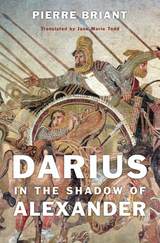 Darius in the Shadow of Alexander
Pierre Briant
Harvard University Press, 2015 The last of Cyrus the Great’s dynastic inheritors and the legendary enemy of Alexander the Great, Darius III ruled over a Persian Empire that stretched from the Mediterranean to the Indus River. Yet, despite being the most powerful king of his time, Darius remains an obscure figure.
As Pierre Briant explains in the first book ever devoted to the historical memory of Darius III, the little that is known of him comes primarily from Greek and Roman sources, which often present him in an unflattering light, as a decadent Oriental who lacked the masculine virtues of his Western adversaries. Influenced by the Alexander Romance as they are, even the medieval Persian sources are not free of harsh prejudices against the king Dārā, whom they deemed deficient in the traditional kingly virtues. Ancient Classical accounts construct a man who is in every respect Alexander’s opposite—feeble-minded, militarily inept, addicted to pleasure, and vain. When Darius’s wife and children are captured by Alexander’s forces at the Battle of Issos, Darius is ready to ransom his entire kingdom to save them—a devoted husband and father, perhaps, but a weak king.
While Darius seems doomed to be a footnote in the chronicle of Alexander’s conquests, in one respect it is Darius who has the last laugh. For after Darius’s defeat in 331 BCE, Alexander is described by historians as becoming ever more like his vanquished opponent: a Darius-like sybarite prone to unmanly excess.
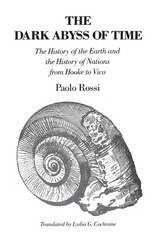 The Dark Abyss of Time: The History of the Earth and the History of Nations from Hooke to Vico
Paolo Rossi
University of Chicago Press, 1984 "A rich historical pastiche of 17th- and 18th-century philosophy, science, and religion."—G. Y. Craig, New Scientist
"This book, by a distinguished Italian historian of philosophy, is a worthy successor to the author's important works on Francis Bacon and on technology and the arts. First published in Italian (in 1979), it now makes available to English readers some subtly wrought arguments about the ways in which geology and anthropology challenged biblical chronology and forced changes in the philosophy of history in the early modern era. . . . [Rossi] shows that the search for new answers about human origins spanned many disciplines and involved many fascinating intellects—Bacon, Bayle, Buffon, Burnet, Descartes, Hobbes, Holbach, Hooke, Hume, Hutton, Leibniz, de Maillet, Newton, Pufendorf, Spinoza, Toland, and, most especially, Vico, whose works are impressively and freshly reevaluated here."—Nina Gelbart, American Scientist
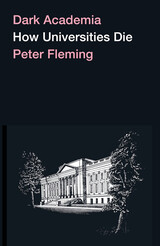 Dark Academia: How Universities Die
Peter Fleming
Pluto Press, 2021 'Fleming's books are sparklingly sardonic and hilariously angry' - Guardian
There is a strong link between the neoliberalisation of higher education over the last 20 years and the psychological hell now endured by its staff and students. While academia was once thought of as the best job in the world - one that fosters autonomy, craft, intrinsic job satisfaction and vocational zeal - you would be hard-pressed to find a lecturer who believes that now.
Peter Fleming delves into this new metrics-obsessed, overly hierarchical world to bring out the hidden underbelly of the neoliberal university. He examines commercialisation, mental illness and self-harm, the rise of managerialism, students as consumers and evaluators, and the competitive individualism which casts a dark sheen of alienation over departments.
Arguing that time has almost run out to reverse this decline, this book shows how academics and students need to act now if they are to begin to fix this broken system.
Dark Alphabet
Jennifer Maier
Southern Illinois University Press, 2006 In works whose subjects range from the religious to the carnal, the whimsical to the foreboding,Jennifer Maier’s debut collection of poems,Dark Alphabet, explores the everyday mysteries of our common experience with humor, lucidity, and an unblinking yet compassionate eye. Whether occasioned by a song overheard on the car radio, a packet of risqué postcards from the 1920's, a conversation with a dead parent, or the behavior of ducks in mating season, each poem sets off on a journey that ranges far from its origins, arriving with the reader in a clearing at dusk, in a place of wise good humor and somber grace.
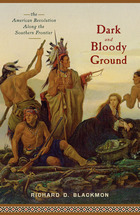 Dark and Bloody Ground: The American Revolution Along the Southern Frontier
Richard D. Blackmon
Westholme Publishing, 2012 The Battles along the Rivers, Mountains, and in the Deep Woods of the South that Changed the Fate of Nations
The American Revolution marked a dramatic change in the struggle for land along the southern frontier. In the colonial era, American Indian leaders and British offi cials attempted to accommodate the westward expansion of Anglo-Americans through land cessions designed to have the least impact on Indian societies. The region remained generally peaceful, but with the onset of the Revolution, the British no longer exercised sole authority to curb the settlements appearing within territory claimed by the Creeks, Shawnee, and most importantly, the Cherokee. Whether it was to escape the economic uncertainty of the east, the rigors of the confl ict, or the depredations of troops and militias on both sides, settlers fl ooded west. Under these conditions, the war in the south took on a savage character as Indians, Loyalists, and Whigs all desperately fought to defend their communities and maintain control of their own destinies. Taking advantage of the political turmoil in the east, the Cherokee Nation launched a coordinated offensive in 1776 against illegal frontier settlements. The Whigs responded with a series of expeditions from each of the Southern colonies that razed Cherokee towns and their food supplies. All the while, both British and Whig leaders walked a fi ne line: If the Indians attacked settlers without distinguishing between Loyalists and Whigs, those groups could unite and thwart both British and Indian interests; if the Indians attacked the western frontier with Loyalist and British support, the Whigs would face a two-front war—an event that ended up happening.
In Dark and Bloody Ground: The American Revolution Along the Southern Frontier, Richard Blackmon uses a wealth of primary source material to recount the confl ict between American Indians and Anglo-Americans in the colonial South during one of the most turbulent periods of North American history. He explains the complex points of contact in Georgia, Kentucky, North Carolina, South Carolina, Tennessee, and Virginia between native groups and settlers, while revealing the political gamesmanship between rival British and Whig traders and offi cials to secure Indian loyalty. The author also explains the critical role of the southern frontier to the American victory, a victory achieved long after the decision at Yorktown. Before the war, clashes between Cherokee and Shawnee hunters in Kentucky had become so commonplace that it was known as a “dark and bloody ground.” With the rise in Anglo-American settlements there, led by Daniel Boone and others, the dark and bloody ground became a metaphor for the entire struggle for the Southern frontier.
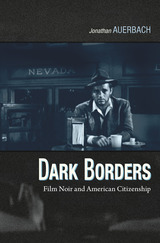 Dark Borders: Film Noir and American Citizenship
Jonathan Auerbach
Duke University Press, 2011 Dark Borders connects anxieties about citizenship and national belonging in midcentury America to the sense of alienation conveyed by American film noir. Jonathan Auerbach provides in-depth interpretations of more than a dozen of these dark crime thrillers, considering them in relation to U.S. national security measures enacted from the mid-1930s to the mid-1950s. The growth of a domestic intelligence-gathering apparatus before, during, and after the Second World War raised unsettling questions about who was American and who was not, and how to tell the difference. Auerbach shows how politics and aesthetics merge in these noirs, whose oft-noted uncanniness betrays the fear that “un-American” foes lurk within the homeland. This tone of dispossession was reflected in well-known films, including Double Indemnity, Out of the Past, and Pickup on South Street, and less familiar noirs such as Stranger on the Third Floor, The Chase, and Ride the Pink Horse. Whether tracing the consequences of the Gestapo in America, or the uncertain borderlines that separate the United States from Cuba and Mexico, these movies blur boundaries; inside and outside become confused as (presumed) foreigners take over domestic space. To feel like a stranger in your own home: this is the peculiar affective condition of citizenship intensified by wartime and Cold War security measures, as well as a primary mood driving many midcentury noir films.
Dark Braid: Poems
Dara Yen Elerath
BkMk Press, 2020 Winner of the John Ciardi Prize for Poetry, selected by Doug Ramspeck
Julie Suk Prize longlist
Through the use of imagination, fairy tale and persona Dark Braid bridges the universal and the personal by focusing on the body, problematic relationships, illness (both mental and physical) and feelings of being an outsider.
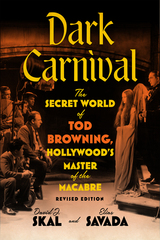 Dark Carnival: The Secret World of Tod Browning, Hollywood’s Master of the Macabre
David J. Skal
University of Minnesota Press, 2025 The definitive biography of Hollywood horror legend Tod Browning—now revised and expanded with new material
One of the most original and unsettling filmmakers of all time, Tod Browning (1880–1962) began his career buried alive in a carnival sideshow and saw his Hollywood reputation crash with the box office disaster–turned–cult classic Freaks. Penetrating the secret world of “the Edgar Allan Poe of the cinema,” Dark Carnival excavates the story of this complicated, fiercely private man. In this newly revised and expanded edition of their biography first published in 1995, David J. Skal and Elias Savada researched Browning’s recently unearthed scrapbooks and photography archives to add further nuance and depth to their previous portrait of this enigmatic artist. Skal and Savada chronicle Browning’s turn-of-the-century flight from an eccentric Louisville family into the realm of carnivals and vaudeville, his disastrous first marriage, his rapid climb to riches in the burgeoning silent film industry, and the alcoholism that would plague him throughout his life. They offer a close look at Browning’s legendary collaborations with Lon Chaney and Bela Lugosi as well as the studio politics that brought his remarkable run to an inglorious conclusion. With a revised prologue, epilogue, filmography, and new text and illustrations throughout, Dark Carnival is an unparalleled account of a singular filmmaker and an illuminating depiction of the evolution of horror and the early film industry.
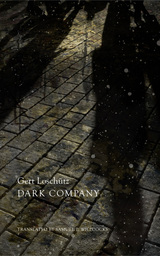 Dark Company: A Novel in Ten Rainy Nights
Gert Loschütz
Seagull Books, 2012 Over ten rainy nights, Thomas, an ex-bargeman who used to be skipper of his own boat, walks the muddy fields of the landlocked German interior and remembers the events that lost him his home, his boat, and his livelihood: his apprenticeship in the cold halls of the Royal Naval College in London; the dangers of the mean streets and waterfront of New York in the 1970s, and Poland under martial law; Germany after the reunification, when for a year or so it seemed that the whole country drifted rudderless, drawn by the current of history to who knows where. Thomas remembers childhood, his first love, and the warnings of his grandfather: Beware the dark company! This mysterious band of men and women dressed in black cast a shadow over his story, as he wrestles with the secrets, the unplumbed depths of his soul, the hazards lurking below a seemingly placid surface, and throughout it all, the rain, falling night after night. Dark Company is a superb example of a distinctly German tradition in weird fiction which claims its roots in Kafka and Herbert Rosendorfer.
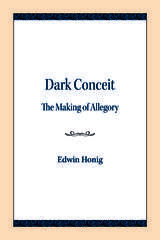 Dark Conceit: The Making of Allegory
Edwin Honig
Northwestern University Press, 1959 Dark Conceit is the first book in English to treat allegory seriously in terms of literary creation and criticism. The study explores the methods and ideas that go into the making of allegory, discusses the misconceptions that have obscured the subject, and surveys the changing concept of allegory. The greater part of the book concerns the typical features of allegorical fiction, focusing on a group of Romantic and contemporary writers, including Melville, Hawthorne, and Kafka, who continue the allegorical tradition in literature. Such writers, along with Lawrence, James, and Joyce, are taken to be the modern counterparts to an earlier group of pastoral, evangelical, and satirical writers represented by Spenser, Bunyan, and Swift. Honig’s thesis is that literary allegory, while symbolic in method, is realistic in aim. Its very power lies in its giving proof to the physical and ethical realities of life objectively conceived.
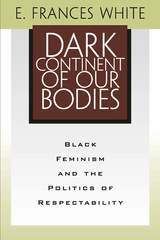 Dark Continent Of Our Bodies: Black Feminism & Politics Of Respectability
E. Frances White
Temple University Press, 2001 In this provocative book, a black lesbian feminist looks at black feminism -- its roots, its role, and its implications. From Charles Darwin and nineteenth-century racism to black nationalism and the Nation of Islam, from Baptist women's groups to James Baldwin, E. Frances White takes on one institution after another as she re-centers the role of black women in the United States' intellectual heritage. White presents identity politics as a complex activity, with entangled branches of race and gender, of invisibility and voyeurism, of defiance and passivity and conformism.
White's powerful introduction draws on oral narratives from her own family history to illuminate the nature of narrative, both what is said and what is left unsaid. She then sets the historical stage with a helpful history of the inception and development of black feminism and a critique of major black feminist writings. In the three chapters that follow, she addresses the obstacles black feminism has already surmounted and must continue to traverse. Confronting what White calls "the politics of respectability," these chapters move the reader from simplistic views of race and gender in the nineteenth century through black nationalism and the radical movements of the sixties, and their relationship to feminist thought, to the linkages between race, gender, and sexuality in the works of such giants as Toni Morrison and James Baldwin. No one who finishes Dark Continent of Our Bodies will look at race and gender in the same way again.
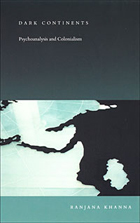 Dark Continents: Psychoanalysis and Colonialism
Ranjana Khanna
Duke University Press, 2003 Sigmund Freud infamously referred to women's sexuality as a “dark continent” for psychoanalysis, drawing on colonial explorer Henry Morton Stanley’s use of the same phrase to refer to Africa. While the problematic universalism of psychoanalysis led theorists to reject its relevance for postcolonial critique, Ranjana Khanna boldly shows how bringing psychoanalysis, colonialism, and women together can become the starting point of a postcolonial feminist theory. Psychoanalysis brings to light, Khanna argues, how nation-statehood for the former colonies of Europe institutes the violence of European imperialist history. Far from rejecting psychoanalysis, Dark Continents reveals its importance as a reading practice that makes visible the psychical strife of colonial and postcolonial modernity. Assessing the merits of various models of nationalism, psychoanalysis, and colonialism, it refashions colonial melancholy as a transnational feminist ethics. Khanna traces the colonial backgrounds of psychoanalysis from its beginnings in the late nineteenth century up to the present. Illuminating Freud’s debt to the languages of archaeology and anthropology throughout his career, Khanna describes how Freud altered his theories of the ego as his own political status shifted from Habsburg loyalist to Nazi victim. Dark Continents explores how psychoanalytic theory was taken up in Europe and its colonies in the period of decolonization following World War II, focusing on its use by a range of writers including Jean-Paul Sartre, Simone de Beauvoir, Octave Mannoni, Aimé and Suzanne Césaire, René Ménil, Frantz Fanon, Albert Memmi, Wulf Sachs, and Ellen Hellman. Given the multiple gendered and colonial contexts of many of these writings, Khanna argues for the necessity of a postcolonial, feminist critique of
decolonization and postcoloniality.
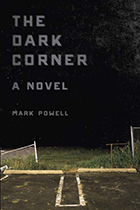 The Dark Corner: A Novel
Mark Powell
University of Tennessee Press, 2012 “The best Appalachian novelist of his generation.”
—Ron Rash, author of Serena and The Cove
"The Dark Corner is one of the most riveting and beautifully written novels that I have ever read. Trouble drives the story, as it does in all great fiction, but grace, that feeling of mercy that all men hunger for, is the ultimate subject, and that's just part of the reason that Mark Powell is one of America's most brilliant writers."
—Donald Ray Pollock, author of The Devil All the Time and Knockemstiff
“Mark Powell’s third novel powerfully tackles the ongoing curses of drugs, real estate development, veterans’ plights, and other regional cultural banes that plague an Appalachia still very much alive and with us as its own chameleon-like animal. Brimming with fury and beauty, The Dark Corner is a thing wrought to be feared and admired.”
—Casey Clabough, author of Confederado
“Powell’s work is so clearly sourced to the wellspring of all spiritual understanding—this physical world…He is heir to the literary lineage of Melville, Conrad, Flannery O’Connor, Denis Johnson, and Robert Stone.”
—Pete Duval, author of Rear View
A troubled Episcopal priest and would-be activist, Malcolm Walker has failed twice over—first in an effort to shock his New England congregants out of their complacency and second in an attempt at suicide. Discharged from the hospital and haunted by images of the Iraq War and Abu Ghraib, he heads home to the mountains of northwestern South Carolina, the state’s “dark corner,” where a gathering storm of private grief and public rage awaits him.
Malcolm’s life soon converges with people as damaged in their own ways as he is: his older brother, Dallas, a onetime college football star who has made a comfortable living in real-estate development but is now being drawn ever more deeply into an extremist militia; his dying father, Elijah, still plagued by traumatic memories of Vietnam and the death of his wife; and Jordan Taylor, a young, drug-addicted woman who is being ruthlessly exploited by Dallas’s viperous business partner, Leighton Clatter. As Malcolm tries to restart his life, he enters into a relationship with Jordan that offers both of them fleeting glimpses of heaven, even as hellish realities continue to threaten them.
In The Dark Corner, Mark Powell confronts crucial issues currently shaping our culture: environmentalism and the disappearance of wild places, the crippling effects of wars past and present, drug abuse, and the rise of right-wing paranoia. With his skillful plotting, feel for place, and gift for creating complex and compelling characters, Powell evokes a world as vivid and immediate as the latest news cycle, while at the same time he offers a nuanced reflection on timeless themes of violence, longing, redemption, faith, and love.
MARK POWELL is the author of two previous novels published by the University of Tennessee Press, Prodigals and the Peter Taylor Prize–winning Blood Kin. The recipient of National Endowment for the Arts and Breadloaf Writers’ Conference fellowships, as well as the Chaffin Award for fiction, he is an assistant professor of English at Stetson University.
 The Dark Corner: A Novel
Mark Powell
University of Tennessee Press “The best Appalachian novelist of his generation.”
—Ron Rash, author of Serena and The Cove
"The Dark Corner is one of the most riveting and beautifully written novels that I have ever read. Trouble drives the story, as it does in all great fiction, but grace, that feeling of mercy that all men hunger for, is the ultimate subject, and that's just part of the reason that Mark Powell is one of America's most brilliant writers."
—Donald Ray Pollock, author of The Devil All the Time and Knockemstiff
“Mark Powell’s third novel powerfully tackles the ongoing curses of drugs, real estate development, veterans’ plights, and other regional cultural banes that plague an Appalachia still very much alive and with us as its own chameleon-like animal. Brimming with fury and beauty, The Dark Corner is a thing wrought to be feared and admired.”
—Casey Clabough, author of Confederado
“Powell’s work is so clearly sourced to the wellspring of all spiritual understanding—this physical world…He is heir to the literary lineage of Melville, Conrad, Flannery O’Connor, Denis Johnson, and Robert Stone.”
—Pete Duval, author of Rear View
A troubled Episcopal priest and would-be activist, Malcolm Walker has failed twice over—first in an effort to shock his New England congregants out of their complacency and second in an attempt at suicide. Discharged from the hospital and haunted by images of the Iraq War and Abu Ghraib, he heads home to the mountains of northwestern South Carolina, the state’s “dark corner,” where a gathering storm of private grief and public rage awaits him.
Malcolm’s life soon converges with people as damaged in their own ways as he is: his older brother, Dallas, a onetime college football star who has made a comfortable living in real-estate development but is now being drawn ever more deeply into an extremist militia; his dying father, Elijah, still plagued by traumatic memories of Vietnam and the death of his wife; and Jordan Taylor, a young, drug-addicted woman who is being ruthlessly exploited by Dallas’s viperous business partner, Leighton Clatter. As Malcolm tries to restart his life, he enters into a relationship with Jordan that offers both of them fleeting glimpses of heaven, even as hellish realities continue to threaten them.
In The Dark Corner, Mark Powell confronts crucial issues currently shaping our culture: environmentalism and the disappearance of wild places, the crippling effects of wars past and present, drug abuse, and the rise of right-wing paranoia. With his skillful plotting, feel for place, and gift for creating complex and compelling characters, Powell evokes a world as vivid and immediate as the latest news cycle, while at the same time he offers a nuanced reflection on timeless themes of violence, longing, redemption, faith, and love.
MARK POWELL is the author of two previous novels published by the University of Tennessee Press, Prodigals and the Peter Taylor Prize–winning Blood Kin. The recipient of National Endowment for the Arts and Breadloaf Writers’ Conference fellowships, as well as the Chaffin Award for fiction, he is an assistant professor of English at Stetson University.
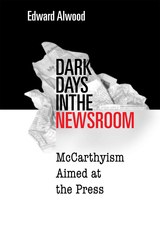 Dark Days in the Newsroom: McCarthyism Aimed at the Press
Edward Alwood
Temple University Press, 2007 Dark Days in the Newsroom traces how journalists became radicalized during the Depression era, only to become targets of Senator Joseph McCarthy and like-minded anti-Communist crusaders during the 1950s. Edward Alwood, a former news correspondent describes this remarkable story of conflict, principle, and personal sacrifice with noticeable élan. He shows how McCarthy's minions pried inside newsrooms thought to be sacrosanct under the First Amendment, and details how journalists mounted a heroic defense of freedom of the press while others secretly enlisted in the government's anti-communist crusade. Relying on previously undisclosed documents from FBI files, along with personal interviews, Alwood provides a richly informed commentary on one of the most significant moments in the history of American journalism. Arguing that the experiences of the McCarthy years profoundly influenced the practice of journalism, he shows how many of the issues faced by journalists in the 1950s prefigure today's conflicts over the right of journalists to protect their sources.
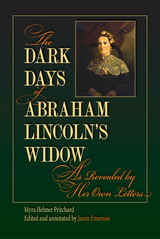 The Dark Days of Abraham Lincoln's Widow, as Revealed by Her Own Letters
Myra Helmer Pritchard, edited and annotated by Jason Emerson
Southern Illinois University Press, 2011
Written in 1927 but barred from timely publication by the Lincoln family, The Dark Days of Abraham Lincoln's Widow, as Revealed by Her Own Letters is based on nearly two dozen intimate letters written between Mary Lincoln and her close friend Myra Bradwell mainly during the former's 1875 incarceration in an insane asylum. By the 1920s most accounts of Mrs. Lincoln focused on her negative qualities and dismissed her as "crazy." Bradwell's granddaughter Myra Helmer Pritchard wrote this distinctly sympathetic manuscript at the behest of her mother, who wished to vindicate Mary Lincoln in the public eye by printing the private correspondence. Pritchard fervently defends Mrs. Lincoln's conduct and sanity, arguing that she was not insane but rather the victim of an overzealous son who had his mother committed.
The manuscript and letters were thought to have been destroyed, but fortunately the Lincolns' family lawyer stored copies in a trunk, where historian Jason Emerson discovered them in 2005. While leaving the manuscript intact, Emerson has enhanced it with an introduction and detailed annotations. He fills in factual gaps; provides background on names, places, and dates; and analyzes Pritchard's interpretations, making clear where she was right and where her passion to protect Mrs. Lincoln led to less than meticulous research and incorrect conclusions. This volume features an easy-to-follow format that showcases Pritchard's text on the left-hand pages and Emerson's insightful annotations on the right-hand pages.
Following one of the most revered and reviled, famous and infamous of the First Ladies, this book provides a unique perspective of Mrs. Lincoln's post-White House years, with an emphasis on her commitment to a sanitarium. Emerson's contributions make this volume a valuable addition to the study of the Lincoln family. This fascinating work gives today's Lincoln enthusiasts the chance to read this intriguing interpretation of the former First Lady that predates nearly every other book written about her.
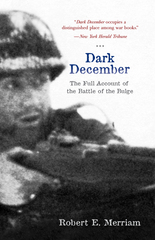 Dark December: The Full Account of the Battle of the Bulge
Robert E. Merriam
Westholme Publishing, 2011 One of the Most Important Histories of the Greatest Battle on the Western Front in World War II
“Dark December occupies a distinguished place among war books. Every paragraph is based upon evidence, not flimsy wartime rumors. Technical enough for the professional, accurate enough for the historian (in fact, it is history of the best), it is lucid and understandable for the general reader.”—New York Herald Tribune “If other veterans of the Army’s historical division can maintain Mr. Merriam’s high standard of stimulating, critical and painstaking work, we will be fortunate. Dark December can be heartily recommended to anyone faintly interested in the war.”—New York Times
“The book explodes a number of myths which have been winning their improper way into general belief.” —Arthur Schlesinger, Jr., Booklist The massive German counteroffensive through Belgium’s Ardennes forest in December 1944 took the American and British armies by surprise and changed the outcome of the war. With whole divisions destroyed and decimated, the American army scrambled to contain the German threat, while also trying to determine how such an attack had gone undetected. The Americans succeeded in winning the month-long battle, commonly known as the Battle of the Bulge, through the tenacity of several pockets of troops, notably those in the Belgian town of Bastogne, and the remarkable rapid movement of Patton’s Third Army to seal the breech in the American lines. The battle stalled the British and American advances and lengthened the war with the result that the Soviet Union was able to make greater gains in Europe than previously anticipated. Dark December is a thorough and engrossing examination of the Battle of the Bulge by a historian who had the opportunity to prepare notes as the battle was occurring and consult classified American as well as German records. Notably, the book contains unique and critical information, including details gleaned from interviews conducted by the author with commanding officers on both sides, some of which are the only reports gathered from these sources. Originally published in 1947, this the first paperback edition with the complete original text and maps.
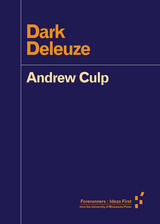 Dark Deleuze
Andrew Culp
University of Minnesota Press, 2016 French philosopher Gilles Deleuze is known as a thinker of creation, joyous affirmation, and rhizomatic assemblages. In this short book, Andrew Culp polemically argues that this once-radical canon of joy has lost its resistance to the present. Concepts created to defeat capitalism have been recycled into business mantras that joyously affirm “Power is vertical; potential is horizontal!”
Culp recovers the Deleuze’s forgotten negativity. He unsettles the prevailing interpretation through an underground network of references to conspiracy, cruelty, the terror of the outside, and the shame of being human. Ultimately, he rekindles opposition to what is intolerable about this world.
Forerunners is a thought-in-process series of breakthrough digital works. Written between fresh ideas and finished books, Forerunners draws on scholarly work initiated in notable blogs, social media, conference plenaries, journal articles, and the synergy of academic exchange. This is gray literature publishing: where intense thinking, change, and speculation take place in scholarship.
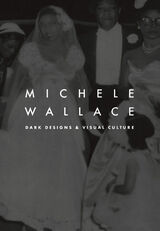 Dark Designs and Visual Culture
Michele Wallace
Duke University Press, 2004 Michele Wallace burst into public consciousness with the 1979 publication of Black Macho and the Myth of the Superwoman, a pioneering critique of the misogyny of the Black Power movement and the effects of racism and sexism on black women. Since then, Wallace has produced an extraordinary body of journalism and criticism engaging with popular culture and gender and racial politics. This collection brings together more than fifty of the articles she has written over the past fifteen years. Included alongside many of her best-known pieces are previously unpublished essays as well as interviews conducted with Wallace about her work. Dark Designs and Visual Culture charts the development of a singular, pathbreaking black feminist consciousness. Beginning with a new introduction in which Wallace reflects on her life and career, this volume includes other autobiographical essays; articles focused on popular culture, the arts, and literary theory; and explorations of issues in black visual culture. Wallace discusses growing up in Harlem; how she dealt with the media attention and criticism she received for Black Macho and the Myth of the Superwoman, which was published when she was just twenty-seven years old; and her relationship with her family, especially her mother, the well-known artist Faith Ringgold. The many articles devoted to black visual culture range from the historical tragedy of the Hottentot Venus, an African woman displayed as a curiosity in nineteenth-century Europe, to films that sexualize the black body—such as Watermelon Woman, Gone with the Wind, and Paris Is Burning. Whether writing about the Anita Hill–Clarence Thomas hearings, rap music, the Million Man March, Toshi Reagon, multiculturalism, Marlon Riggs, or a nativity play in Bedford Stuyvesant, Wallace is a bold, incisive critic. Dark Designs and Visual Culture brings the scope of her career and thought into sharp focus.
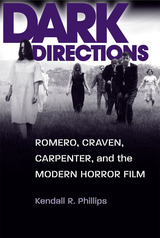 Dark Directions: Romero, Craven, Carpenter, and the Modern Horror Film
Kendall R. Phillips
Southern Illinois University Press, 2012 A Nightmare on Elm Street. Halloween. Night of the Living Dead. These films have been indelibly stamped on moviegoers’ psyches and are now considered seminal works of horror. Guiding readers along the twisted paths between audience, auteur, and cultural history, author Kendall R. Phillips reveals the macabre visions of these films’ directors in Dark Directions: Romero, Craven, Carpenter, and the Modern Horror Film. Phillips begins by analyzing the works of George Romero, focusing on how the body is used cinematically to reflect the duality between society and chaos, concluding that the unconstrained bodies of the Living Dead films act as a critical intervention into social norms. Phillips then explores the shadowy worlds of director Wes Craven. In his study of the films The Serpent and the Rainbow, Deadly Friend, Swamp Thing, Red Eye, and Shocker, Phillips reveals Craven’s vision of technology as inherently dangerous in its ability to cross the gossamer thresholds of the gothic. Finally, the volume traverses the desolate frontiers of iconic director John Carpenter. Through an exploration of such works as Halloween, The Fog, and In the Mouth of Madness, Phillips delves into the director’s representations of boundaries—and the haunting consequences for those who cross them. The first volume ever to address these three artists together, Dark Directions is a spine-tingling and thought-provoking study of the horror genre. In analyzing the individual works of Romero, Craven, and Carpenter, Phillips illuminates some of the darkest minds in horror cinema.
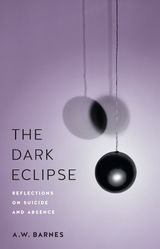 The Dark Eclipse: Reflections on Suicide and Absence
A.W. Barnes
Bucknell University Press, 2019 The Dark Eclipse is a book of personal essays in which author A.W. Barnes seeks to come to terms with the suicide of his older brother, Mike. Using source documentation—police report, autopsy, suicide note, and death certificate—the essays explore Barnes’ relationship with Mike and their status as gay brothers raised in a large conservative family in the Midwest. In addition, the narrative traces the brothers’ difficult relationship with their father, a man who once studied to be a Trappist monk before marrying and fathering eight children. Because of their shared sexual orientation, Andrew hoped he and Mike would be close, but their relationship was as fraught as the author’s relationship with his other brothers and father. While the rest of the family seems to have forgotten about Mike, who died in 1993, Barnes has not been able to let him go. This book is his attempt to do so.
Published by Bucknell University Press. Distributed worldwide by Rutgers University Press.
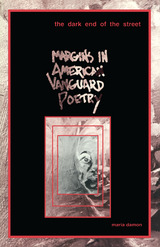 Dark End Of The Street: Margins in American Vanguard Poetry
Maria Damon
University of Minnesota Press, 1993 Damon foregrounds a number of modern American poets work and lives in order to argue that the American avant-garde is located in the experimental literary works of social "outsiders." Discussed is the work of Black/Jewish surrealist street poet Bob Kaufman, Boston-Brahmin Robert Lowell and three teenaged women writing from a South Boston housing project, pre-Stonewall gay poets Jack Spicer and Robert Duncan, and Jewish lesbian-in-exile Gertrude Stein. "An engaging and important book. Damon's sophisticated, theoretical approaches to American verse, coupled with her fresh, writerly style in The Dark End of The Street, put her on the forefront of American poetry's next generation of literary criticism." -American Literature"A work of art as well as a work of criticism. Addresses important questions about art and social life, about the margins and the center, and about oppression and suppression." -George Lipsitz
 Dark Faith: New Essays on Flannery O'Connor's The Violent Bear It Away
Susan Srigley
University of Notre Dame Press, 2012
Dark Faith: New Essays on Flannery O’Connor’s The Violent Bear It Away is a rich study of O’Connor’s second novel by nine scholars in the fields of American literature, theology, and religious studies. Each essay is a penetrating look at the complexity of O’Connor’s religious vision, taking seriously the darker turns of faith, the meaning of violence, and the centrality of love in her work. The thematic approach to the novel makes this an excellent companion to The Violent Bear It Away. Students and general readers alike will find new insights and thoughtful analyses of O'Connor's haunting novel.
Richard Giannone’s opening essay sets the tone with a study of three of O'Connor's most memorable characters, Hazel Motes, The Misfit, and Francis Tarwater, and their spiritual struggles to find meaning amid the darkness of their unbelief. John F. Desmond and Gary M. Ciuba address the complex question of family relations. Jason Peters analyzes abstraction in the novel, and Ruthann Knechel Johansen compares O'Connor's work with essays by Simone Weil on the topic of affliction. Scott Huelin approaches the novel from the perspective of theological ethics. P. Travis Kroeker and Karl E. Martin explore its biblical themes, and Susan Srigley ends the collection with a study of the relationships between the living and the dead.
“Dark Faith: New Essays on Flannery O’Connor’s The Violent Bear It Away will make a welcome companion to Michael Kreyling’s collection New Essays on Wise Blood. The essays in Susan Srigley’s ‘new essays’ will assist critics and readers probing the complex terrain of violence not only in O’Connor’s second (and last) novel, but in all her fiction. Serious students of the novel or of O’Connor’s thought and artistry will find numerous rewards in its pages.” —Joseph M. Flora, University of North Carolina at Chapel Hill
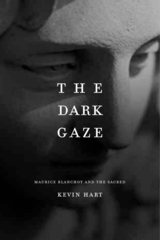 The Dark Gaze: Maurice Blanchot and the Sacred
Kevin Hart
University of Chicago Press, 2004 Maurice Blanchot is among the most important twentieth-century French thinkers. Figures such as Bataille, Deleuze, Derrida, and Levinas all draw deeply on his novels and writings on literature and philosophy. In The Dark Gaze, Kevin Hart argues that Blanchot has given us the most persuasive account of what we must give up—whether it be continuity, selfhood, absolute truth, totality, or unity—if God is, indeed, dead. Looking at Blanchot’s oeuvre as a whole, Hart shows that this erstwhile atheist paradoxically had an abiding fascination with mystical experiences and the notion of the sacred.
The result is not a mere introduction to Blanchot but rather a profound reconsideration of how his work figures theologically in some of the major currents of twentieth-century thought. Hart reveals Blanchot to be a thinker devoted to the possibilities of a spiritual life; an atheist who knew both the Old and New Testaments, especially the Hebrew Bible; and a philosopher keenly interested in the relation between art and religion, the nature of mystical experience, the link between writing and the sacred, and the possibilities of leading an ethical life in the absence of God.
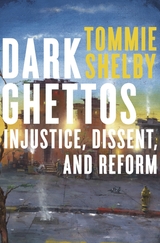 Dark Ghettos: Injustice, Dissent, and Reform
Tommie Shelby
Harvard University Press, 2016 Winner of the Spitz Prize, Conference for the Study of Political Thought
Winner of the North American Society for Social Philosophy Book Award
Why do American ghettos persist? Scholars and commentators often identify some factor—such as single motherhood, joblessness, or violent street crime—as the key to solving the problem and recommend policies accordingly. But, Tommie Shelby argues, these attempts to “fix” ghettos or “help” their poor inhabitants ignore fundamental questions of justice and fail to see the urban poor as moral agents responding to injustice.
“Provocative…[Shelby] doesn’t lay out a jobs program or a housing initiative. Indeed, as he freely admits, he offers ‘no new political strategies or policy proposals.’ What he aims to do instead is both more abstract and more radical: to challenge the assumption, common to liberals and conservatives alike, that ghettos are ‘problems’ best addressed with narrowly targeted government programs or civic interventions. For Shelby, ghettos are something more troubling and less tractable: symptoms of the ‘systemic injustice’ of the United States. They represent not aberrant dysfunction but the natural workings of a deeply unfair scheme. The only real solution, in this way of thinking, is the ‘fundamental reform of the basic structure of our society.’”
—James Ryerson, New York Times Book Review
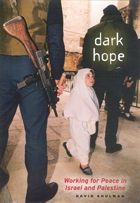 Dark Hope: Working for Peace in Israel and Palestine
David Shulman
University of Chicago Press, 2007 For decades, we’ve been shocked by images of violent clashes between Israelis and Palestinians in the West Bank and Gaza. But for all their power, those images leave us at a loss: from our vantage at home, it’s hard for us to imagine the struggles of those living in the midst of the fighting. Now, American-born Israeli David Shulman takes us right into the heart of the conflict with Dark Hope, an eye-opening chronicle of his work as a member of the peace group Ta‘ayush, which takes its name from the Arabic for “living together.”
Though Shulman never denies the complexity of the issues fueling the conflict—nor the culpability of people on both sides—he forcefully clarifies the injustices perpetrated by Israel by showing us the human dimension of the occupation. Here we meet Palestinians whose houses have been blown up by the Israeli army, shepherds whose sheep have been poisoned by settlers, farmers stripped of their land by Israel’s dividing wall. We watch as whip-swinging police on horseback attack crowds of nonviolent demonstrators, as Israeli settlers shoot innocent Palestinians harvesting olives, and as families and communities become utterly destroyed by the unrelenting violence of the occupation.
Opposing such injustices, Shulman and his companions—Israeli and Palestinian both—doggedly work through checkpoints to bring aid, rebuild houses, and physically block the progress of the dividing wall. As they face off against police, soldiers, and hostile Israeli settlers, anger mixes with compassion, moments of kinship alternate with confrontation, and, throughout, Shulman wrestles with his duty to fight the cruelty enabled by “that dependable and devastating human failure to feel.”
With Dark Hope, Shulman has written a book of deep moral searching, an attempt to discover how his beloved Israel went wrong—and how, through acts of compassionate disobedience, it might still be brought back.
Dark Journey: Black Mississippians in the Age of Jim Crow
Neil R. McMillen
University of Illinois Press, 1989 "Remarkable for its relentless truth-telling, and the depth and thoroughness of its investigation, for the freshness of its sources, and for the shock power of its findings. Even a reader who is not unfamiliar with the sources and literature of the subject can be jolted by its impact."--C. Vann Woodward, New York Review of Books
"Dark Journey is a superb piece of scholarship, a book that all students of southern and African-American history will find valuable and informative."--David J. Garrow, Georgia Historical Quarterly
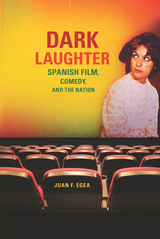 Dark Laughter: Spanish Film, Comedy, and the Nation
Juan F. Egea
University of Wisconsin Press, 2013 In Dark Laughter, Juan F. Egea provides a remarkable in-depth analysis of the dark comedy film genre in Spain, as well as a provocative critical engagement with the idea of national cinema, the visual dimension of cultural specificity, and the ethics of dark humor.
Egea begins his analysis with General Franco's dictatorship in the 1960s—a regime that opened the country to new economic forces while maintaining its repressive nature—exploring key works by Luis García Berlanga, Marco Ferreri, Fernando Fernán-Gómez, and Luis Buñuel. Dark Laughter then moves to the first films of Pedro Almodóvar in the early 1980s during the Spanish political transition to democracy before examining Alex de la Iglesia and the new dark comedies of the 1990s. Analyzing this younger generation of filmmakers, Egea traces dark comedy to Spain's displays of ultramodernity such as the Universal Exposition in Seville and the Barcelona Olympic Games.
At its core, Dark Laughter is a substantial inquiry into the epistemology of comedy, the intricacies of visual modernity, and the relationship between cinema and a wider framework of representational practices.
Dark Legs and Silk Kisses: The Beatitudes of the Spinners
Angela Jackson
Northwestern University Press, 1993 Winner of the Carl Sandburg Award for Poetry
Angela Jackson brings her remarkable linguistic and poetic gifts to the articulation of African-American experience. The recurrent motif of the spider, which she presents as both creator and predator, demonstrates her deliberate reshaping of myth in the context of contemporary human experience. Informed by African-American speech and poetic traditions, yet uniquely her own, these poems display Jackson's stylistic grace, her exuberance and vitality of spirit, and her emotional sensitivity and psychological insight.
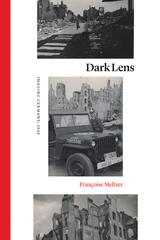 Dark Lens: Imaging Germany, 1945
Françoise Meltzer
University of Chicago Press, 2019 Esteemed scholar Françoise Meltzer examines images of war ruins in Nazi Germany and the role that images play in how we construct memories of war.
The ruins of war have long held the power to stupefy and appall. Can such ruins ever be persuasively depicted and comprehended? Can images of ruins force us to identify with the suffering of the enemy and raise uncomfortable questions about forgiveness and revenge?
Françoise Meltzer explores these questions in Dark Lens, which uses the images of war ruins in Nazi Germany to investigate problems of aestheticization and the representation of catastrophe. Through texts that give accounts of bombed-out towns in Germany in the last years of the war, painters’ attempts to depict the destruction, and her own mother’s photographs taken in 1945, Meltzer asks if any medium offers a direct experience of war ruins for the viewer. Refreshingly accessible and deeply personal, Dark Lens is a compelling look at the role images play in constructing memory.
 Dark Light of Love
John S. Dunne
University of Notre Dame Press, 2014 Dark Light of Love, John S. Dunne's twenty-third book, was written before his death on November 11, 2013. Dunne, called by Christian Century "one of the most serious and original theologians in the country," continues his quest of faith seeking understanding. In this new book he examines darkness as a metaphor for unknowing and the unknown. If dark light is like physical light traveling through the darkness of outer space, invisible until it strikes an object, then the dark light of love is the kindly light that leads us by the heart, one step at a time, toward God.
In this slender, deeply meditative work, Dunne engages with a rich variety of sources—literature, theology, philosophy, and music—in an effort to elaborate how "the dark light of love" illuminates a soul in the process whereby it is "oned" with God through emergence, separation, and finally union. As Paul Kollman observes in the foreword, by examining his own knowing and his own loving in that process, Dunne leads us to reconsider our own knowing and loving, thereby shining light on the puzzles that perplex each of us.
 Dark Matter: Art and Politics in the Age of Enterprise Culture
Gregory Sholette
Pluto Press, 2011 Art is big business, with some artists able to command huge sums of money for their works, while the vast majority are ignored or dismissed by critics. This book shows that these marginalised artists, the 'dark matter' of the art world, are essential to the survival of the mainstream and that they frequently organize in opposition to it.
Gregory Sholette, a politically engaged artist, argues that imagination and creativity in the art world originate thrive in the non-commercial sector shut off from prestigious galleries and champagne receptions. This broader creative culture feeds the mainstream with new forms and styles that can be commodified and used to sustain the few artists admitted into the elite.
This dependency, and the advent of inexpensive communication, audio and video technology, has allowed this 'dark matter' of the alternative art world to increasingly subvert the mainstream and intervene politically as both new and old forms of non-capitalist, public art. This book is essential for anyone interested in interventionist art, collectivism, and the political economy of the art world.
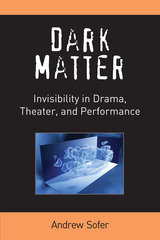 Dark Matter: Invisibility in Drama, Theater, and Performance
Andrew Sofer
University of Michigan Press, 2013 Dark Mattermaps the invisible dimension of theater whose effects are felt everywhere in performance. Examining phenomena such as hallucination, offstage character, offstage action, sexuality, masking, technology, and trauma, Andrew Sofer engagingly illuminates the invisible in different periods of postclassical western theater and drama. He reveals how the invisible continually structures and focuses an audience’s theatrical experience, whether it’s black magic in Doctor Faustus, offstage sex in A Midsummer Night’s Dream, masked women in The Rover, self-consuming bodies in Suddenly Last Summer, or surveillance technology in The Archbishop’s Ceiling. Each discussion pinpoints new and striking facets of drama and performance that escape sight. Taken together, Sofer’s lively case studies illuminate how dark matter is woven into the very fabric of theatrical representation. Written in an accessible style and grounded in theater studies but interdisciplinary by design, Dark Matter will appeal to theater and performance scholars, literary critics, students, and theater practitioners, particularly playwrights and directors.
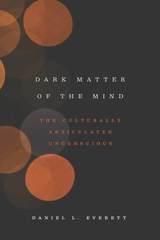 Dark Matter of the Mind: The Culturally Articulated Unconscious
Daniel L. Everett
University of Chicago Press, 2016 Is it in our nature to be altruistic, or evil, to make art, use tools, or create language? Is it in our nature to think in any particular way? For Daniel L. Everett, the answer is a resounding no: it isn’t in our nature to do any of these things because human nature does not exist—at least not as we usually think of it. Flying in the face of major trends in Evolutionary Psychology and related fields, he offers a provocative and compelling argument in this book that the only thing humans are hardwired for is freedom: freedom from evolutionary instinct and freedom to adapt to a variety of environmental and cultural contexts.
Everett sketches a blank-slate picture of human cognition that focuses not on what is in the mind but, rather, what the mind is in—namely, culture. He draws on years of field research among the Amazonian people of the Pirahã in order to carefully scrutinize various theories of cognitive instinct, including Noam Chomsky’s foundational concept of universal grammar, Freud’s notions of unconscious forces, Adolf Bastian’s psychic unity of mankind, and works on massive modularity by evolutionary psychologists such as Leda Cosmides, John Tooby, Jerry Fodor, and Steven Pinker. Illuminating unique characteristics of the Pirahã language, he demonstrates just how differently various cultures can make us think and how vital culture is to our cognitive flexibility. Outlining the ways culture and individual psychology operate symbiotically, he posits a Buddhist-like conception of the cultural self as a set of experiences united by various apperceptions, episodic memories, ranked values, knowledge structures, and social roles—and not, in any shape or form, biological instinct.
The result is fascinating portrait of the “dark matter of the mind,” one that shows that our greatest evolutionary adaptation is adaptability itself.
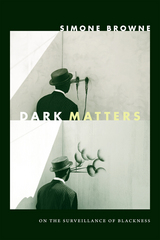 Dark Matters: On the Surveillance of Blackness
Simone Browne
Duke University Press, 2015 In Dark Matters Simone Browne locates the conditions of blackness as a key site through which surveillance is practiced, narrated, and resisted. She shows how contemporary surveillance technologies and practices are informed by the long history of racial formation and by the methods of policing black life under slavery, such as branding, runaway slave notices, and lantern laws. Placing surveillance studies into conversation with the archive of transatlantic slavery and its afterlife, Browne draws from black feminist theory, sociology, and cultural studies to analyze texts as diverse as the methods of surveilling blackness she discusses: from the design of the eighteenth-century slave ship Brooks, Jeremy Bentham's Panopticon, and The Book of Negroes, to contemporary art, literature, biometrics, and post-9/11 airport security practices. Surveillance, Browne asserts, is both a discursive and material practice that reifies boundaries, borders, and bodies around racial lines, so much so that the surveillance of blackness has long been, and continues to be, a social and political norm.
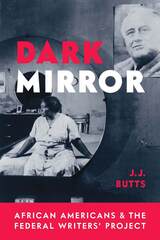 Dark Mirror: African Americans and the Federal Writers' Project
J. J. Butts
Ohio State University Press, 2021 Dark Mirror: African Americans and the Federal Writers’ Project explores Black writers’ engagement with the emerging welfare state. J. J. Butts highlights the conflicting understandings of culture and modernity that pervaded the New Deal’s most ambitious and important cultural project of the 1930s, the Federal Writers’ Project (FWP). FWP guidebooks produced by African American writers such as Richard Wright, Zora Neale Hurston, and Ralph Ellison introduced an inclusive, pluralist understanding of the nation’s culture and history. Using sociological discourses of urban pathology, they justified rebuilding landscapes to remedy social ills as part of a broader agenda for modernization. Drawing on archival research and textual analysis, Dark Mirror shows how FWP guidebooks sought to minimize the tensions between pluralism and modernization, often at the expense of the former. It also demonstrates how Black FWP authors responded to these ideas in FWP texts and in their own narrative and documentary writing. Highlighting the deep racial currents undercutting the promises of the welfare state, these texts provide what Richard Wright called a “dark mirror” for the nation, setting up new modes of engagement with liberalism and reshaping African American literature.
Dark Paradise: A History of Opiate Addiction in America
David T. Courtwright
Harvard University Press, 2001 In a newly enlarged edition of this eye-opening book, David T. Courtwright offers an original interpretation of a puzzling chapter in American social and medical history: the dramatic change in the pattern of opiate addiction--from respectable upper-class matrons to lower-class urban males, often with a criminal record. Challenging the prevailing view that the shift resulted from harsh new laws, Courtwright shows that the crucial role was played by the medical rather than the legal profession.
Dark Paradise tells the story not only from the standpoint of legal and medical sources, but also from the perspective of addicts themselves. With the addition of a new introduction and two new chapters on heroin addiction and treatment since 1940, Courtwright has updated this compelling work of social history for the present crisis of the Drug War.
Dark Passages of the Bible
Matthew J. Ramage
Catholic University of America Press, 2013 Following the lead of Pope Benedict XVI, in Dark Passages of the Bible Matthew Ramage weds the historical-critical approach with a theological reading of Scripture based in the patristic-medieval tradition. Whereas these two approaches are often viewed as mutually exclusive or even contradictory, Ramage insists that the two are mutually enriching and necessary for doing justice to the Bibles most challenging texts.
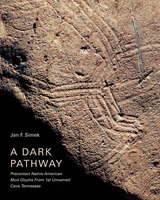 A Dark Pathway: Precontact Native American Mud Glyphs From 1st Unnamed Cave, Tennessee
Jan F. Simek
University of Tennessee Press, 2022 In A Dark Pathway: Precontact Native American Mud Glyphs from 1st Unnamed Cave, Tennessee, Jan Simek and his colleagues present two decades of research at a precontact dark zone cave art site in East Tennessee. Discovered in 1994, 1st Unnamed Cave ushered in an extensive and systematic effort to research precontact cave art sites in the Eastern Woodlands, where the tradition of cave art production was widespread among ancient peoples. Indeed, when a preliminary report about 1st Unnamed Cave was first published in 1997, there were only seven known cave art sites across the Southeast; today, that number exceeds ninety.
From the tale of the cave’s discovery in chapter 1 to descriptions of its art in later chapters, A Dark Pathway boasts nearly one hundred maps, high-resolution photographs, and illustrations that bring the story of one of North America’s premier cave art sites to life. Importantly, Simek and his colleagues also orient 1st Unnamed Cave within the broader context of cave art sites across the Southeast, elevating them as a whole to the notable prominence they deserve. Yet his analysis does more than present and situate the discovery of 1st Unnamed Cave within the greater realm of regional cave art site studies; it also calls for the protection and preservation of these fragile sites and for the acknowledgment of the still-vibrant indigenous cultures that produced them.
With a foreword by Russell Townsend, tribal historic preservation officer for the Eastern Band of Cherokee Indians, A Dark Pathway is a long-awaited volume more than twenty years in the making. Even as he delivers a comprehensive archaeological analysis, Simek’s clear presentation makes for accessible and thrilling reading not only for students of archaeology, anthropology, and Native American studies, but for interested readers as well.
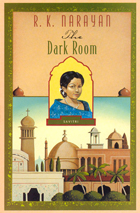 The Dark Room
R. K. Narayan
University of Chicago Press, 1981 "There are writers—Tolstoy and Henry James to name two—whom we hold in awe, writers—Turgenev and Chekhov—for whom we feel a personal affection, other writers whom we respect—Conrad for example—but who hold us at a long arm's length with their 'courtly foreign grace.' Narayan (whom I don't hesitate to name in such a context) more than any of them wakes in me a spring of gratitude, for he has offered me a second home. Without him I could never have known what it is like to be Indian."—Graham Greene
Offering rare insight into the complexities of Indian middle-class society, R. K. Narayan traces life in the fictional town of Malgudi. The Dark Room is a searching look at a difficult marriage and a woman who eventually rebels against the demands of being a good and obedient wife. In Mr. Sampath, a newspaper man tries to keep his paper afloat in the face of social and economic changes sweeping India. Narayan writes of youth and young adulthood in the semiautobiographical Swami and Friends and The Bachelor of Arts. Although the ordinary tensions of maturing are heightened by the particular circumstances of pre-partition India, Narayan provides a universal vision of childhood, early love and grief.
"The experience of reading one of his novels is . . . comparable to one's first reaction to the great Russian novels: the fresh realization of the common humanity of all peoples, underlain by a simultaneous sense of strangeness—like one's own reflection seen in a green twilight."—Margaret Parton, New York Herald Tribune
The Dark Sahara: America's War on Terror in Africa
Jeremy Keenan
Pluto Press, 2009 The US is keen to build a substantial military presence in Africa, citing the need to combat the growth of Al-Qaeda in Somalia, Algeria and other countries on the continent. This book reveals the secret US agenda behind the 'war on terror' in Africa and the shocking methods used to perpetuate the myth that the region is a hot-bed of Islamic terrorism.
Africa expert Jeremy Keenan points to overwhelming evidence suggesting that, from 2003, the Bush administration and Algerian government were responsible for hostage takings blamed on Islamic militants. This created a permissive public attitude, allowing the US to establish military bases in the region and pursue multiple imperial objectives in the name of security.
The shocking revelations in this book seriously undermine the mainstream view of Africa as a legitimate 'second front' in the 'war on terror'.
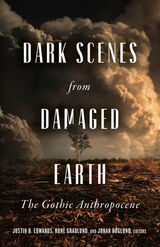 Dark Scenes from Damaged Earth: The Gothic Anthropocene
Justin D. Edwards
University of Minnesota Press, 2022 An urgent volume of essays engages the Gothic to advance important perspectives on our geological era
What can the Gothic teach us about our current geological era? More than just spooky, moonlit castles and morbid graveyards, the Gothic represents a vibrant, emergent perspective on the Anthropocene. In this volume, more than a dozen scholars move beyond longstanding perspectives on the Anthropocene—such as science fiction and apocalyptic narratives—to show that the Gothic offers a unique (and dark) interpretation of events like climate change, diminished ecosystems, and mass extinction. Embracing pop cultural phenomena like True Detective, Jaws, and Twin Peaks, as well as topics from the New Weird and prehistoric shark fiction to ruin porn and the “monstroscene,” Dark Scenes from Damaged Earth demonstrates the continuing vitality of the Gothic while opening important new paths of inquiry. These essays map a genealogy of the Gothic while providing fresh perspectives on the ongoing climate chaos, the North/South divide, issues of racialization, dark ecology, questions surrounding environmental justice, and much more. Contributors: Fred Botting, Kingston U; Timothy Clark, U of Durham; Rebecca Duncan, Linnaeus U; Michael Fuchs, U of Oldenburg, Germany; Esthie Hugo, U of Warwick; Dawn Keetley, Lehigh U; Laura R. Kremmel, South Dakota School of Mines and Technology; Timothy Morton, Rice U; Barry Murnane, U of Oxford; Jennifer Schell, U of Alaska Fairbanks; Lisa M. Vetere, Monmouth U; Sara Wasson, Lancaster U; Jeffrey Andrew Weinstock, Central Michigan U.
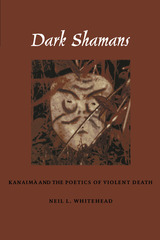 Dark Shamans: Kanaimà and the Poetics of Violent Death
Neil L. Whitehead
Duke University Press, 2002 On the little-known and darker side of shamanism there exists an ancient form of sorcery called kanaimà, a practice still observed among the Amerindians of the highlands of Guyana, Venezuela, and Brazil that involves the ritual stalking, mutilation, lingering death, and consumption of human victims. At once a memoir of cultural encounter and an ethnographic and historical investigation, this book offers a sustained, intimate look at kanaimà, its practitioners, their victims, and the reasons they give for their actions.
Neil L. Whitehead tells of his own involvement with kanaimà—including an attempt to kill him with poison—and relates the personal testimonies of kanaimà shamans, their potential victims, and the victims’ families. He then goes on to discuss the historical emergence of kanaimà, describing how, in the face of successive modern colonizing forces—missionaries, rubber gatherers, miners, and development agencies—the practice has become an assertion of native autonomy. His analysis explores the ways in which kanaimà mediates both national and international impacts on native peoples in the region and considers the significance of kanaimà for current accounts of shamanism and religious belief and for theories of war and violence.
Kanaimà appears here as part of the wider lexicon of rebellious terror and exotic horror—alongside the cannibal, vampire, and zombie—that haunts the western imagination. Dark Shamans broadens discussions of violence and of the representation of primitive savagery by recasting both in the light of current debates on modernity and globalization.
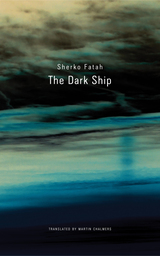 The Dark Ship
Sherko Fatah
Seagull Books, 2020 Growing up in Saddam Hussein’s Iraq, a young Kurdish boy named Kerim has ample opportunity to witness the murderous repression that defined the era for thousands of Iraqis. In Sherko Fatah’s The Dark Ship, we experience an extraordinary new voice in fiction, which tells the story of the kind of trauma and striving that leads a man from religious extremism to a vain hope for redemption. We follow Kerim from the fading memories of his childhood to his life running his family’s roadside restaurant. Captured by jihadists, he reluctantly joins the group, and grows fascinated with their charismatic leader. After a narrow escape from martyrdom and a difficult passage to Europe, Kerim, tormented by memories of his violent past, is unable to find his place in his new country. Turning yet again to his faith, he finds solace in the fundamentalist mosques of his new city. But it isn’t long before he learns once again that he cannot escape his history, his culture, or his own doubts. At once a thriller and a political narrative, The Dark Ship tracks the Kurdish experience from the war-torn mountains of northern Iraq to the bureaucracies and mosques of Berlin in a gripping journey across land and water, through ideology and faith.
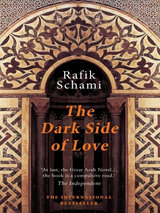 Dark Side of Love
Rafik Schami and Anthea Bell
Haus Publishing, 2011 A dead man hangs from the portal of St Paul Chapel in Damascus. He was a Muslim officer and he was murdered. But when Detective Barudi sets out to interrogate the man’s mysterious widow, the Secret Service takes the case away from him. Barudi continues to investigate clandestinely and discovers the murderer’s motive: it is a blood feud between the Mushtak and Shahin clans, reaching back to the beginnings of the 20th century. And, linked to it, a love story that can have no happy ending, for reconciliation has no place within the old tribal structures. Rafik Schami dazzling novel spans a century of Syrian history in which politics and religions continue to torment an entire people. Simultaneously, his poetic stories from three generations tell of the courage of lovers who risk death sooner than deny their passions. He has also written a heartfelt tribute to his hometown Damascus and a great and moving hymn to the power of love.
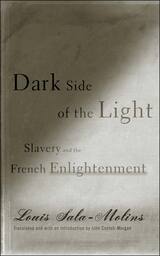 Dark Side of the Light: Slavery and the French Enlightenment
Louis Sala-Molins
University of Minnesota Press, 2006 Enlightenment thinkers such as Rousseau and Montesquieu are best known for their humanist theories and liberating influence on Western civilization. But as renowned French intellectual Louis Sala-Molins shows, Enlightenment discourses and scholars were also complicit in the Atlantic slave trade, becoming instruments of oppression and inequality.
Translated into English for the first time, Dark Side of the Light scrutinizes Condorcet’s Reflections on NegroSlavery and the works of Montesquieu, Rousseau, and Diderot side by side with the Code Noir (the royal document that codified the rules of French Caribbean slavery) in order to uncover attempts to uphold the humanist project of the Enlightenment while simultaneously justifying slavery. Wielding the pen of both the ironist and the moralist, Sala-Molins demonstrates the flawed nature of these attempts and the reasons given for this denial of rights, from the imperatives of public order to the incomplete humanity of the slave (and thus the need for his progressive humanization through slavery), to the economic prosperity that depended on his labor. At the same time, Sala-Molins uses the techniques of literature to give equal weight to the perspective of the “barefooted, the starving, and the slaves” through expository prose and scenes between slave and philosopher, giving moral agency and flesh-and-blood dimensions to issues most often treated as abstractions.
Both an urgent critique and a measured analysis, Dark Side of the Light reveals the moral paradoxes of Enlightenment philosophies and their world-changing consequences.
Louis Sala-Molins is a moral and political philosopher and emeritus professor at the University of Toulouse. He is the author of many books, including Le Code Noir, ou Le calvaire de Canaan and L’Afrique aux Amériques.
John Conteh-Morgan is associate professor of French and Francophone, African-American, and African studies at Ohio State University. He is the author of Theatre and Drama in Francophone Africa: A Critical Introduction.
The Dark Sister
Rebecca Goldstein
University of Wisconsin Press, 2004 If you like the fiction of Henry James, the psychology of his brother William, and have a taste for Gothic mysteries you will enjoy The Dark Sister. The novel is a curious mixture of the Victorian repressiveness about sex, intricate stories within stories, and Jewish humor.
With a new afterword
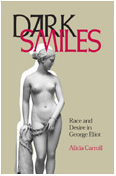 Dark Smiles: Race and Desire in George Eliot
Alicia Carroll
Ohio University Press, 2002 Although George Eliot has long been described as “the novelist of the Midlands,” she often brought the outer reaches of the empire home in her work. Dark Smiles: Race and Desire in George Eliot studies Eliot’s problematic, career-long interest in representing racial and ethnic Otherness.
Placing Eliot’s diverse and wide-ranging treatment of Otherness in its contemporary context, Alicia Carroll argues that Eliot both engages and resists traditional racial and ethnic representations of Otherness. Carroll finds that Eliot, like other women writers of her time, often appropriates narratives of Otherness to explore issues silenced in mainstream Victorian culture, particularly the problem of the desirous woman. But if Otherness in Eliot’s century was usually gendered as woman and constructed as the object of white male desire, Eliot often seeks to subvert that vision. Professor Carroll demonstrates Eliot’s tendency to “exoticize” images of girlhood, vocation, and maternity in order to critique and explore gendered subjectivities. Indeed, the disruptive presence of a racial or ethnic outsider often fractures Eliot’s narratives of community, creating a powerful critique of home culture.
The consistent reliance of Eliot’s work upon racial and ethnic Otherness as a mode of cultural critique is explored here for the first time in its entirety.
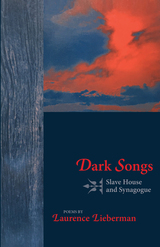 Dark Songs: Slave House and Synagogue
Laurence Lieberman
University of Arkansas Press, 1996 Laurence Lieberman writes poems that successfully utilize techniques from every possible form of literature—including histories, travelogues, short stories, and epics. All the while, his lines maintain a deft balance of lyrical intensity, clear, methodical description, and the pure dialect of the characters living his poetry. In Dark Songs: Slave House and Synagogue, Lieberman creates a narrative mosaic of the eastern Caribbean islands, ranging from St. Eustatius in the eighteenth century to the island of Grenada after the United States–led invasion in 1983. When he writes of African slaves, British governors, Dutch Jews, island guerillas, fallen Swiss nobility, and piratelike charter captains, the wealth of his details, the force, and often the truth behind his stories allow us to witness the whole human saga of the Caribbean. With humor, absolute candor, and relentless observation, Lieberman has, as reviewer Samuel Maio says, “given is a new form of fiction in his poetry. He has created a singular art.”
Dark Stones
Dias de Melo, Introduction by Maria João Dodman, Translated by Gregory McNab
Tagus Press, 2021 Bringing to life his countrymen’s daily struggles with the sea, struggles carried out against the dark-stoned background of their homeland, novelist Dias de Melo tells the collective story of Azorean seamen at a moment of great change toward the end of the nineteenth century. Confronted with increasing economic hardship and social and political tensions, whalers faced the choice of continuing to eke out a living at home or forsaking their boats for the shores of America.
This expanded Tagus Press edition features Gregory McNab’s masterful 1988 translation of Dark Stones and a new introduction from Maria João Dodman. As an insider from the island of Pico, Dias de Melo writes in a realistic style that is passionate and forceful, yet tenacious, without ever losing certainty and control.
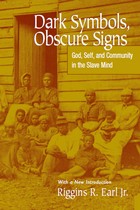 Dark Symbols, Obscure Signs: God, Self, and Community in the Slave Mind
Riggins R. Earl
University of Tennessee Press, 2003 In Dark Symbols, Obscure Signs, Riggins R. Earl Jr. investigates how slave owners intentionally manipulated Christianity as they passed it on to slaves and demonstrates how slaves successfully challenged that distorted interpretation. Analyzing slaves’ response to Christianity as expressed in testimonies, songs, stories, and sermons, Earl reveals the conversion experience as the initial step toward an autonomy that defied white control. Contrary to what their white owners expected or desired, enslaved African Americans found in Christianity a life-affirming identity and strong sense of community.
Slave owners believed Christianity would instill docility and obedience, but the slaves discovered in the Bible a different message, sharing among themselves the “dark symbols and obscure signs” that escaped the notice of their captors. Finding a sense of liberation rather than submission in their conversion experience, slaves discovered their own self-worth and their values as children of God.
Originally published in 1993, Dark Symbols, Obscure Signs traces the legacy of slaves’ embrace of Christianity both during and after the slavery era. In a new introduction, the author places the book within the context of contemporary scholarship on the roots of the African American cultural experience. He argues that any interpretation of this experience must begin with a foundational study of the theological and ethical constructs that have shaped the way blacks understand themselves in relationship to God, their oppressors, and each other.
The Author: Riggins R. Earl Jr. teaches at the Interdenominational Theological Center in Atlanta.
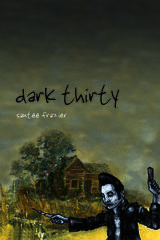 Dark Thirty
Santee Frazier
University of Arizona Press, 2009 Writing sometimes in dialect, sometimes in gunshot bursts, sometimes in sinuous lines that snake across the page, Santee Frazier crafts poems that are edgy and restless. The poems in Dark Thirty, Frazier’s debut collection, address subjects that are not often thought of as “poetic,” like poverty, alcoholism, cruelty, and homelessness. Frazier’s poems emerge from the darkest corners of experience: “I search the cabinet and icebox—drink the pickle juice / from the jar. Bologna, / hard at the edges, / browning on the kitchen / table since yesterday. / I search the cabinet and icebox—the curdling / milk almost smells drinkable.”
Dark Thirty takes us on a loosely autobiographical trip through Cherokee country, the backwoods towns and the big cities, giving us clear-eyed portraits of Native people surviving contemporary America. In Frazier’s world, there is no romanticizing of Native American life. Here cops knock on the door of a low-rent apartment after a neighbor has been stabbed. Here a poem’s narrator recalls firing a .38 pistol—“barrel glowing like oil in a gutter-puddle”—for the first time. Here a young man catches a Greyhound bus to Flagstaff after his ex-girlfriend tells him he has fathered a child. Yet even in the midst of violence and despair there is time for the beauty of the world to shine through: “The Cutlass rattling out / the last fumes of gas, engine stops, / the night dimly lit by the moon / hung over the treetops; / owls calling each other from / hilltop to valley bend.”
Like viewing photographs that repel us even as they draw us in, we are pulled into these poems. We’re compelled to turn the page and read the next poem. And the next. And each poem rewards us with a world freshly seen and remade for us of sound and image and voice.
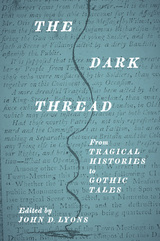 The Dark Thread: From Tragical Histories to Gothic Tales
John D. Lyons
University of Delaware Press, 2011 In The Dark Thread, scholars examine a set of important and perennial narrative motifs centered on violence within the family as they have appeared in French, English, Spanish, and American literatures. Over fourteen essays, contributors highlight the connections between works from early modernity and subsequent texts from the eighteenth through the twentieth centuries, in which incidents such as murder, cannibalism, poisoning, the burial of the living, the failed burial of the dead, and subsequent apparitions of ghosts that haunt the household unite “high” and “low” cultural traditions. This book questions the traditional separation between the highly honored genre of tragedy and the less respected and generally less well-known genres of histoires tragiques, gothic tales and novels, and horror stories.
Published by University of Delaware Press. Distributed worldwide by Rutgers University Press.
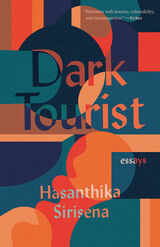 Dark Tourist: Essays
Hasanthika Sirisena
Ohio State University Press, 2021 Finalist for the 2022 LAMBDA literary award in bisexual nonfiction Winner of the 2021 Gournay Prize “Shimmers with honesty, vulnerability, and circumspection.” —Kirkus
“Sirisena explores how stories can become a ‘talisman against the overwhelming darkness of another’s pain’ in her emotionally charged nonfiction debut … [Her] searching spirit leaves readers with plenty to dig into.” —Publishers Weekly Dark tourism—visiting sites of war, violence, and other traumas experienced by others—takes different forms in Hasanthika Sirisena’s stunning excavation of the unexpected places (and ways) in which personal identity and the riptides of history meet. The 1961 plane crash that left a nuclear warhead buried near her North Carolina hometown, juxtaposed with reflections on her father’s stroke. A visit to Jaffna in Sri Lanka—the country of her birth, yet where she is unmistakably a foreigner—to view sites from the recent civil war, already layered over with the narratives of the victors. A fraught memory of her time as a young art student in Chicago that is uneasily foundational to her bisexual, queer identity today. The ways that life-changing impairments following a severe eye injury have shaped her thinking about disability and self-worth. Deftly blending reportage, cultural criticism, and memoir, Sirisena pieces together facets of her own sometimes-fractured self to find wider resonances with the human universals of love, sex, family, and art—and with language’s ability to both fail and save us. Dark Tourist becomes then about finding a home, if not in the world, at least within the limitless expanse of the page.
Dark Traffic: Poems
Joan Naviyuk Kane
University of Pittsburgh Press, 2021 Finalist, 2023 Kingsley Tufts Poetry Award
Dark Traffic creates landmarks through language, by which its speakers begin to describe traumas in order to survive and move through them. With fine detail and observation, these poems work in some way like poetic weirs: readers of Kane’s work will see the artic and subarctic, but also, more broadly, America, and the exigencies of motherhood, indigenous experience, feminism, and climate crises alongside the near-necropastoral of misogyny, violence, and systemic failures. These contexts catch the voice of the poems’ speakers, and we perceive the currents they create.
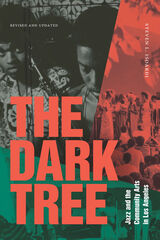 The Dark Tree: Jazz and the Community Arts in Los Angeles
Steven L. Isoardi
Duke University Press, 2023 In the early 1960s, pianist Horace Tapscott gave up a successful career in Lionel Hampton’s band and returned to his home in Los Angeles to found the Pan Afrikan Peoples Arkestra, a community arts group that focused on providing community-oriented jazz and jazz training. Over the course of almost forty years, the Arkestra, together with the related Union of God’s Musicians and Artists Ascension collective, was at the forefront of the vital community-based arts movement in Black Los Angeles. Some three hundred artists—musicians, vocalists, poets, playwrights, painters, sculptors, and graphic artists—passed through these organizations, many ultimately remaining within the community and others moving on to achieve international fame. In The Dark Tree, Steven L. Isoardi draws on one hundred in-depth interviews with the Arkestra’s participants to tell the history of the important and largely overlooked community arts movement of Black Los Angeles. This revised and updated edition brings the story of the Arkestra up to date, as its ethos and aesthetic remain vital forces in jazz and popular music to this day.
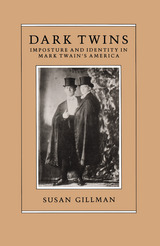 Dark Twins: Imposture and Identity in Mark Twain's America
Susan Gillman
University of Chicago Press, 1989 "Many persons have such a horror of being taken in," wrote P. T. Barnum, "that they believe themselves to be a sham and are continually humbugging themselves." Mark Twain enjoyed trading on that horror, as the many confidence men, assumed identities, and disguised characters in his fiction attest. In Dark Twins, Susan Gillman challenges the widely held assumption that Twain's concern with identity is purely biographical and argues that what has been regarded as a problem of individual psychology must be located instead within American society around the turn of the century. Drawing on Twain's whole writing career, but focusing on the controversial late period of social "pessimism" and literary "incoherence," Gillman situates Twain and his work in historical context, demonstrating the complex interplay between his most intimate personal and authorial identity and the public attitudes toward race, gender, and science.
Gillman shows that laws regulating race classification, paternity, and rape cases underwrite Twain's critical exploration of racial and sexual difference in the writings of the 1890s and after, most strikingly in the little-known manuscripts that Gillman calls the "tales of transvestism." The "pseudoscience" of spiritualism and the "science" of psychology provide the cultural vocabularies essential to Twain's fantasy and science fiction writings of his last two decades. Twain stands forth finally as a representative man, not only a child of his culture, but also as one implicated in a continuing American anxiety about freedom, race, and identity.
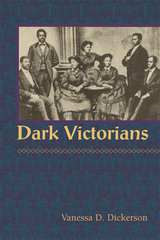 Dark Victorians
Vanessa D. Dickerson
University of Illinois Press, 2007 Dark Victorians illuminates the cross-cultural influences between white Britons and black Americans during the Victorian age. In carefully analyzing literature and travel narratives by Ida B. Wells, Harriet Martineau, Charles Dickens, Frederick Douglass, Thomas Carlyle, W.E.B. Du Bois, and others, Vanessa D. Dickerson reveals the profound political, racial, and rhetorical exchanges between the groups. From the nineteenth-century black nationalist David Walker, who urged emigrating African Americans to turn to England, to the twentieth-century writer Maya Angelou, who recalls how those she knew in her childhood aspired to Victorian ideas of conduct, black Americans have consistently embraced Victorian England. At a time when scholars of black studies are exploring the relations between diasporic blacks, and postcolonialists are taking imperialism to task, Dickerson considers how Britons negotiated their support of African Americans with the controlling policies they used to govern a growing empire of often dark-skinned peoples, and how philanthropic and abolitionist Victorian discourses influenced black identity, prejudice, and racism in America.
Dark Victory
Edited, with an introduction by Bernard F. Dick; Tino T. Balio, Series Editor
University of Wisconsin Press, 1981 Dark Victory, released in 1939, was a daring movie for its time. it depicted its heroine, Bette Davis, dying of a brain tumor. The film blended romance and realism so successfully that it is still a model for movies about death and dying today.
Bette Davis drew upon every mood she had ever expressed—insouciance, impatience, anger, passion, acquiescence. She worked hard at the role, reveling in a story that, according to her account, she had actively campaigned for. She also benefited greatly by the professional talents of director Edmund Goulding and screenwriter Casey Robinson and a supporting cast that included Humphrey Bogart.
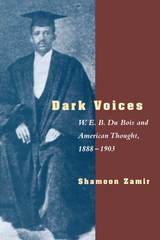 Dark Voices: W. E. B. Du Bois and American Thought, 1888-1903
Shamoon Zamir
University of Chicago Press, 1995 Dark Voices is the first sustained examination of the intellectual formation of W. E. B. Du Bois, tracing the scholar and civil rights leader's thought from his undergraduate days in the 1880s to the 1903 publication of his masterpiece, The Souls of Black Folk, and offering a new reading of his work from this period.
Bringing to light materials from the Du Bois archives that have not been discussed before, Shamoon Zamir explores Du Bois's deep engagement with American and European philosophy and social science. He examines the impact on Du Bois of his studies at Harvard with William James and George Santayana, and shows how the experience of post-Reconstruction racism moved Du Bois from metaphysical speculation to the more instrumentalist knowledge of history and the new discipline of sociology, as well as toward the very different kind of understanding embodied in the literary imagination. Providing a new and detailed reading of The Souls of Black Folk in comparison with Hegel's Phenomenology of Mind, Zamir challenges accounts that place Du Bois alongside Emerson and James, or characterize him as a Hegelian idealist. This reading also explores Du Bois's relationship to African American folk culture, and shows how Du Bois was able to dramatize the collapse of many of his hopes for racial justice and liberation.
The first book to place The Souls of Black Folk in its intellectual context, Dark Voices is a case study of African American literary development in relation to the broader currents of European and American thought.
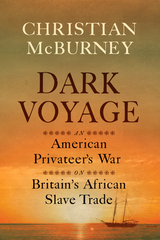 Dark Voyage: An American Privateer's War on Britain's African Slave Trade
Christian M. McBurney
Westholme Publishing, 2022 At the start of the American War of Independence, Great Britain dominated overseas commerce and was the leading slave-trading nation in the world. In 1776, American privateers—privately owned ships granted commissions by the Continental Congress to attack and disrupt enemy trade—began to prey on British merchantmen. Some privateers captured British slave ships with African captives on board just before they arrived at their Caribbean Island destinations.
One privateer was given an extraordinary task: to sail across the Atlantic to attack British slave trading posts and ships on the coast of West Africa. Based on a little-known contemporary primary source, The Journal of the Good Ship Marlborough, the story of this remarkable voyage is told here for the first time and will have a major impact on our understanding of the Atlantic slave trade and the American Revolution. The voyage of the Marlborough was the brainchild of John Brown, a prominent Rhode Island merchant—and an investor in two slave trading voyages himself. The motivation was not altruistic. The officers and crew of the Marlborough wanted to advance the cause of independence from Britain through harming Britain’s economy, but they also desired to enrich themselves by selling the plunder they captured—including enslaved Africans.
The work of the Marlborough and other American privateers was so disruptive that it led to an unintended consequence: virtually halting the British slave trade. British slave merchants, alarmed at losing money from their ships being captured, invested in many fewer slave voyages. As a result tens of thousands of Africans were not forced onto slave ships, transported to the New World, and consigned to a lifetime of slavery or an early death.
In Dark Voyage: An American Privateer’s War on Britain’s African Slave Trade, veteran researcher and writer Christian McBurney recreates the harrowing voyage of the Marlborough, while placing it in the context of Atlantic World slavery. In Africa, Marlborough’s officers come across an array of African and European slave traders willing to assist them in attacking the British. This book is also the first study to detail the many captures American privateers made of British slave ships during the Revolutionary War.
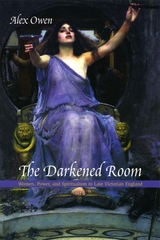 The Darkened Room: Women, Power, and Spiritualism in Late Victorian England
Alex Owen
University of Chicago Press, 2004 A highly original study that examines the central role played by women as mediums, healers, and believers during the golden age of spiritualism in the late Victorian era, The Darkened Room is more than a meditation on women mediums—it's an exploration of the era's gender relations.
The hugely popular spiritualist movement, which maintained that women were uniquely qualified to commune with spirits of the dead, offered female mediums a new independence, authority, and potential to undermine conventional class and gender relations in the home and in society.
Using previously unexamined sources and an innovative approach, Alex Owen invokes the Victorian world of darkened séance rooms, theatrical apparitions, and moving episodes of happiness lost and regained. She charts the struggles between spiritualists and the medical and legal establishments over the issue of female mediumship, and provides new insights into the gendered dynamics of Victorian society.
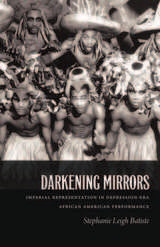 Darkening Mirrors: Imperial Representation in Depression-Era African American Performance
Stephanie Leigh Batiste
Duke University Press, 2012 In Darkening Mirrors, Stephanie Leigh Batiste examines how African Americans participated in U.S. cultural imperialism in Depression-era stage and screen performances. A population treated as second-class citizens at home imagined themselves as empowered, modern U.S. citizens and transnational actors in plays, operas, ballets, and films. Many of these productions, such as the 1938 hits Haiti and The "Swing" Mikado recruited large casts of unknown performers, involving the black community not only as spectators but also as participants. Performances of exoticism, orientalism, and primitivism are inevitably linked to issues of embodiment, including how bodies signify blackness as a cultural, racial, and global category. Whether enacting U.S. imperialism in westerns, dramas, dances, songs, jokes, or comedy sketches, African Americans maintained a national identity that registered a diasporic empowerment and resistance on the global stage. Boldly addressing the contradictions in these performances, Batiste challenges the simplistic notion that the oppressed cannot identify with oppressive modes of power and enact themselves as empowered subjects. Darkening Mirrors adds nuance and depth to the history of African American subject formation and stage and screen performance.
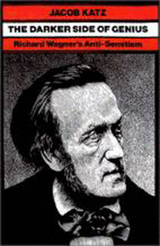 The Darker Side of Genius: Richard Wagner’s Anti-Semitism
Jacob. Katz
University Press of New England, 2002 For some, Richard Wagner is infamous as the favorite composer of Hitler, who seems to have admired Wagner as an early exponent of his own racist ideology and worldview. Impressed by this assumption victims of Hitler have also associated Wagner and his music with Nazism to such an extent that in Israel a ban on public performance of that music is upheld to this day. Jacob Katz, a scholar of international repute, approaches the highly charged issue of Richard Wagner’s anti-Semitism with the tools of a critical historian, asking two central questions: What role did anti-Semitism play in the life and work of Richard Wagner? And how did his anti-Jewish thoughts and sentiments contribute to the development of political anti-Semitism and Nazism? In this first comprehensive and judicious treatment of Wagner’s anti-Semitism, Katz analyzes the composer’s attitudes in their own time and place and in the context of Wagner’s life and aspirations. He traces Wagner’s feelings toward Jews chronologically, showing that the composer was ultimately obsessed by a deep-seated Judeophobia generated by conflict with his Jewish mentors and competitors. But he argues against reading the later emergence of Nazism back into Wagner’s life and work. While not absolving Wagner from responsibility for his views, Katz contends that contemporary Jews have paradoxically and uncritically adopted the Nazis’ assumptions about Wagner. Katz argues that Wagner’s music is untainted by his anti-Semitism, that there is, in fact, very little in Wagner’s art that, without forced speculation, can be related to his racist views.
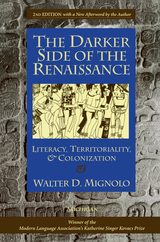 The Darker Side of the Renaissance: Literacy, Territoriality, & Colonization, 2nd Edition
Walter D. Mignolo
University of Michigan Press, 2003 The Darker Side of the Renaissance weaves together literature, semiotics, history, historiography, cartography, and cultural theory to examine the role of language in the colonization of the New World. Exploring the many connections among writing, social organization, and political control, including how alphabetic writing is linked with the exercise of power, Walter D. Mignolo claims that European forms of literacy were at the heart of New World colonization. It has long been acknowledged that Amerindians were at a disadvantage in facing European invaders because native cultures did not employ the same kind of texts (hence "knowledge") that the Europeans valued. Yet no one but Mignolo has so thoroughly examined either the process or the implications of conquest and destruction through language. The book continues to challenge commonplace understandings of New World history and to stimulate new colonial and postcolonial scholarship.
Walter D. Mignolo is Professor in the Department of Romance Studies and the Program in Literature, Duke University.
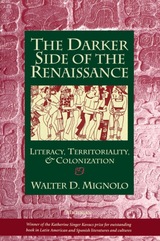 The Darker Side of the Renaissance: Literacy, Territoriality, and Colonization
Walter D. Mignolo
University of Michigan Press, 1995 Winner of the Modern Language Association's Katherine Singer Kovacs Prize.
The Darker Side of the Renaissance weaves together literature, semiotics, history, historiography, cartography, geography, and cultural theory to examine the role of language in the colonization of the New World.
Walter D. Mignolo locates the privileging of European forms of literacy at the heart of New World colonization. He examines how alphabetic writing is linked with the exercise of power, what role "the book" has played in colonial relations, and the many connections between writing, social organization, and political control. It has long been acknowledged that Amerindians were at a disadvantage in facing European invaders because native cultures did not employ the same kind of texts (hence "knowledge") that were validated by the Europeans. Yet no study until this one has so thoroughly analyzed either the process or the implications of conquest and destruction through sign systems.
Starting with the contrasts between Amerindian and European writing systems, Mignolo moves through such topics as the development of Spanish grammar, the different understandings of the book as object and text, principles of genre in history-writing, and an analysis of linguistic descriptions and mapping techniques in relation to the construction of territoriality and understandings of cultural space.
The Darker Side of the Renaissance will significantly challenge commonplace understandings of New World history. More importantly, it will continue to stimulate and provide models for new colonial and post-colonial scholarship.
". . . a contribution to Renaissance studies of the first order. The field will have to reckon with it for years to come, for it will unquestionably become the point of departure for discussion not only on the foundations and achievements of the Renaissance but also on the effects and influences on colonized cultures." -- Journal of Hispanic/ Latino Theology
Walter D. Mignolo is Professor in the Department of Romance Studies and the Program in Literature, Duke University.
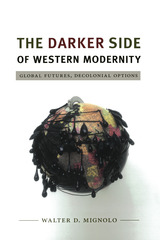 The Darker Side of Western Modernity: Global Futures, Decolonial Options
Walter D. Mignolo
Duke University Press, 2011 During the Renaissance and the Enlightenment, coloniality emerged as a new structure of power as Europeans colonized the Americas and built on the ideas of Western civilization and modernity as the endpoints of historical time and Europe as the center of the world. Walter D. Mignolo argues that coloniality is the darker side of Western modernity, a complex matrix of power that has been created and controlled by Western men and institutions from the Renaissance, when it was driven by Christian theology, through the late twentieth century and the dictates of neoliberalism. This cycle of coloniality is coming to an end. Two main forces are challenging Western leadership in the early twenty-first century. One of these, “dewesternization,” is an irreversible shift to the East in struggles over knowledge, economics, and politics. The second force is “decoloniality.” Mignolo explains that decoloniality requires delinking from the colonial matrix of power underlying Western modernity to imagine and build global futures in which human beings and the natural world are no longer exploited in the relentless quest for wealth accumulation.
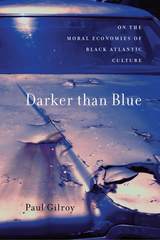 Darker than Blue: On the Moral Economies of Black Atlantic Culture
Paul Gilroy
Harvard University Press, 2011 Paul Gilroy seeks to awaken a new understanding of W. E. B. Du Bois’s intellectual and political legacy. At a time of economic crisis, environmental degradation, ongoing warfare, and heated debate over human rights, how should we reassess the changing place of black culture?
Gilroy considers the ways that consumerism has diverted African Americans’ political and social aspirations. Luxury goods and branded items, especially the automobile—rich in symbolic value and the promise of individual freedom—have restratified society, weakened citizenship, and diminished the collective spirit. Jazz, blues, soul, reggae, and hip hop are now seen as generically American, yet artists like Jimi Hendrix, Chuck Berry, and Bob Marley, who questioned the allure of mobility and speed, are not understood by people who have drained their music of its moral power.
Gilroy explores the way in which objects and technologies can become dynamic social forces, ensuring black culture’s global reach while undermining the drive for equality and justice. Drawing on the work of a number of thinkers, including Michel Foucault, Hannah Arendt, Primo Levi, and Frantz Fanon, he examines the ethical dimensions of living in a society that celebrates the object. What are the implications for our notions of freedom?
With his brilliant, provocative analysis and astonishing range of reference, Gilroy revitalizes the study of African American culture. He traces the shifting character of black intellectual and social movements, and shows how we can construct an account of moral progress that reflects today’s complex realities.
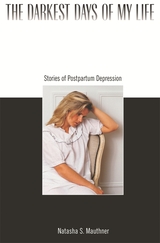 The Darkest Days of My Life: Stories of Postpartum Depression
Natasha S. Mauthner
Harvard University Press, 2002 Having a baby is surely one of the pinnacle events of a woman's life, full of joy, serenity, and contentment--or so society tells a new mother, who thus finds herself ill-prepared for the exhaustion, boredom, and isolation that can follow childbirth. The resulting depression--how it is experienced, and how it might be relieved--is the subject of Natasha Mauthner's insightful and compassionate book, which recounts the stories of new mothers caught between a cultural ideal and a far more complex reality.
In Mauthner's interviews with thirty-five new mothers in Britain and America, we see how women contend with images of motherhood as a state of bliss for everyone but themselves. The British women tend to view their depression as a personal failure of strength; American women, as a result of hormonal fluctuation. But all vividly describe a similar state of paralysis and loneliness, with alternating love, resentment, and guilt toward their babies.
Most usefully, these women reveal the positive impact that other new mothers had on their depression. Far more important than their own family's support or understanding, the sense of not being alone in their trials emerges as a key source of strength and healing for women struggling with postpartum depression.
The Darkest Evening
William Durbin
University of Minnesota Press, 2011 In the 1930s, some 6,000 Finnish Americans traveled to Karelia, a province in Northwestern Russia, hoping to leave the Depression behind and to establish a workers’ paradise. Based on these true events, The Darkest Evening chronicles the story of Jake Maki, whose father, caught up in the socialist fervor washing over their Finnish mining community in Minnesota, moves their family to the Soviet Union.
Instead of finding the utopia they were promised, Jake and his family encounter only disappointment and hardship. When Stalin’s secret police begin targeting Americans for arrest, his worst fears are confirmed, and Jake leads his family on a daring midwinter escape attempt on cross-country skis, fleeing toward the Finnish border.
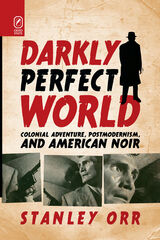 Darkly Perfect World: Colonial Adventure, Postmodernism, and American Noir
Stanley Orr
Ohio State University Press, 2010 Stanley Orr’s Darkly Perfect World offers a large-scale historical narrative about the way American crime fiction and film have changed throughout the twentieth century. Orr argues that films noirs and noir fictions dramatize Raymond Chandler’s pronouncement that “Even in death, a man has a right to his own identity.” Orr illuminates a noir ethos committed to “authenticating alienation”: subjectivity managed through radical polarization of Self and Other. Distinguishing a heretofore unrecognized context for American noir, Orr demonstrates that Chandler and Dashiell Hammett arrive at this subject within and against the colonial adventure genre. While the renegades of Joseph Conrad and Louis Becke project a figure vulnerable to shifts in cultural context, the noir protagonist exemplifies alienated selfhood and often performs a “continental operation” against the slippages of the colonial adventurer. But even as Orson Welles, Billy Wilder, and other noir virtuosi persist with this revision of late Victorian adventure, Chester Himes, Dorothy Hughes, and John Okada experiment with hard-boiled alienation for a subversion of noir that resonates throughout literary postmodernism. In their respective avant-garde novels, Thomas Pynchon, Ishmael Reed, and Paul Auster expose what K.W. Jeter terms the “darkly perfect world” of noir, thus giving rise to and enabling the con men and “connected guys” of contemporary films noirs such as Bryan Singer’s The Usual Suspects, David Fincher’s Seven, Christopher Nolan’s Memento, and Quentin Tarantino’s Reservoir Dogs.
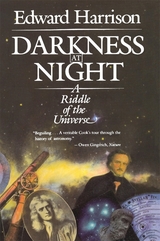 Darkness at Night: A Riddle of the Universe
Edward Harrison
Harvard University Press, 1987 Why is the sky dark at night?
The answer to this ancient and celebrated riddle, says Edward Harrison, seems relatively simple: the sun has set and is now shining on the other side of the earth. But suppose we were space travelers and far from any star. Out in the depths of space the heavens would be dark, even darker than the sky seen from the earth on cloudless and moonless nights. For more than four centuries, astronomers and other investigators have pondered the enigma of a dark sky and proposed many provocative but incorrect answers. Darkness at Night eloquently describes the misleading trails of inquiry and strange ideas that have abounded in the quest for a solution.
In tracing this story of discovery—one of the most intriguing in the history of science—astronomer and physicist Harrison explores the concept of infinite space, the structure and age of the universe, the nature of light, and other subjects that once were so perplexing. He introduces a range of stellar intellects, from Democritus in the ancient world to Digges in the reign of Queen Elizabeth, followed by Kepler, Newton, Halley, Chéseaux, Olbers, Poe, Kelvin, and Bondi.
Harrison’s style is engaging, incisive yet poetic, and his strong grasp of history—from the Greeks to the twentieth century—adds perspective, depth, and scope to the narrative. Richly illustrated and annotated, this book will delight and enlighten both the casual reader and the serious inquirer.
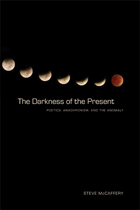 The Darkness of the Present: Poetics, Anachronism, and the Anomaly
Steve McCaffery
University of Alabama Press, 2012 The Darkness of the Present includes essays that collectively investigate the roles of anomaly and anachronism as they work to unsettle commonplace notions of the “contemporary” in the field of poetics. In the eleven essays of The Darkness of the Present, poet and critic Steve McCaffery argues that by approaching the past and the present as unified entities, the contemporary is made historical at the same time as the historical is made contemporary.
McCaffery’s writings work against the urge to classify works by placing them in standard literary periods or disciplinary partitions. Instead, McCaffery offers a variety of insights into unusual and ingenious affiliations between poetic works that may have previously seemed distinctive. He questions the usual associations of originality and precedence. In the process, he repositions many texts within genealogies separate from the ones to which they are traditionally assigned.
The chapters in The Darkness of the Present might seem to present an eclectic façade and can certainly be read independently. They are linked, however, by a common preoccupation reflected in the title of the book: the anomaly and the anachronism and the way their empirical emergence works to unsettle a steady notion of the “contemporary” or “new.”
Darkness Visible: A Study of Vergil's "Aeneid"
W. R. Johnson
University of Chicago Press, 1976 One of the best books ever written on one of humanity’s greatest epics, W. R. Johnson’s classic study of Vergil’s Aeneid challenges centuries of received wisdom. Johnson rejects the political and historical reading of the epic as a record of the glorious prehistory of Rome and instead foregrounds Vergil’s enigmatic style and questioning of the heroic myths.
With an approach to the text that is both grounded in scholarship and intensely personal, and in a style both rhetorically elegant and passionate, Johnson offers readings of specific passages that are nuanced and suggestive as he focuses on the “somber and nourishing fictions” in Vergil’s poem. A timeless work of scholarship, Darkness Visible will enthrall classicists as well as students and scholars of the history of criticism—specifically the way in which politics influence modern readings of the classics—and of poetry and literature.
Darkness We Carry
Robert Skloot
University of Wisconsin Press, 1988 Offering an informed critical approach, Skloot discusses more than two dozen plays and one film that confront the issues and stories of the Holocaust.
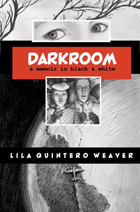 Darkroom: A Memoir in Black and White
Lila Quintero Weaver
University of Alabama Press, 2012 Darkroom: A Memoir in Black and White is an arresting and moving personal story about childhood, race, and identity in the American South, rendered in stunning illustrations by the author, Lila Quintero Weaver. In 1961, when Lila was five, she and her family emigrated from Buenos Aires, Argentina, to Marion, Alabama, in the heart of Alabama’s Black Belt. As educated, middle-class Latino immigrants in a region that was defined by segregation, the Quinteros occupied a privileged vantage from which to view the racially charged culture they inhabited. Weaver and her family were firsthand witnesses to key moments in the civil rights movement. But Darkroom is her personal story as well: chronicling what it was like being a Latina girl in the Jim Crow South, struggling to understand both a foreign country and the horrors of our nation’s race relations. Weaver, who was neither black nor white, observed very early on the inequalities in the American culture, with its blonde and blue-eyed feminine ideal. Throughout her life, Lila has struggled to find her place in this society and fought against the discrimination around her.
Darktown Follies
Amaud Johnson
Tupelo Press, 2013 Darktown Follies, Amaud Jamaul Johnson’s daring and surprising new collection of poems, responds to Black Vaudeville, specifically the personal and professional challenges African American variety performers faced in the early twentieth century. Johnson is fascinated by jokes that aren’t funny — particularly, what it means when humor fails or reveals something unintended about our national character. Darktown Follies is an act of self-sabotage, a poet’s willful attempt at recklessness, abandoning the “good sense” God gave him, as an effort to explore the boundaries and intersections of race and humor.
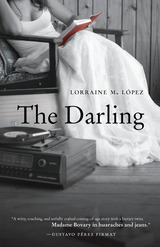 The Darling
Lorraine M. López
University of Arizona Press, 2015 Latina bibliophile Caridad falls out of love again and again, with much help from Anton Chekhov, Gustave Flaubert, Theodore Dreiser, D. H. Lawrence, Vladimir Nabokov, Thomas Hardy, and other deceased white men of letters. Raised in a household of women, she rejects examples of womanhood offered by her long-suffering mother, her caustic eldest sister Felicia, and her pliant and sentimental middle sister Esperanza. Instead Caridad, a compulsive reader, educates herself about love and what it means to be a sentient and intelligent woman by reading classic literature written by men, and supplements this with life lessons gleaned from her relationships.
Though set in Los Angeles from the mid-1970s to the mid-1980s, the narrative reinscribes Anton Chekhov’s short story, “The Darling,” first published in 1899. Like Chekhov’s protagonist, Caridad engages in various relationships in her search for love and fulfillment. Rather than absorbing beliefs held by the men in her life, as does Chekhov’s heroine, Caridad instead draws on her lovers’ resources in attempting to improve and educate herself. Apart from Chekhov, various authors of classic literature further guide Caridad’s quest to find herself and to find love, inspiring her longing for love, while also enabling her to disentangle herself from unsatisfying to disastrous relationships by encouraging her to strive for an ideal.
In a moment of clarity, Caridad compares herself to a trapeze artist near the top of a striped tent as she flies from one man to the next, expecting to be caught and held until she is ready to leap again. Flying, she wonders—or is she falling?
Darling Nova
Melissa Cundieff
Autumn House Press, 2018 This collection is musical, haunting, and simmering with life. Cundieff’s poems deal with loss and change through images that are startling in their originality. These poems will stay with you; they will remind you what poems can do.
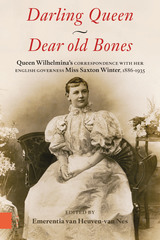 Darling Queen — Dear old Bones: Queen Whilemina's Correspondence with her English Governess Miss Saxton Winter, 1886–1935
Edited by Emerentia van Heuven-van Nes
Amsterdam University Press, 2017 This book presents a remarkable collection of letters from Queen Wilhelmina of the Netherlands (1880–1962) and her governess, Elizabeth Saxton Winter (1855–1936), an Englishwoman. The earliest letters are those of a child, sent to Miss Winter when she was on holiday in England, but after Wilhelmina’s education was finished in 1896 and she had no more need of a governess, she continued to write to Winter weekly. Her long letters cover a wide range of subjects: including her perspective on people and events, encounters with famous individuals, kings and emperors, but also sad times and loneliness, her belief in the Almighty, and above all, her development to her role as queen – her inauguration was in 1898 – and the high seriousness with which she regarded her duties. The resulting volume offers unprecedented insight into her life as child of her mother queen-regent Emma, as queen, as wife of prince Hendrik and as mother of princess Juliana.
Darney's Circuit Modelling for Electromagnetic Compatibility
Ian B. Darney
The Institution of Engineering and Technology, 2025 Electromagnetic interference or compatibility is a challenge faced by circuit designers across all areas of research, applications and industries, and is the subject of strict regulatory requirements. Darney's Circuit Modelling for Electromagnetic Compatibility, 2nd Edition shows how the analytical tools of circuit theory can be used to simulate the coupling of interference into, and out of, any signal link in the system being reviewed. This approach offers EMC testers and product designers a tool to work with at an early stage, before running expensive Faraday cage tests, which offers insight into whether a design is on the right track to achieving its design specification and so saving time and money.
Darney's Circuit Theory and Modelling: Updated and extended for EMC/EMI
Ian B. Darney
The Institution of Engineering and Technology, 2024 The equipotential earth is a fundamental requirement of circuit theory, because it dramatically reduces the complexity of the mathematics required to simulate a circuit. Unfortunately, in the real world, no such equipotential earth exists, nor can it ever do so, which means simulating a circuit to evaluate its electromagnetic compatibility (EMC) and susceptibility to electromagnetic interference (EMI) is largely dependent on using the Maxwell equations. The Maxwell equations are inherently complex, however, and so have high processing power requirements and, as with all complex systems, there is a propensity to generate and magnify errors.
A Dartmouth Reader
Edited by Francis Brown
Dartmouth College Press, 2002 A blend of “the light and the serious, the enlightening and the entertaining” that have formed part of the Dartmouth story since Eleazar Wheelock went into the wilderness.
Dartmouth Veterans: Vietnam Perspectives
Edited by Phillip C. Schaefer
Brandeis University Press, 2014 These are tales of what it was like for young men to go from the bucolic hills of New Hampshire to a land wracked by war and violence. The result is a collection of more than fifty accounts, showing the variety of experiences and reactions to this dramatic period in American history. Some soldiers were drafted, some volunteered; some supported the war, but many turned against it. Common to all the stories is the way in which war changes men, for good and ill, and the way in which the Vietnam experience colored so much of the rest of these writers’ lives.
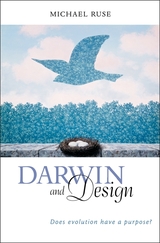 Darwin and Design: Does Evolution Have a Purpose?
Michael Ruse
Harvard University Press, 2004 The intricate forms of living things bespeak design, and thus a creator: nearly 150 years after Darwin's theory of natural selection called this argument into question, we still speak of life in terms of design--the function of the eye, the purpose of the webbed foot, the design of the fins. Why is the "argument from design" so tenacious, and does Darwinism--itself still evolving after all these years--necessarily undo it?
The definitive work on these contentious questions, Darwin and Design surveys the argument from design from its introduction by the Greeks, through the coming of Darwinism, down to the present day. In clear, non-technical language Michael Ruse, a well-known authority on the history and philosophy of Darwinism, offers a full and fair assessment of the status of the argument from design in light of both the advances of modern evolutionary biology and the thinking of today's philosophers--with special attention given to the supporters and critics of "intelligent design."
The first comprehensive history and exposition of Western thought about design in the natural world, this important work suggests directions for our thinking as we move into the twenty-first century. A thoroughgoing guide to a perennially controversial issue, the book makes its own substantial contribution to the ongoing debate about the relationship between science and religion, and between evolution and its religious critics.
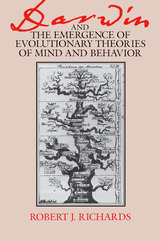 Darwin and the Emergence of Evolutionary Theories of Mind and Behavior
Robert J. Richards
University of Chicago Press, 1987 With insight and wit, Robert J. Richards focuses on the development of evolutionary theories of mind and behavior from their first distinct appearance in the eighteenth century to their controversial state today. Particularly important in the nineteenth century were Charles Darwin's ideas about instinct, reason, and morality, which Richards considers against the background of Darwin's personality, training, scientific and cultural concerns, and intellectual community. Many critics have argued that the Darwinian revolution stripped nature of moral purpose and ethically neutered the human animal. Richards contends, however, that Darwin, Herbert Spencer, and their disciples attempted to reanimate moral life, believing that the evolutionary process gave heart to unselfish, altruistic behavior.
"Richards's book is now the obvious introduction to the history of ideas about mind and behavior in the nineteenth century."—Mark Ridley, Times Literary Supplement
"Not since the publication of Michael Ghiselin's The Triumph of the Darwinian Method has there been such an ambitious, challenging, and methodologically self-conscious interpretation of the rise and development and evolutionary theories and Darwin's role therein."—John C. Greene, Science
"His book . . . triumphantly achieves the goal of all great scholarship: it not only informs us, but shows us why becoming thus informed is essential to understanding our own issues and projects."—Daniel C. Dennett, Philosophy of Science
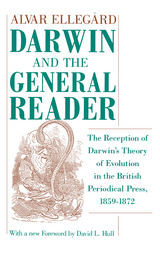 Darwin and the General Reader: The Reception of Darwin's Theory of Evolution in the British Periodical Press, 1859-1872
Alvar Ellegård
University of Chicago Press, 1990 Drawing on his investigation of over one hundred mid-Victorian British newspapers and periodicals, Alvar Ellegård describes and analyzes the impact of Darwin's theory of evolution during the first dozen years after the publication of the Origin of Species. Although Darwin's book caused an immediate stir in literary and scientific periodicals, the popular press largely ignored it. Only after the work's implications for theology and the nature of man became evident did general publications feel compelled to react; each social group responded according to his own political and religious prejudices. Ellegård charts the impact of this revolution in science, maintaining that although the idea of evolution was generally accepted, Darwin's primary contribution, the theory of natural selection, was either ignored or rejected among the public.
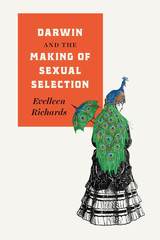 Darwin and the Making of Sexual Selection
Evelleen Richards
University of Chicago Press, 2017 Darwin’s concept of natural selection has been exhaustively studied, but his secondary evolutionary principle of sexual selection remains largely unexplored and misunderstood. Yet sexual selection was of great strategic importance to Darwin because it explained things that natural selection could not and offered a naturalistic, as opposed to divine, account of beauty and its perception.
Only now, with Darwin and the Making of Sexual Selection, do we have a comprehensive and meticulously researched account of Darwin’s path to its formulation—one that shows the man, rather than the myth, and examines both the social and intellectual roots of Darwin’s theory. Drawing on the minutiae of his unpublished notes, annotations in his personal library, and his extensive correspondence, Evelleen Richards offers a richly detailed, multilayered history. Her fine-grained analysis comprehends the extraordinarily wide range of Darwin’s sources and disentangles the complexity of theory, practice, and analogy that went into the making of sexual selection. Richards deftly explores the narrative strands of this history and vividly brings to life the chief characters involved. A true milestone in the history of science, Darwin and the Making of Sexual Selection illuminates the social and cultural contingencies of the shaping of an important—if controversial—biological concept that is back in play in current evolutionary theory.
Darwin and the Novelists: Patterns of Science in Victorian Fiction
George Levine
University of Chicago Press, 1991 Levine shows how Darwin's ideas affected nineteenth-century novelists—from Dickens and Trollope to Conrad. "Levine stands in our day as the premier critic and commentator on Victorian prose."—Frank M. Turner, Nineteenth-Century Literature. "Magnificently written, with a care and delicacy worthy of its subject."—Nina Auerbach, University of Pennsylvania
 Darwin and the Novelists: Patterns of Science in Victorian Fiction
George Levine
Harvard University Press, 1988 Darwin’s theory thrust human life into time and nature and subjected it to naturalistic rather than spiritual or moral analysis. Insisting on gradual and regular–lawful–change, Darwinian thought nevertheless requires acknowledgment of chance and randomness for a full explanation of biological phenomena. George Levine shows how these conceptions affected nineteenth–century novelists—from Dickens and Trollope to Conrad—and draws illuminating contrasts with the pre–Darwinian novel and the perspective of natural theology.
Levine demonstrates how even writers ostensibly uninterested in science absorbed and influenced its vision. A central chapter treats the almost aggressively unscientific Trollope as the most Darwinian of the novelists, who worked out a gradualist realism that is representative of the mainstream of Victorian fiction and strikingly consonant with key Darwinian ideas. Levine’s boldly conceived analysis of such authors as Scott and Dickens demonstrates the pervasiveness and power of this revolution in thought and sheds new light on Victorian realism.
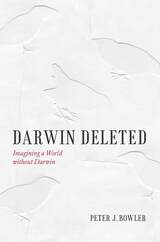 Darwin Deleted: Imagining a World without Darwin
Peter J. Bowler
University of Chicago Press, 2013 The ideas and terminology of Darwinism are so pervasive these days that it seems impossible to avoid them, let alone imagine a world without them. But in this remarkable rethinking of scientific history, Peter J. Bowler does just that. He asks: What if Charles Darwin had not returned from the voyage of the Beagle and thus did not write On the Origin of Species? Would someone else, such as Alfred Russel Wallace, have published the selection theory and initiated a similar transformation? Or would the absence of Darwin’s book have led to a different sequence of events, in which biology developed along a track that did not precipitate a great debate about the impact of evolutionism? Would there have been anything equivalent to social Darwinism, and if so would the alternatives have been less pernicious and misappropriated?
In Darwin Deleted, Bowler argues that no one else, not even Wallace, was in a position to duplicate Darwin’s complete theory of evolution by natural selection. Evolutionary biology would almost certainly have emerged, but through alternative theories, which were frequently promoted by scientists, religious thinkers, and moralists who feared the implications of natural selection. Because non-Darwinian elements of evolutionism flourished for a time in the real world, it is possible to plausibly imagine how they might have developed, particularly if the theory of natural selection had not emerged until decades after the acceptance of the basic idea of evolution. Bowler’s unique approach enables him to clearly explain the non-Darwinian tradition—and in doing so, he reveals how the reception of Darwinism was historically contingent. By taking Darwin out of the equation, Bowler is able to fully elucidate the ideas of other scientists, such as Richard Owen and Thomas Huxley, whose work has often been misunderstood because of their distinctive responses to Darwin.
Darwin Deleted boldly offers a new vision of scientific history. It is one where the sequence of discovery and development would have been very different and would have led to an alternative understanding of the relationship between evolution, heredity, and the environment—and, most significantly, a less contentious relationship between science and religion. Far from mere speculation, this fascinating and compelling book forces us to reexamine the preconceptions that underlie many of the current controversies about the impact of evolutionism. It shows how contingent circumstances surrounding the publication of On the Origin of Species polarized attitudes in ways that still shape the conversation today.
 Darwin in the Twenty-First Century: Nature, Humanity, and God
Phillip R. Sloan
University of Notre Dame Press, 2015 This collection of essays originated in conferences held at the Gregorian University in Rome and at the University of Notre Dame to commemorate the 150th anniversary of the publication of Charles Darwin's On the Origin of Species. These essays, by leading scholars, assess the continuing relevance of Darwin's work from the perspectives of biological science, history, philosophy, and theology. The contributors focus on three primary areas: developments in evolutionary biology that open up new ground for interdisciplinary dialogue; reflections on human evolution, with a particular focus on evolution and ethics; and new reflections on theology and evolution, particularly from a Roman Catholic perspective, drawing both on traditional perspectives and on new currents in Catholic theology.
“This volume presents the best scholarship available on the present and future developments in evolutionary science and its implications for the humanities. It will reward careful study by evolutionary biologists and social scientists, but also philosophers and theologians—or indeed, by any reflective person seeking to be informed about up-to-date analysis of its three main topics: Nature, Humanity, and God. The editors of this volume are to be congratulated for producing a volume that makes available a rich array of voices from a variety of disciplines and schools of thought. It is a must read for anyone who wishes to be informed about the interpretation of Darwin in the twenty-first century.” —Stephen J. Pope, Boston College
"Darwin in the Twenty-First Century aims to present 'new reflections that anticipate the future of scientific and philosophical inquiry about evolution,' rather than giving an overview of all issues discussed in the conference or beyond. The volume focuses on present and future developments within evolutionary science and the impact on, and relation to, the humanities. These are central and the most exciting questions, and the volume gives multiple answers to how the discourse could be shaped in the future, both scientifically and from the perspective of the humanities." —Hille Haker, Loyola University Chicago
Darwin Machines and the Nature of Knowledge
Henry Plotkin
Harvard University Press, 1994 Bringing together evolutionary biology, psychology, and philosophy, Henry Plotkin presents a new science of knowledge that traces an unbreakable link between instinct and our ability to know. Since our ability to know our world depends primarily on what we call intelligence, intelligence must be understood as an extension of instinct. The capacity for knowledge is deeply rooted in our biology and, in a special sense, is shared by all living things.
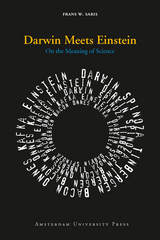 Darwin Meets Einstein: On the Meaning of Science
Frans W. Saris
Amsterdam University Press, 2009
Why do humans engage in scientific research? For some, it’s simply a career. Others are drawn to science for its potential financial rewards. And still others do it out of competitiveness—to be the first in their field. But in Darwin Meets Einstein Frans W. Saris argues that in our postmodern times we have lost the meaning of science—that science is not about competition, nor about creating wealth, nor about the joy of discovery. Science is for survival—the survival of humans, the survival of life.
In this accessible collection of essays and columns, Saris brings together in conversation a number of great minds—Charles Darwin, Baruch Spinoza, Niko Tinbergen, Francis Bacon, Heike Kamerlingh Onnes, Franz Kafka, and Albert Einstein—to answer the question: why science? With selections like “Diary of a Physicist,” “The Scientific Life,” “The Mother of All Knowledge,” and “Science Through the Looking Glass of Literature,” Darwin Meets Einstein will entertain its readers and ultimately encourage them to reconsider the meaning—and the purpose—of science.
Darwinian Myths: The Legends and Misuses of a Theory
Edward Caudill
University of Tennessee Press, 1997
In Darwinian Myths, Edward Caudill examines the ability of Darwin's theory to inspire legends, focusing particularly on the impact of social Darwinism on popular culture. This compelling testimony to the power of myth shows the ways in which, over the years, Darwin's ideas—twisted, truncated, and misapplied—have been appropriated by individuals, governments, and cultural elites to lend credibility to xenophobic, racist, and imperialist political movements and policies.
Caudill uses newspaper and magazine accounts and correspondence to trace the myth-making and promotional efforts of Darwin himself, as well as the transformation of his empirically based theory into the philosophy of social Darwinism.
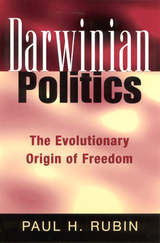 Darwinian Politics: The Evolutionary Origin of Freedom
Rubin, Paul H.
Rutgers University Press, 2002 Darwinian Politics is the first book to examine political behavior from a modern evolutionary perspective. Here, Paul H. Rubin discusses group or social behavior, including ethnic and racial conflict; altruism and cooperation; envy; political power; and the role of religion in politics ¾ issues that have formed the hallmark of human social behavior.
Adopting a Darwinian perspective, Rubin demonstrates why certain political-moral philosophies succeed or fail in modern Western culture. He begins by showing relationships between biology and natural selection and the history of political philosophy and explains why desirable policies must treat each person as an individual. He considers the notion of group identity and conflict, observing a human propensity to form in-groups, a behavior that does not necessitate but often leads to deviancies such as racism. In discussing altruism, Rubin shows that people are willing to aid the poor if they are convinced that the recipients are not shirkers or free loaders. This explains why recent welfare reforms are widely viewed as successful. Envy, a trait that is often counterproductive in today’s world, is also addressed. In comparing major moral philosophical systems, Rubin contends that utilitarianism is broadly consistent with our evolved preferences. He illustrates evolutionary premises for religious belief and for desires to regulate the behavior of others, and how in today’s world such regulation may not serve any useful purpose.
Ultimately, Rubin argues that humans naturally seek political freedom, and modern Western society provides more freedom than any previous one. In light of his analysis, the author extrapolates that, while there are still areas for improvements, humans have done a remarkably good job of satisfying their evolved political preferences.
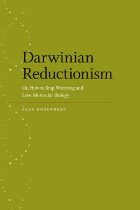 Darwinian Reductionism: Or, How to Stop Worrying and Love Molecular Biology
Alexander Rosenberg
University of Chicago Press, 2006 After the discovery of the structure of DNA in 1953, scientists working in molecular biology embraced reductionism—the theory that all complex systems can be understood in terms of their components. Reductionism, however, has been widely resisted by both nonmolecular biologists and scientists working outside the field of biology. Many of these antireductionists, nevertheless, embrace the notion of physicalism—the idea that all biological processes are physical in nature. How, Alexander Rosenberg asks, can these self-proclaimed physicalists also be antireductionists?
With clarity and wit, Darwinian Reductionism navigates this difficult and seemingly intractable dualism with convincing analysis and timely evidence. In the spirit of the few distinguished biologists who accept reductionism—E. O. Wilson, Francis Crick, Jacques Monod, James Watson, and Richard Dawkins—Rosenberg provides a philosophically sophisticated defense of reductionism and applies it to molecular developmental biology and the theory of natural selection, ultimately proving that the physicalist must also be a reductionist.
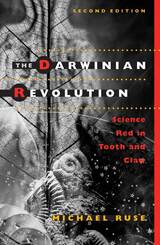 The Darwinian Revolution: Science Red in Tooth and Claw
Michael Ruse
University of Chicago Press, 1999 Originally published in 1979, The Darwinian Revolution was the first comprehensive and readable synthesis of the history of evolutionary thought. Though the years since have seen an enormous flowering of research on Darwin and other nineteenth-century scientists concerned with evolution, as well as the larger social and cultural responses to their work, The Darwinian Revolution remains remarkably current and stimulating.
For this edition Michael Ruse has written a new afterword that takes into account the research published since his book's first appearance.
"It is difficult to believe that yet another book on Darwin and the Darwinian Revolution could add anything new or contain any surprises. Ruse's book is an exception on all counts. Darwin scholars and the general reader alike can learn from it."—David L. Hull, Nature
"No other account of the Darwinian Revolution provides so detailed and sympathetic an account of the framework within which the scientific debates took place."—Peter J. Bowler, Canadian Journal of History
"A useful and highly readable synthesis. . .skillfully organized and written with verve, imagination, and welcome touches of humor."—John C. Greene, Science
 Darwinism and the Divine In America: Protestant Intellectuals and Organic Evolution, 1859-1900
Jon H. Roberts
University of Notre Dame Press, 2001 Originally published in 1988, Jon Roberts's book provided the first comprehensive analytical overview of public dialogue among nineteenth-century American Protestant intellectuals who struggled with the theory of organic evolution. Before the publication of Darwin's Origin of Species in 1859, most American Protestant intellectuals valued science, especially natural history, for supplying data that appeared to be invaluable for defending many major tenets of the Christian world view. Arguments over the scientific merits of Darwin's theory gave way to discussions of its theological implications. Roberts's book reconstructs the course of that conversation from 1875 to 1900.
"Awarded the Brewer prize of the American Society of Church History, this book provides the most detailed account to date of the reaction of American theologians to Darwinism…. [T]his study is richly suggestive and a gold mine of information." --The American Historical Review
"Essential reading for an understanding of the battle lines drawn between Protestant evolutionists and their opponents in the late twentieth as well as the late nineteenth century." --Journal of the American Academy of Religion
"Jon H. Roberts has scrutinized the response of Protestant apologists to this major challenge to their faith in such painstaking and exhaustive detail that his effort will surely stand as the book of record."--The Journal of American History
"While many contemporary historians have become captivated with sociocultural interpretations of the past, Roberts demonstrates the continuing viability of intellectual history. . . . this book offers one of the fairest historical expositions of the anti-Darwinists to be found in scholarly literature." --The Christian Century
JON H. ROBERTS is a professor of history at the University of Wisconsin-Stevens Point. Darwinism and the Divine in America was awarded the Frank S. and Elizabeth D. Brewer Prize of the American Society of Church History.
----------
"Professor Roberts' thesis is neat, closely argued and convincing, and his scholarship is prodigious." --Journal of American Studies
". . . . a rich resource for students of American history and culture. . . . an impressive scholarly accomplishment upon which much subsequent research shall be built." --The Journal of Religion
"For those with an interest in the creation-evolution controversies, Darwin and the Divine in America is an important and helpful book." --Theology Today
"This thoroughly researched book establishes a new standard for discussing connections between evolutionary theory and Protestant thought in nineteenth-century America."--Isis
"...Roberts' award-winning Darwinism and the Divine in America remains a well documented and valuable source for understanding the intellectual and religious concerns raised by Darwin's transmutation theory in the late nineteenth-century US."--Religious Studies Review, January 2003
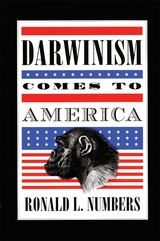 Darwinism Comes to America
Ronald L. Numbers
Harvard University Press, 1998 In 1997, even as Pope John Paul II was conceding that evolution was "more than just a theory," local school boards and state legislatures were still wrangling over the teaching of origins--and nearly half of all Americans polled believed in the recent special creation of the first humans. Why do so many Americans still resist the ideas laid out by Darwin in On the Origin of Species? Focusing on crucial aspects of the history of Darwinism in America, Ronald Numbers gets to the heart of this question.
Judiciously assessing the facts, Numbers refutes a host of widespread misconceptions: about the impact of Darwin's work on the religious ideas of scientists, about the character of the issues that exercised scientists of the immediate post-Darwin generation, about the Scopes trial of 1925 and its consequences for American schools, and about the regional and denominational distribution of pro- and anti-evolutionary sentiments.
Displaying the expertise that has made Numbers one of the most respected historians of his generation, Darwinism Comes to America provides a much-needed historical perspective on today's quarrels about creationism and evolution--and illuminates the specifically American nature of this struggle.
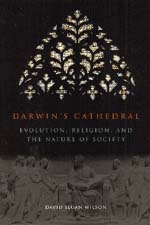 Darwin's Cathedral: Evolution, Religion, and the Nature of Society
David Sloan Wilson
University of Chicago Press, 2003 One of the great intellectual battles of modern times is between evolution and religion. Until now, they have been considered completely irreconcilable theories of origin and existence. David Sloan Wilson's Darwin's Cathedral takes the radical step of joining the two, in the process proposing an evolutionary theory of religion that shakes both evolutionary biology and social theory at their foundations.
The key, argues Wilson, is to think of society as an organism, an old idea that has received new life based on recent developments in evolutionary biology. If society is an organism, can we then think of morality and religion as biologically and culturally evolved adaptations that enable human groups to function as single units rather than mere collections of individuals? Wilson brings a variety of evidence to bear on this question, from both the biological and social sciences. From Calvinism in sixteenth-century Geneva to Balinese water temples, from hunter-gatherer societies to urban America, Wilson demonstrates how religions have enabled people to achieve by collective action what they never could do alone. He also includes a chapter considering forgiveness from an evolutionary perspective and concludes by discussing how all social organizations, including science, could benefit by incorporating elements of religion.
Religious believers often compare their communities to single organisms and even to insect colonies. Astoundingly, Wilson shows that they might be literally correct. Intended for any educated reader, Darwin's Cathedral will change forever the way we view the relations among evolution, religion, and human society.
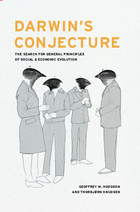 Darwin's Conjecture: The Search for General Principles of Social and Economic Evolution
Geoffrey M. Hodgson and Thorbjørn Knudsen
University of Chicago Press, 2010 Of paramount importance to the natural sciences, the principles of Darwinism, which involve variation, inheritance, and selection, are increasingly of interest to social scientists as well. But no one has provided a truly rigorous account of how the principles apply to the evolution of human society—until now.
In Darwin’s Conjecture, Geoffrey Hodgson and Thorbjørn Knudsen reveal how the British naturalist’s core concepts apply to a wide range of phenomena, including business practices, legal systems, technology, and even science itself. They also critique some prominent objections to applying Darwin to social science, arguing that ultimately Darwinism functions as a general theoretical framework for stimulating further inquiry. Social scientists who adopt a Darwinian approach, they contend, can then use it to frame and help develop new explanatory theories and predictive models.
This truly pathbreaking workat long last makes the powerful conceptual tools of Darwin available to the social sciences and will be welcomed by scholars and students from a range of disciplines.
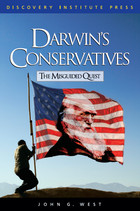 Darwin's Conservatives: The Misguided Quest
John G. West
American Philanthropic, 2006
While conservatives are presumed to be critical of Darwin’s theory, many on the right, such as George Will, James Q. Wilson, and Larry Arnhart, have mounted a vigorous defense of Darwinism. As Discovery Institute's John West explains in his book, Darwin's Conservatives: The Misguided Quest, their attempts to reconcile conservatism and Darwinian biology misunderstand both.
In this small but incisive book, Dr. West addresses how Darwin’s theory, contrary to its conservative champions, manifestly does not reinforce the teachings of conservatism. According to West, Darwinism promotes moral relativism rather than traditional morality. It fosters utopianism rather than limited government. It is corrosive, rather than supportive, of both free will and religious belief. Finally, and most importantly, Darwinian evolution is in tension with the scientific evidence, and conservatism cannot hope to strengthen itself by relying on Darwinism’s increasingly shaky empirical foundations. This book issues a challenge to conservatives they cannot afford to ignore. According to Prof. J. Budziszewski of the University of Texas, Austin, hails the book for “showing clearly that Darwinism is not a source of conservative insight into human nature, but only a source of confusion.”
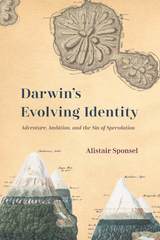 Darwin's Evolving Identity: Adventure, Ambition, and the Sin of Speculation
Alistair Sponsel
University of Chicago Press, 2018 Why—against his mentor’s exhortations to publish—did Charles Darwin take twenty years to reveal his theory of evolution by natural selection? In Darwin’s Evolving Identity, Alistair Sponsel argues that Darwin adopted this cautious approach to atone for his provocative theorizing as a young author spurred by that mentor, the geologist Charles Lyell. While we might expect him to have been tormented by guilt about his private study of evolution, Darwin was most distressed by harsh reactions to his published work on coral reefs, volcanoes, and earthquakes, judging himself guilty of an authorial “sin of speculation.” It was the battle to defend himself against charges of overzealous theorizing as a geologist, rather than the prospect of broader public outcry over evolution, which made Darwin such a cautious author of Origin of Species.
Drawing on his own ambitious research in Darwin’s manuscripts and at the Beagle’s remotest ports of call, Sponsel takes us from the ocean to the Origin and beyond. He provides a vivid new picture of Darwin’s career as a voyaging naturalist and metropolitan author, and in doing so makes a bold argument about how we should understand the history of scientific theories.
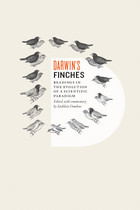 Darwin's Finches: Readings in the Evolution of a Scientific Paradigm
Edited, with Commentary, by Kathleen Donohue
University of Chicago Press, 2011 Two species come to mind when one thinks of the Galapagos Islands—the giant tortoises and Darwin’s fabled finches. While not as immediately captivating as the tortoises, these little brown songbirds and their beaks have become one of the most familiar and charismatic research systems in biology, providing generations of natural historians and scientists a lens through which to view the evolutionary process and its role in morphological differentiation.
In Darwin’s Finches, Kathleen Donohue excerpts and collects the most illuminating and scientifically significant writings on the finches of the Galapagos to teach the fundamental principles of evolutionary theory and to provide a historical record of scientific debate. Beginning with fragments of Darwin’s Galapagos field notes and subsequent correspondence, and moving through the writings of such famed field biologists as David Lack and Peter and Rosemary Grant, the collection demonstrates how scientific processes have changed over time, how different branches of biology relate to one another, and how they all relate to evolution. As Donohue notes, practicing science today is like entering a conversation that has been in progress for a long, long time. Her book provides the history of that conversation and an invitation to join in. Students of both evolutionary biology and history of science will appreciate this compilation of historical and contemporary readings and will especially value Donohue’s enlightening commentary.
 Darwin's Footprint: Cultural Perspectives on Evolution in Greece (1880–1930s)
Maria Zarimis
Central European University Press, 2015 Darwin’s Footprint examines the impact of Darwinism in Greece, investigating how it has shaped Greece in terms of its cultural and intellectual history, and in particular its literature. The book demonstrates that in the late 19th to early 20th centuries Darwinism and associated science strongly influenced celebrated Greek literary writers and other influential intellectuals, which fueled debate in various areas such as ‘man’s place in nature’, eugenics, the nature-nurture controversy, religion, as well as class, race and gender. In addition, the study reveals that many of these individuals were also considering alternative approaches to these issues based on Darwinian and associated biological post-Darwinian ideas. Their concerns included the Greek “race” or nation, its culture, language and identity; also politics and gender equality. Zarimis’s monograph devotes considerable space to Xenopoulos (1867-1951), notable novelist, journalist and playwright.
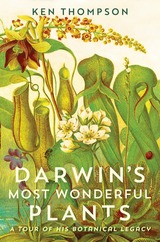 Darwin's Most Wonderful Plants: A Tour of His Botanical Legacy
Ken Thompson
University of Chicago Press, 2019 For many people, the story of Charles Darwin goes like this: he ventured to the Galapagos Islands on the Beagle, was inspired by the biodiversity of the birds he saw there, and immediately returned home to write his theory of evolution. But this simplified narrative is inaccurate and lacking: it leaves out a major part of Darwin’s legacy. He published On the Origin of Species nearly thirty years after his voyages. And much of his life was spent experimenting with and observing plants.
Darwin was a brilliant and revolutionary botanist whose observations and theories were far ahead of his time. With Darwin’s Most Wonderful Plants, biologist and gardening expert Ken Thompson restores this important aspect of Darwin’s biography while also delighting in the botanical world that captivated the famous scientist. Thompson traces how well Darwin’s discoveries have held up, revealing that many are remarkably long-lasting. Some findings are only now being confirmed and extended by high-tech modern research, while some have been corrected through recent analysis.
We learn from Thompson how Darwin used plants to shape his most famous theory and then later how he used that theory to further push the boundaries of botanical knowledge. We also get to look over Darwin’s shoulder as he labors, learning more about his approach to research and his astonishing capacity for hard work. Darwin’s genius was to see the wonder and the significance in the ordinary and mundane, in the things that most people wouldn’t look at twice.
Both Thompson and Darwin share a love for our most wonderful plants and the remarkable secrets they can unlock. This book will instill that same joy in casual gardeners and botany aficionados alike.
Darwin's Mother
Sarah Rose Nordgren
University of Pittsburgh Press, 2017 In Darwin's Mother, curious beasts are excavated in archeological digs, Charles Darwin's daughter describes the challenges of breeding pigeons, and a forest of trees shift and sigh in their sleep. With a keen sense of irony that rejects an anthropocentric worldview and an imagination both philosophical and playful, the poems in this collection are marked by a tireless curiosity about the intricate workings of life, consciousness, and humanity's place in the universe.
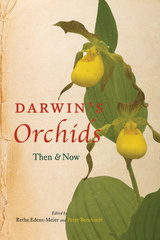 Darwin's Orchids: Then and Now
Edited by Retha Edens-Meier and Peter Bernhardt
University of Chicago Press, 2014 For biologists, 2009 was an epochal year: the bicentennial of Charles Darwin’s birth and the 150th anniversary of the publication of a book now known simply as The Origin of Species. But for many botanists, Darwin’s true legacy starts with the 1862 publication of another volume: On the Various Contrivances by Which British and Foreign Orchids Are Fertilised by Insects and on the Good Effects of Intercrossing, or Fertilisation of Orchids. This slim but detailed book with the improbably long title was the first in a series of plant studies by Darwin that continues to serve as a global exemplar in the field of evolutionary botany. In Darwin’s Orchids, an international group of orchid biologists unites to celebrate and explore the continuum that stretches from Darwin’s groundbreaking orchid research to that of today.
Mirroring the structure of Fertilisation of Orchids, Darwin’s Orchids investigates flowers from Darwin’s home in England, through the southern hemisphere, and on to North America and China as it seeks to address a set of questions first put forward by Darwin himself: What pollinates this particular type of orchid? How does its pollination mechanism work? Will an orchid self-pollinate or is an insect or other animal vector required? And how has this orchid’s lineage changed over time? Diverse in their colors, forms, aromas, and pollination schemes, orchids have long been considered ideal models for the study of plant evolution and conservation. Looking to the past, present, and future of botany, Darwin’s Orchids will be a vital addition to this tradition.
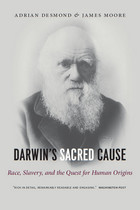 Darwin's Sacred Cause: Race, Slavery and the Quest for Human Origins
Adrian Desmond and James Moore
University of Chicago Press, 2011 There has always been a mystery surrounding Darwin: How did this quiet, respectable gentleman come to beget one of the most radical ideas in the history of human thought? It is difficult to overstate what Darwin was risking in publishing his theory of evolution. So it must have been something very powerful—a moral fire, as Desmond and Moore put it—that helped propel him. That moral fire, they argue, was a passionate hatred of slavery. In opposition to the apologists for slavery who argued that blacks and whites had originated as separate species, Darwin believed the races belonged to the same human family. Slavery was a “sin,” and abolishing it became his “sacred cause.” By extending the abolitionists’ idea of human brotherhood to all life, Darwin developed our modern view of evolution. Drawing on a wealth of fresh manuscripts, family letters, diaries, and even ships’ logs, Desmond and Moore argue that only by acknowledging Darwin’s abolitionist heritage can we fully understand the development of his groundbreaking ideas.
|
|
